August 29, 2021
Martha O'Kennon
Another HOT week. But the good news is that one of my favorite ecosystems has suddenly popped into existence. You may or may not think this is the right thing to call it, but I'm talking about the Goldenrod - all over town and up and down the country. It has been practising for a few weeks having a bit of color, but this week is when Albion suddenly turned gold along with a lot of the country. It always feels as if we have been dipped into an ocean of such a gorgeous color, and also as if the color brings a huge community of creatures that arrive and quickly settle in for a few weeks.
Here ignore the Wasp. It is incredibly hard to photograph the Goldenrod without catching some part of a living animal creature with it. In picture 2, the August Orange Day Lily has had almost exactly the month its name implies! The "cultivated" Fall Phlox (bought it at Horrock's in Battle Creek years ago) is waking up out back.
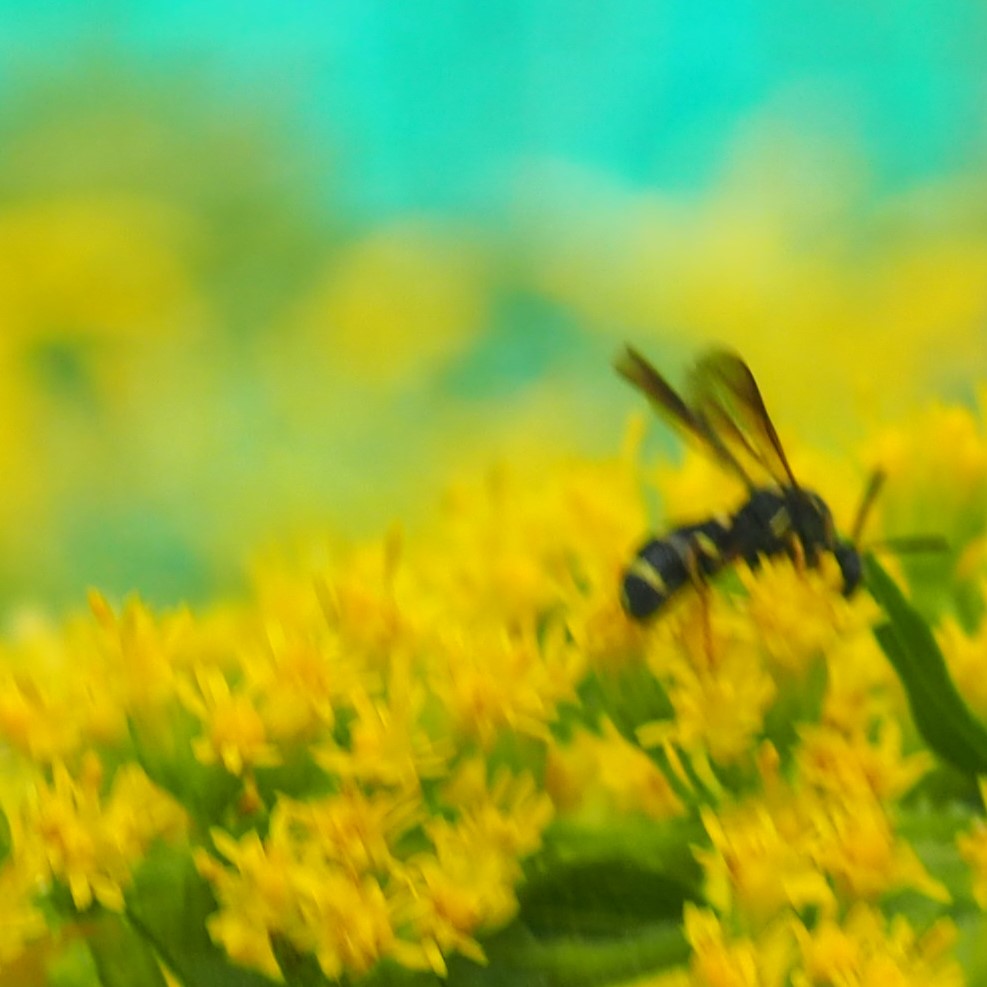
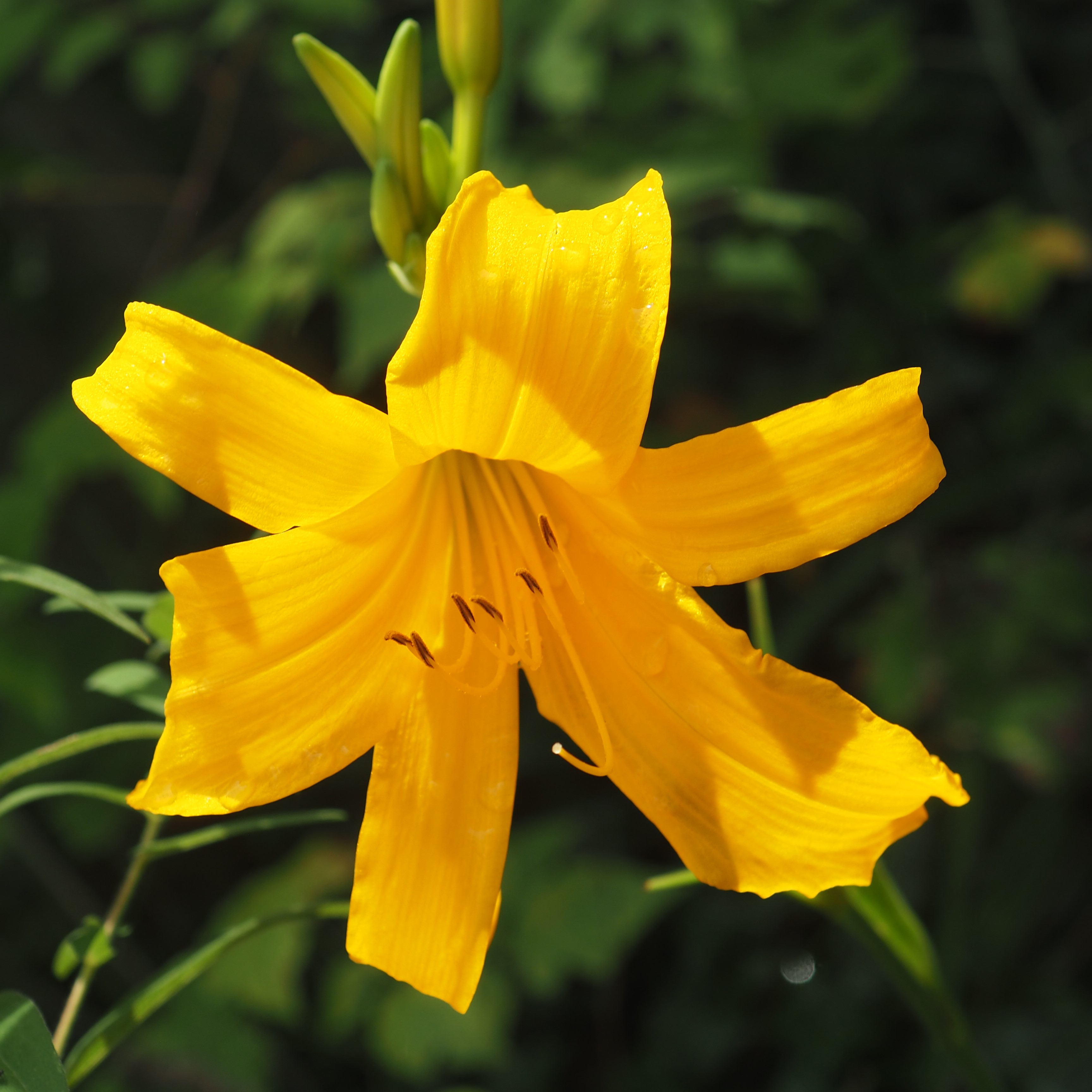

Remember that there is information in the name of the file for each image. You can see it by mousing over the
image - look at the lower left of the screen. Or you can click on the image to get to the (usually) larger image.
Then the info is displayed in the address line above. Sometimes the second click will actually display a
different view of the original image.
The Ants have had short shrift from me this week as they stay out of the way of the predators on the Goldenrod. But the less-commonly-seen Punctured Myrmicine Ant was here on the Wall of Fame this week. Of course there have been a few Eastern Black Carpenters, and then number 3, which is probably one of the smaller members of the Carpenter genus (Camponotus).
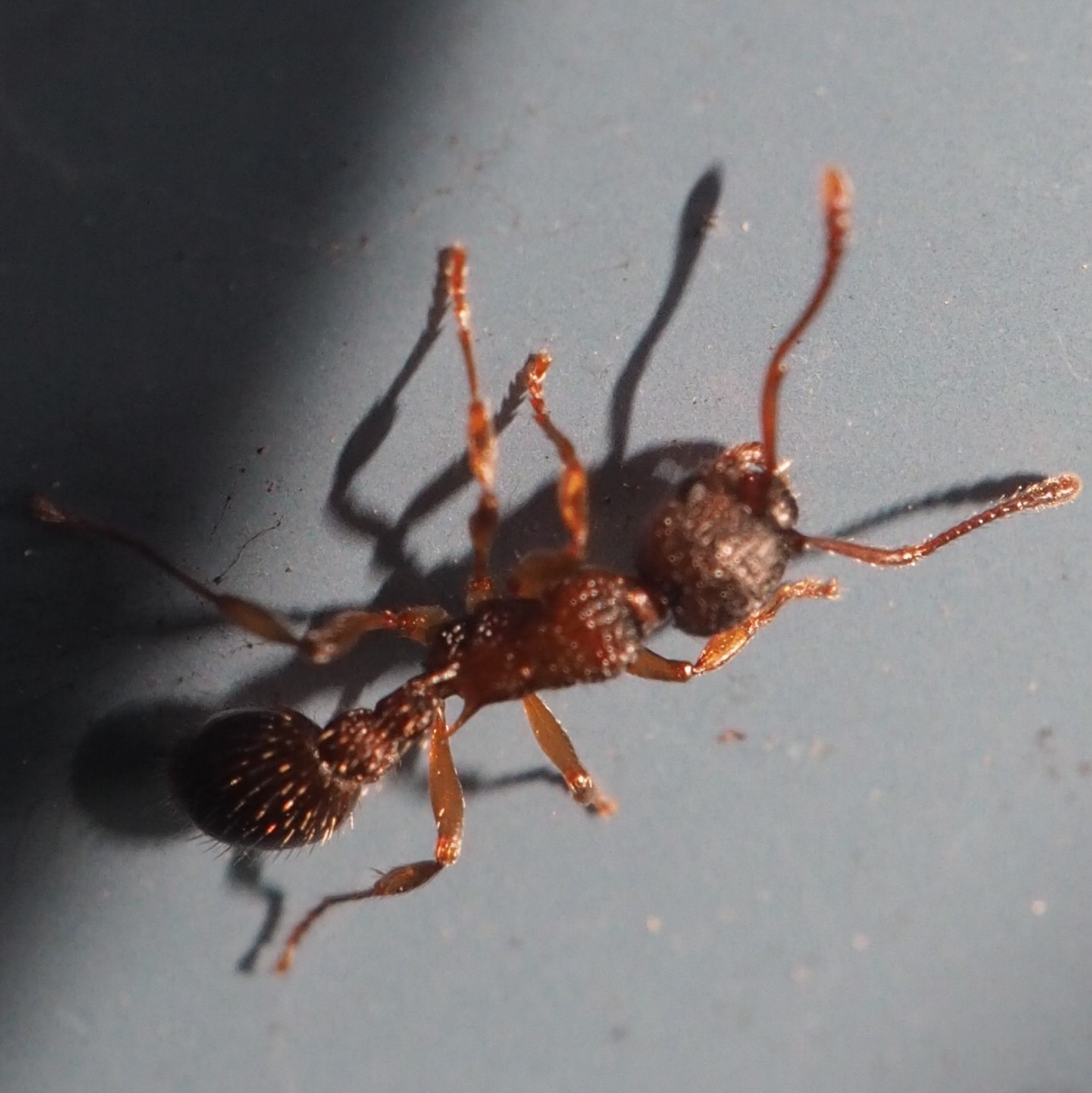
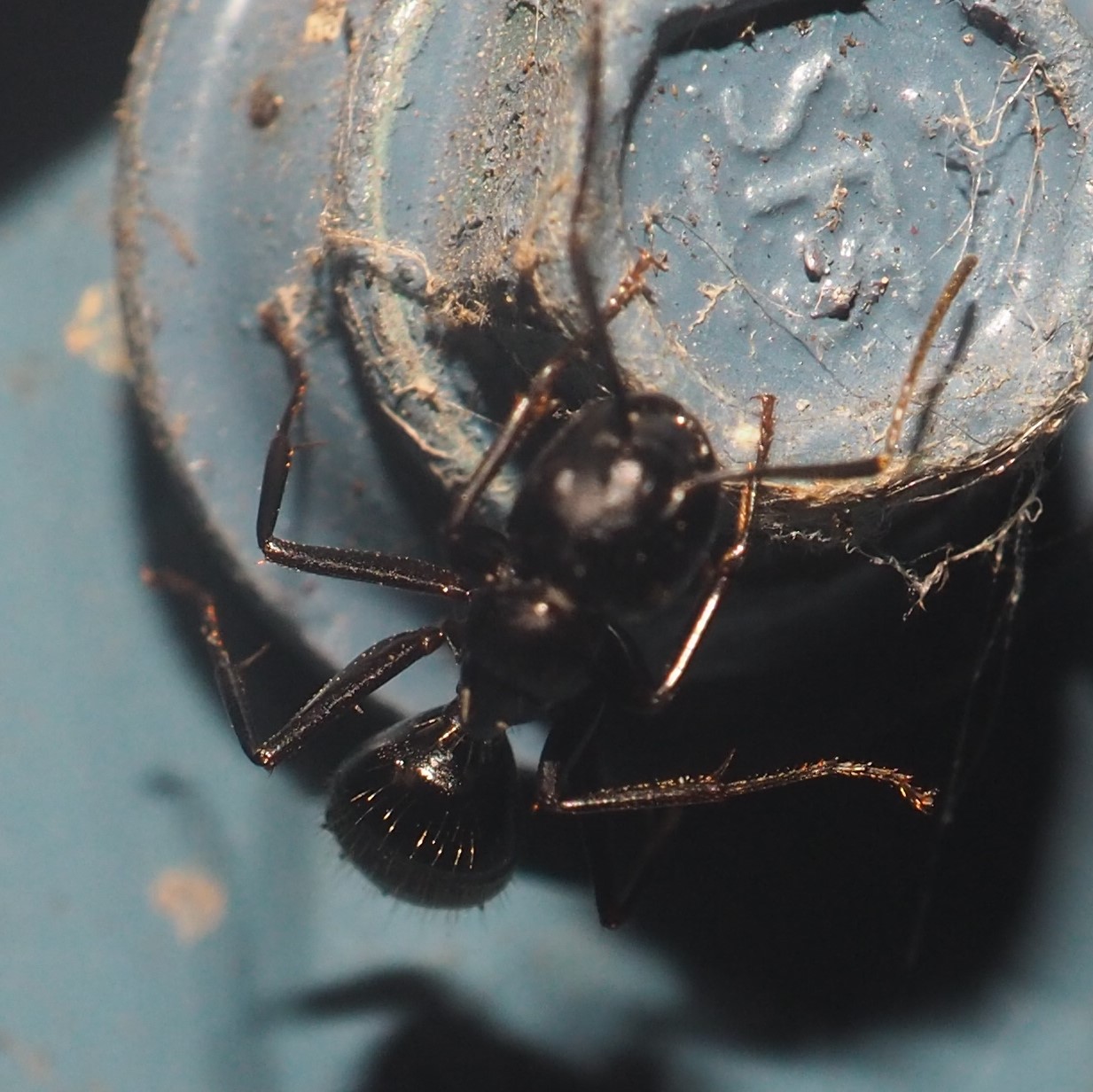
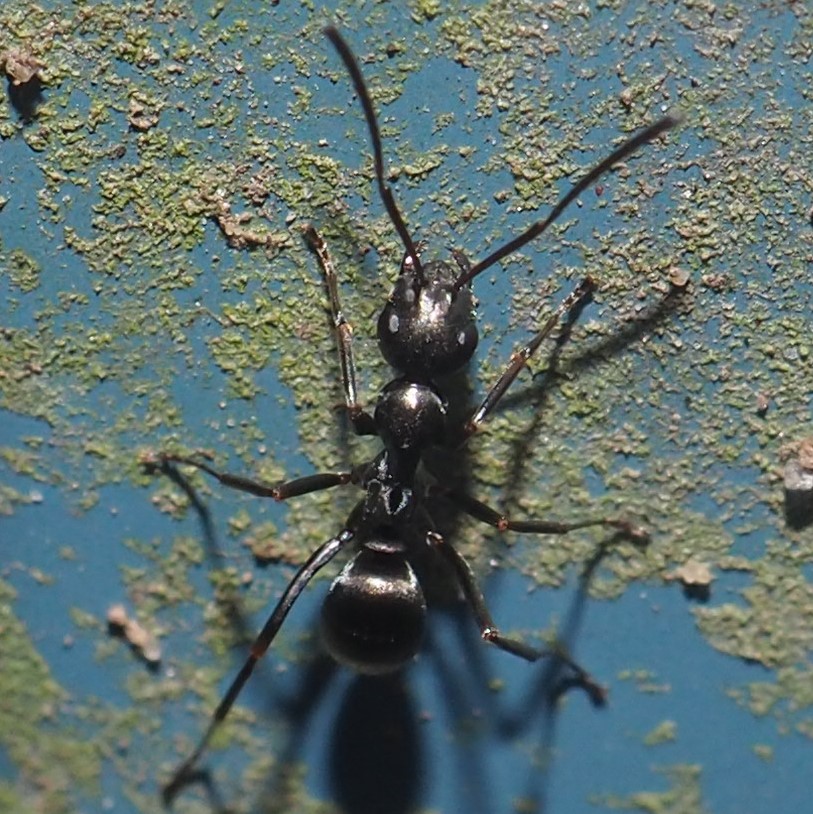
For some time we didn't see much in the way of small Barklice nymphs, but toward the end of this week, we were seeing a few young Polypsocus, Ectopsocus and Graphopsocus. Here are some Polypsocus nymphs on the South and north walls, and a female and a male adult.
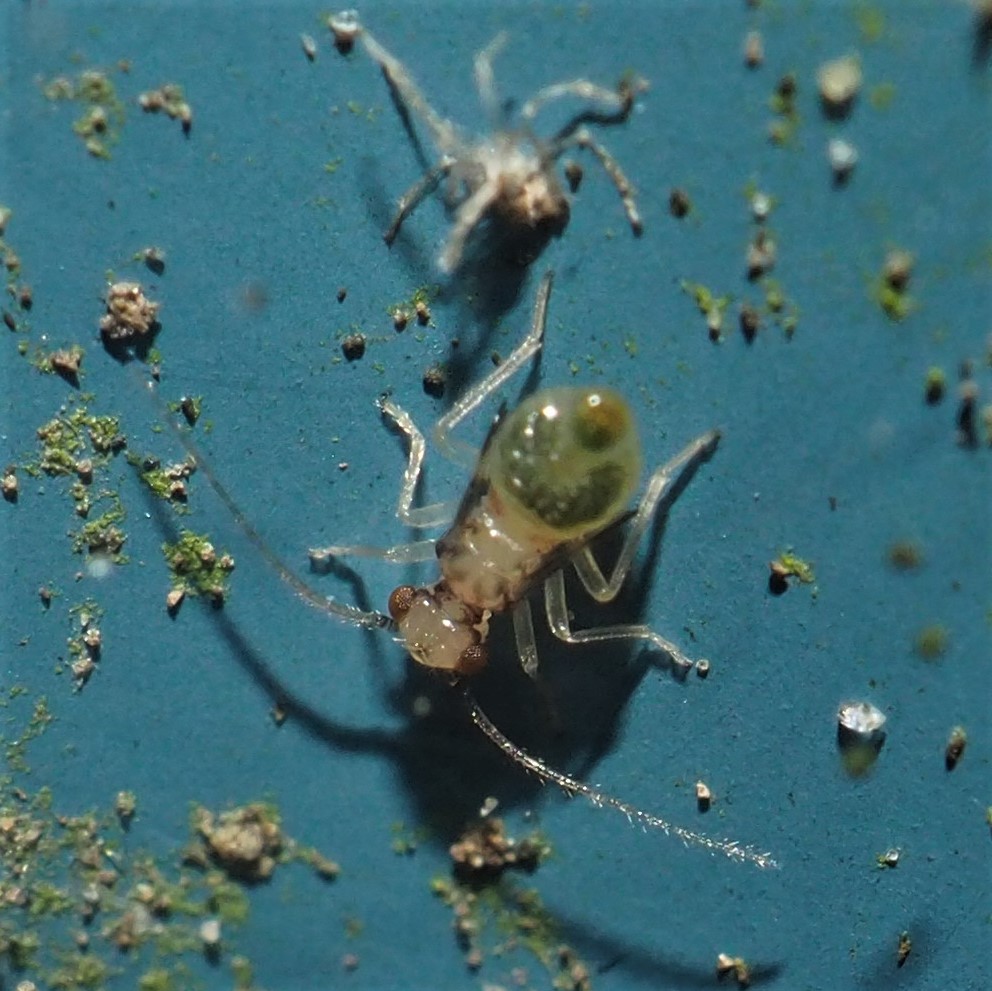
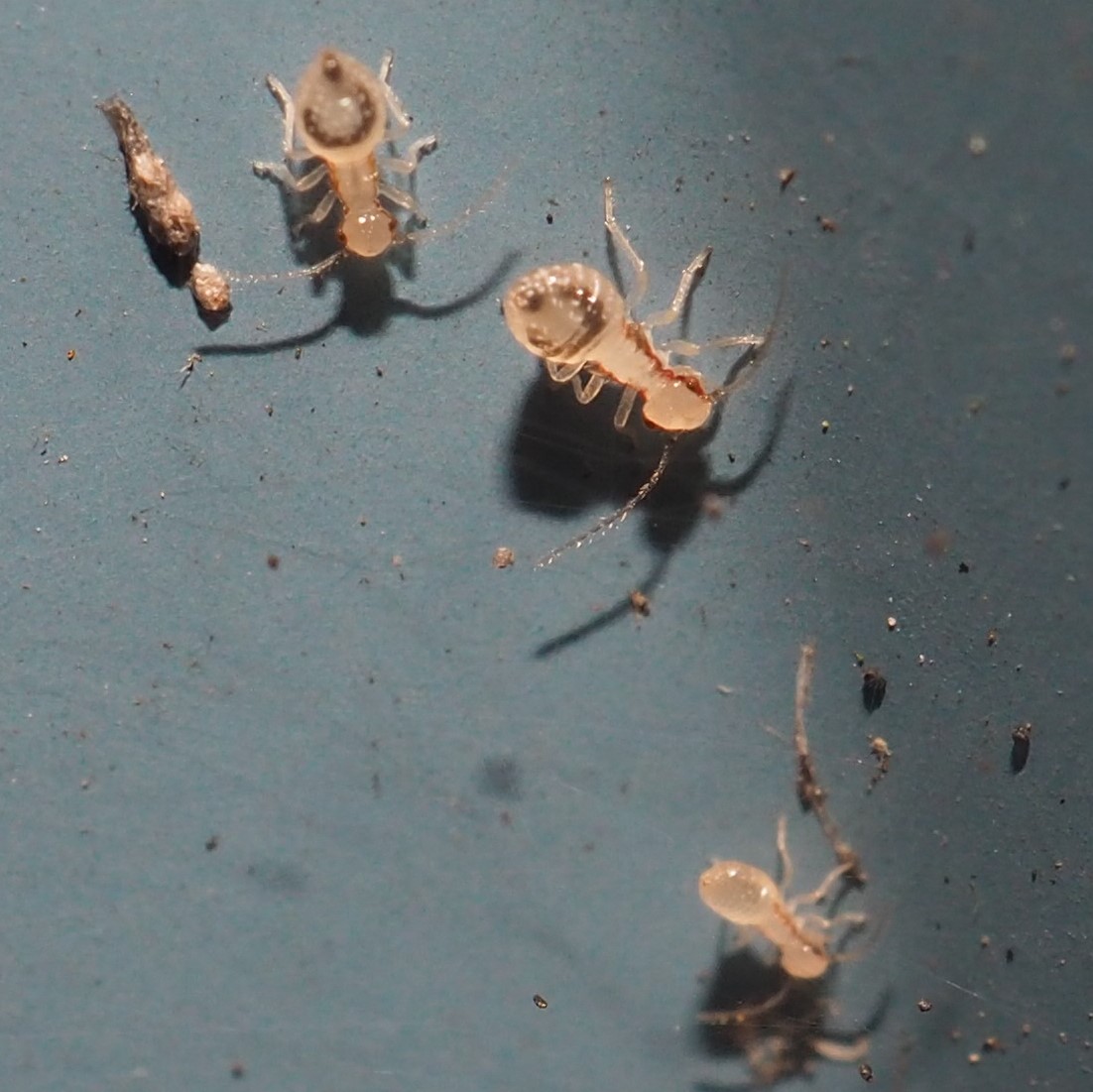
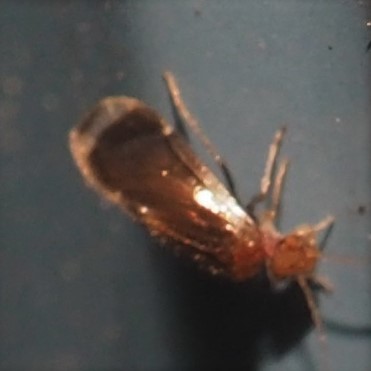
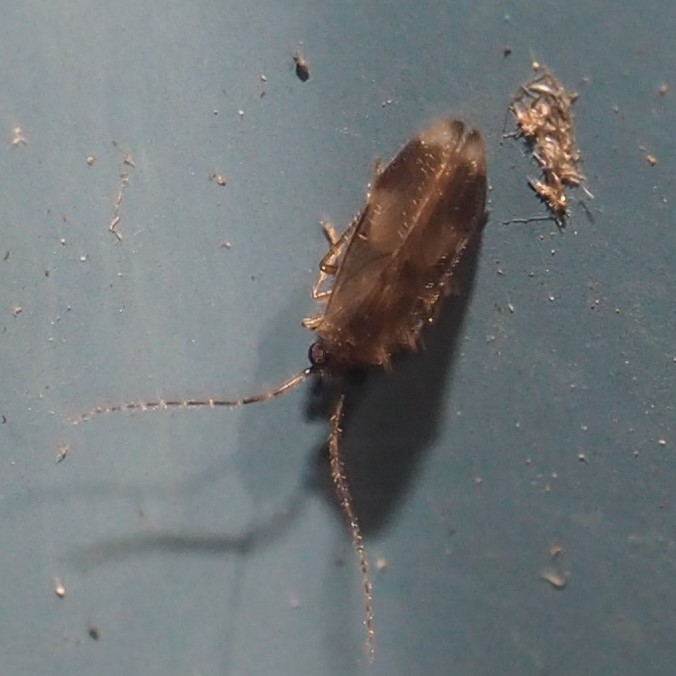
Here are some unknown eggs from the low end of the North Wall. The ones we saw last week on north panel 17 or 18 hatched into a good-sized batch of nymphs. Then we see some Ectopsocus-looking eggs in the low-numbered panels of the North Wall, and a few Ectopsocus nymphs in North 10.
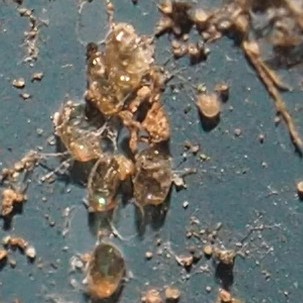
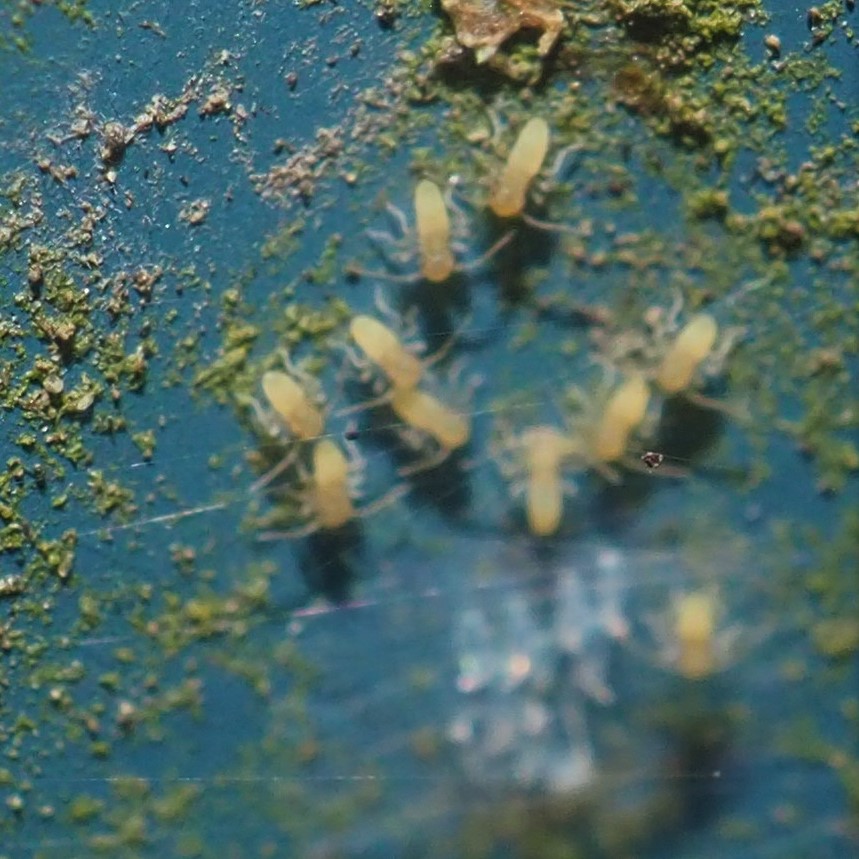
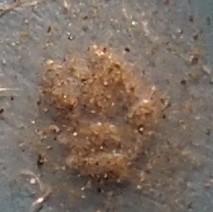

Of course, baby and adult Graphopsocus Blice are still ubiquitous. Third here is an unknown species.
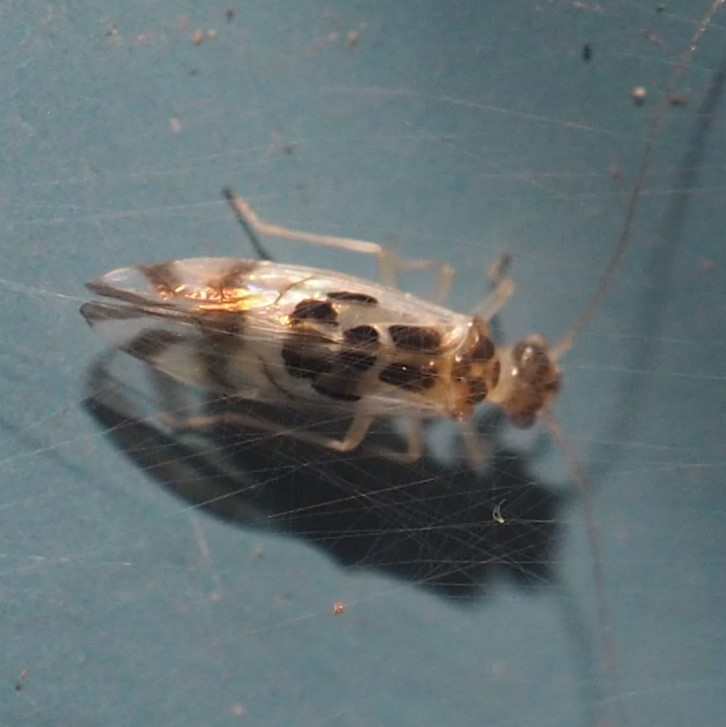
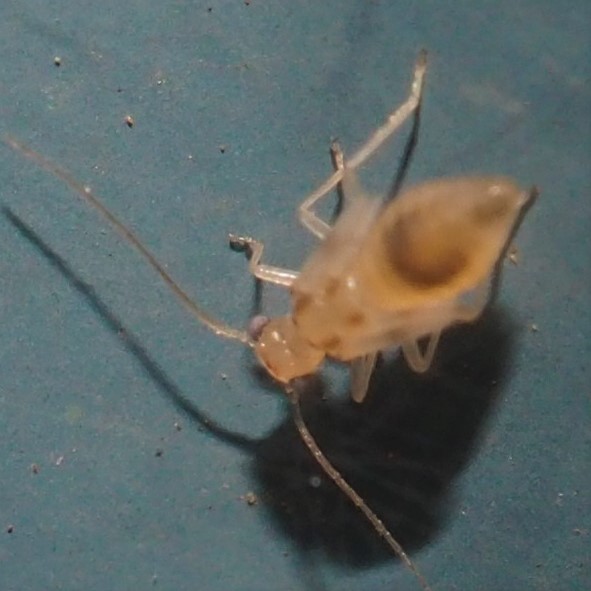
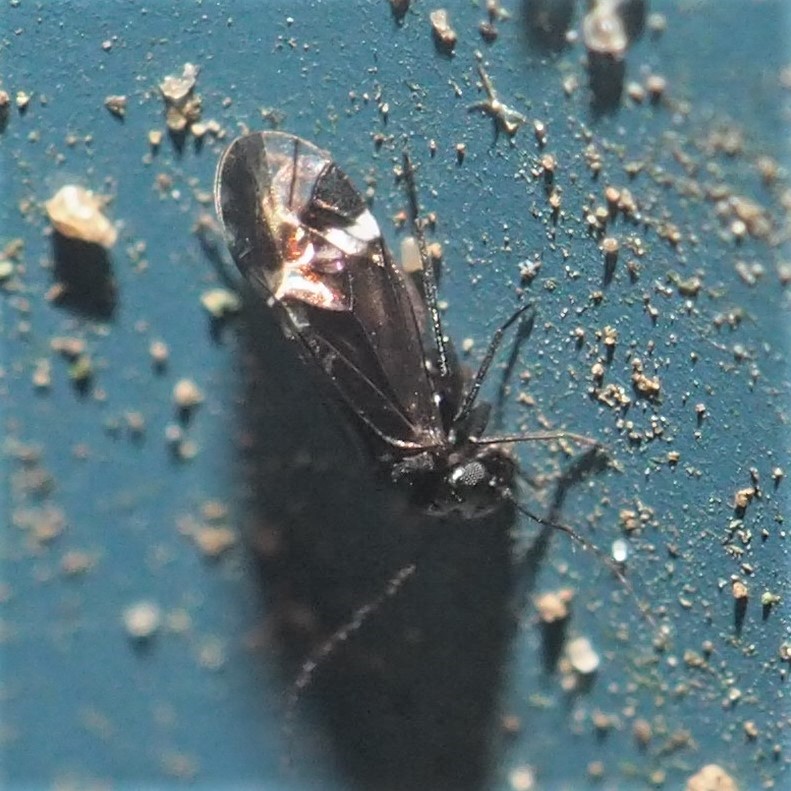
I believe that I'll proceed as usual now, visiting Bees, Beetles, Bugs, etc. Many of them will be seen in the context of the Goldenrod community. Now the Asters are also beginning to open up, and sure enough, in the center of this Aster flower is one of those lovely little Green Sweat Bees, and in the next is a Golden Sweat Bee. Third is a very common little bee with its huge pollen sacs. I believe it is the Cloudy-winged Mining Bee
(Andrena nubecula) because of the prominent pollen sacs.

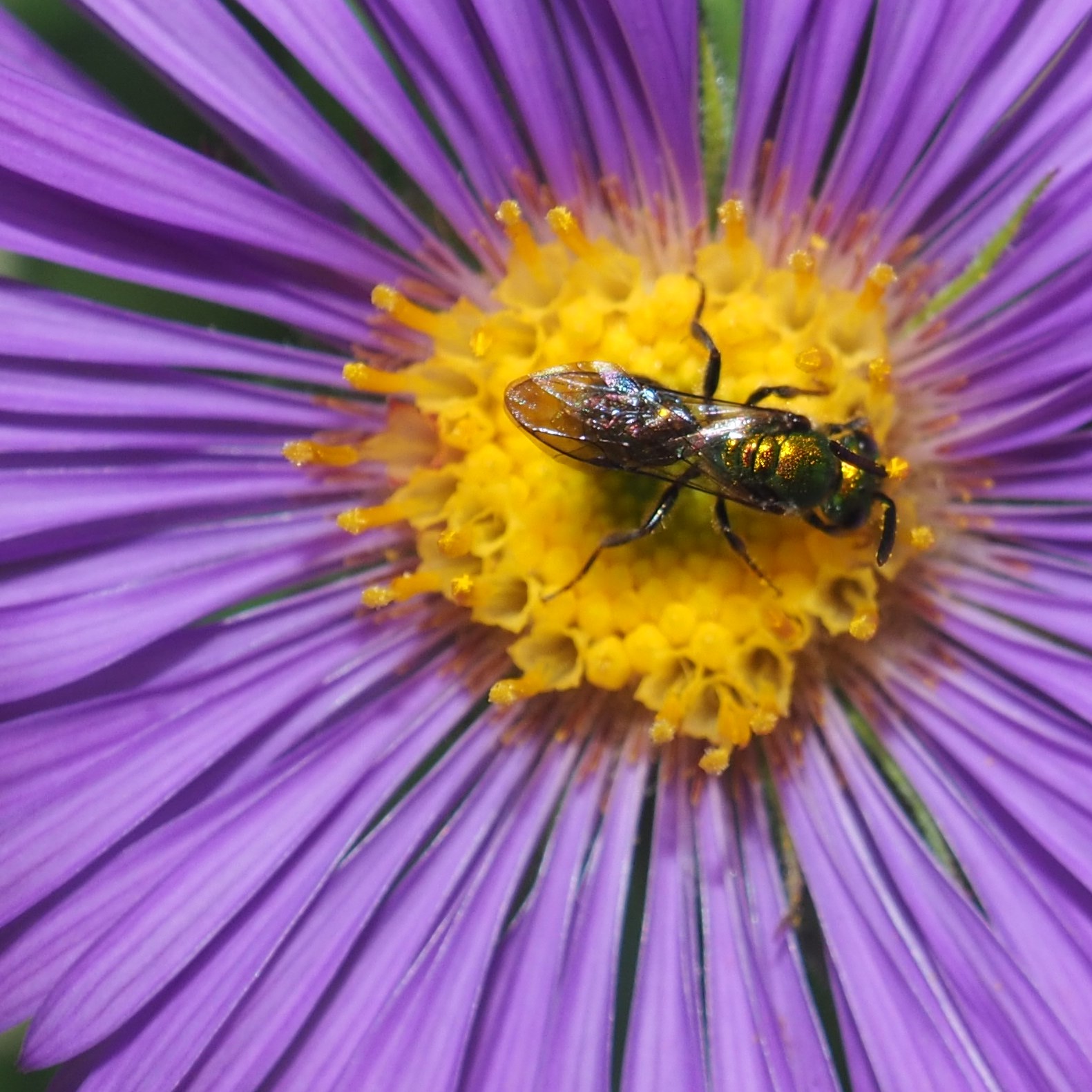
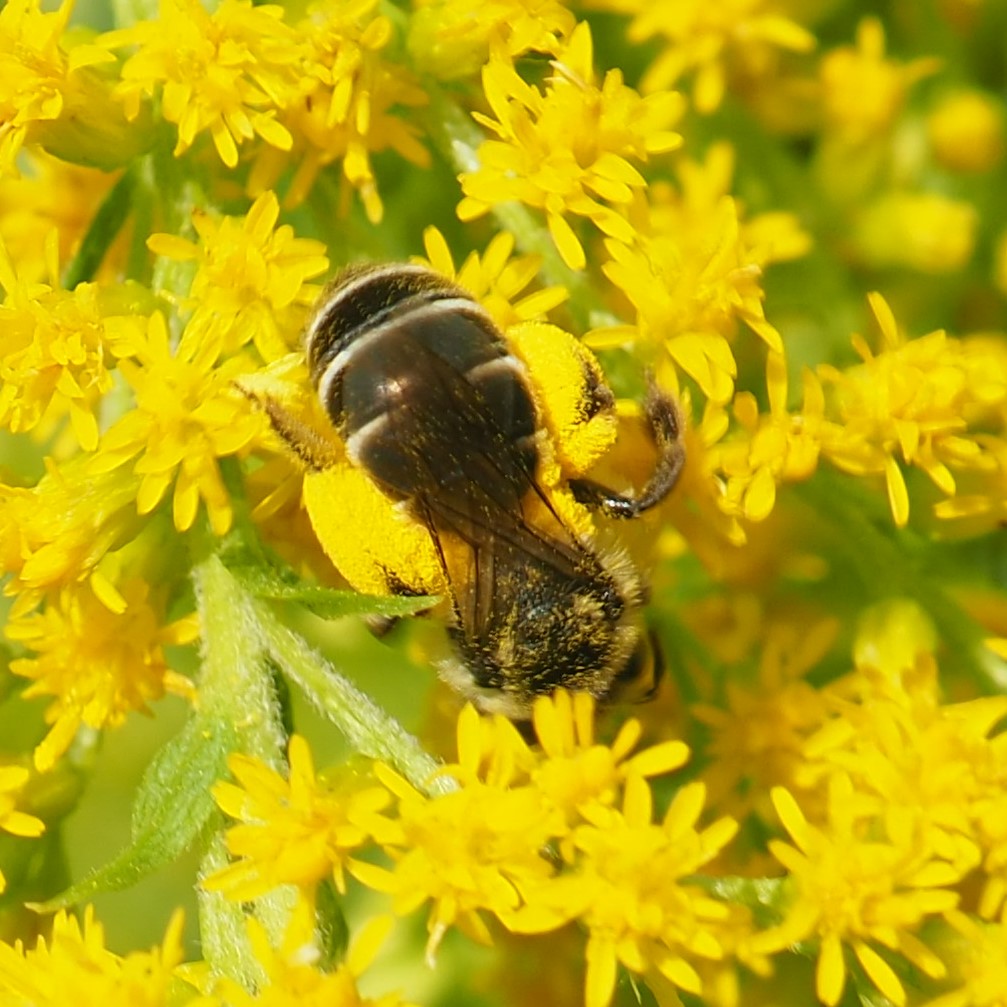
Here is a small black-and-white Bee, and another Sweat Bee but with golden wings. Third is (surprise!) one of our Honey Bees!
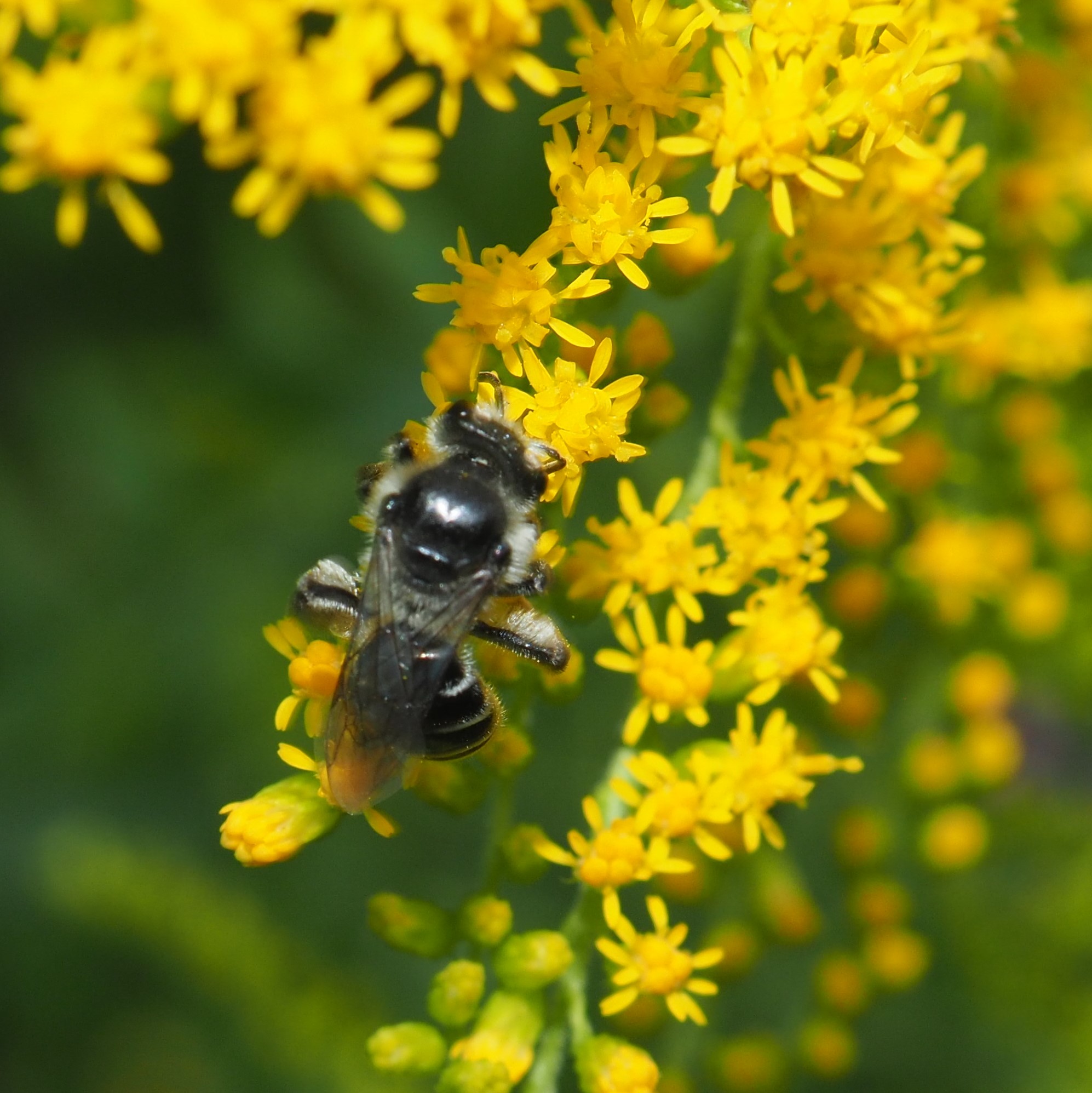

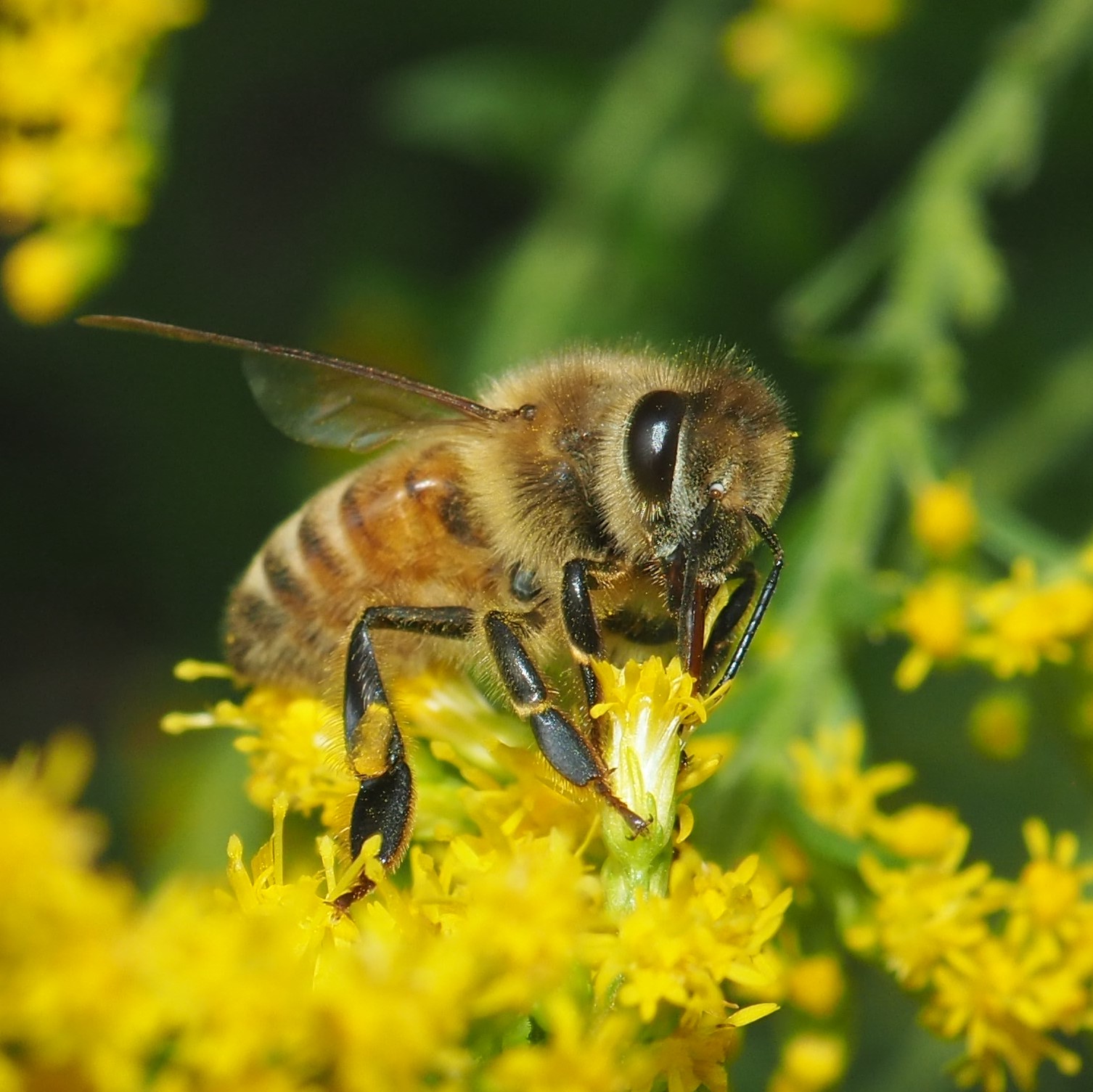
Here is a Bumblebee in the Goldenrod.
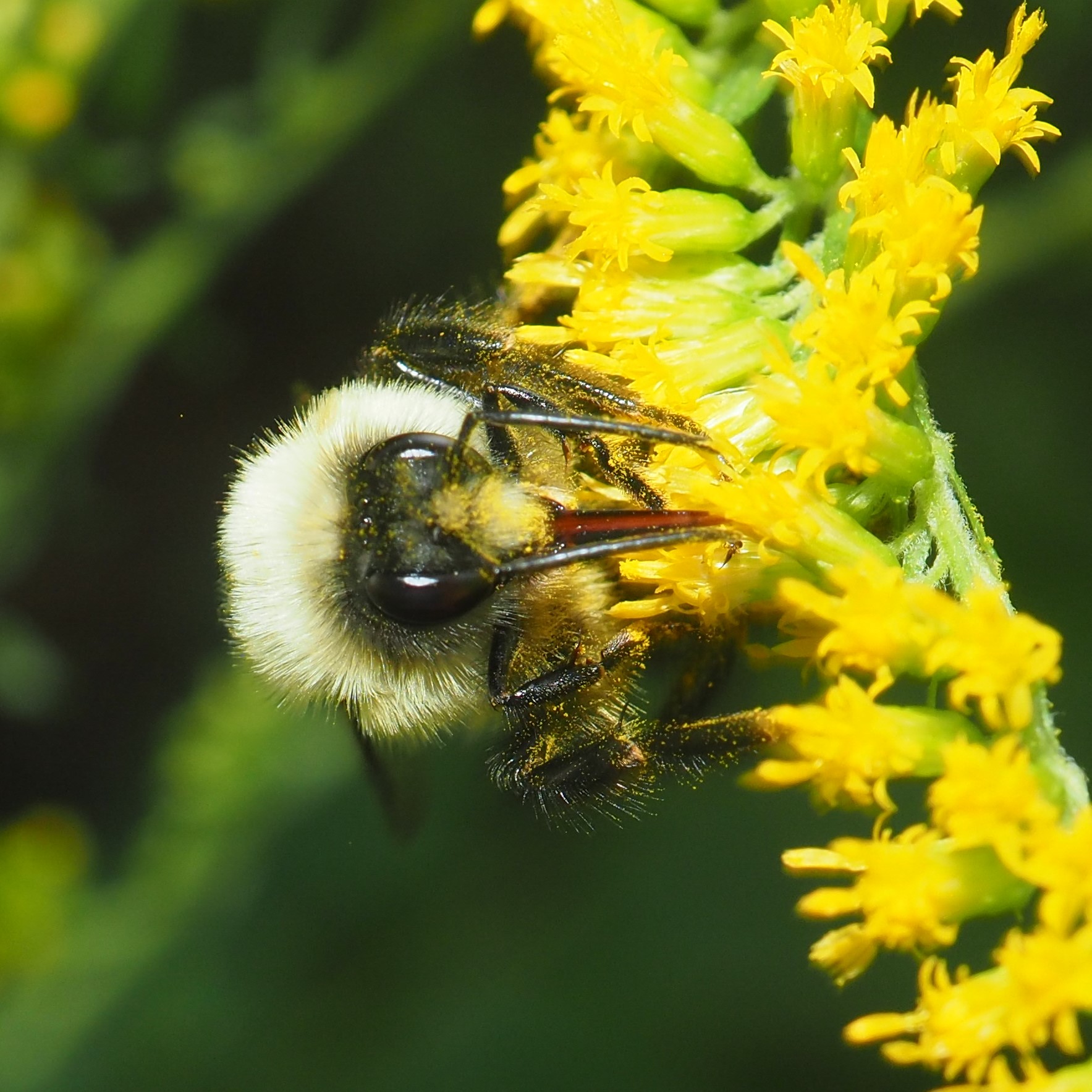
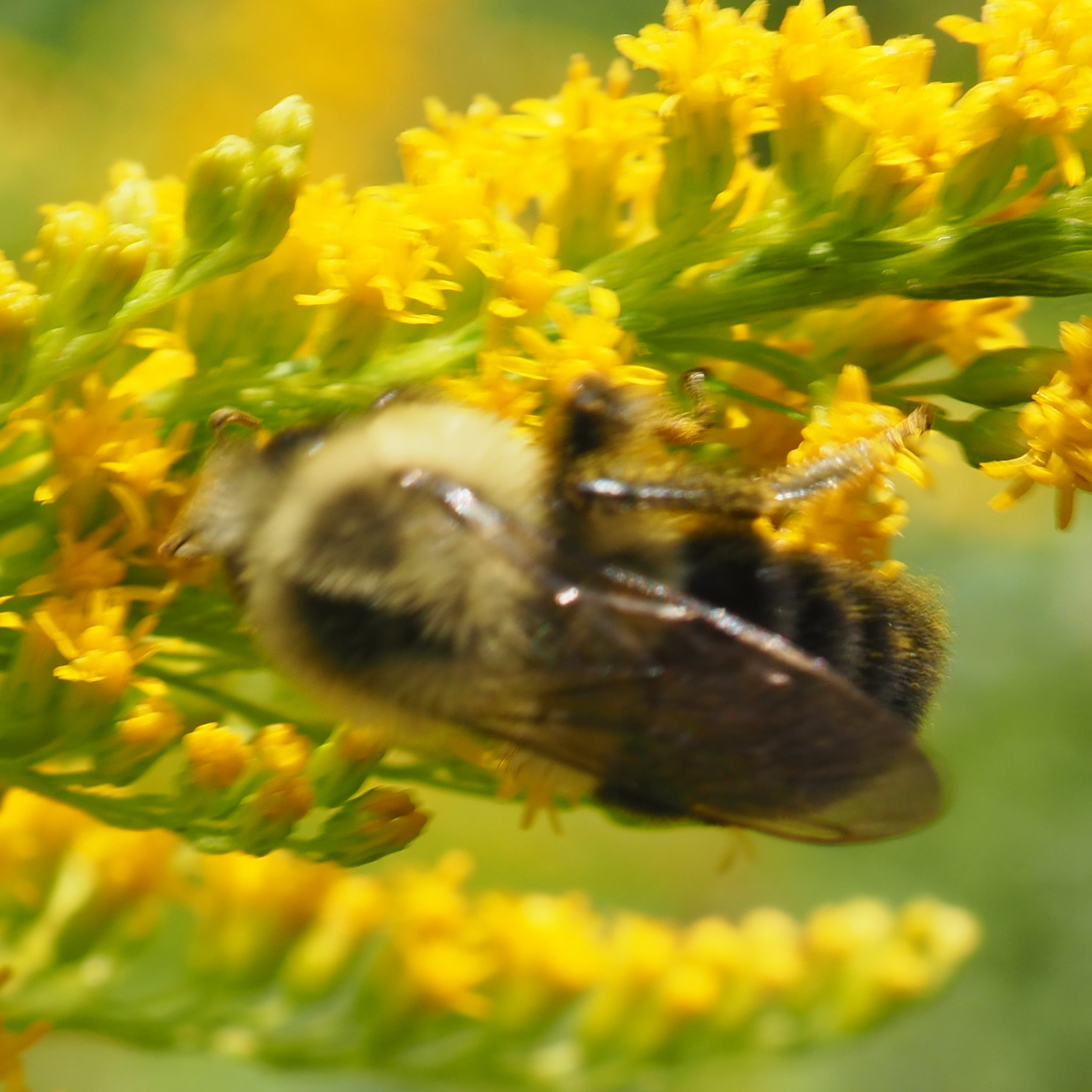
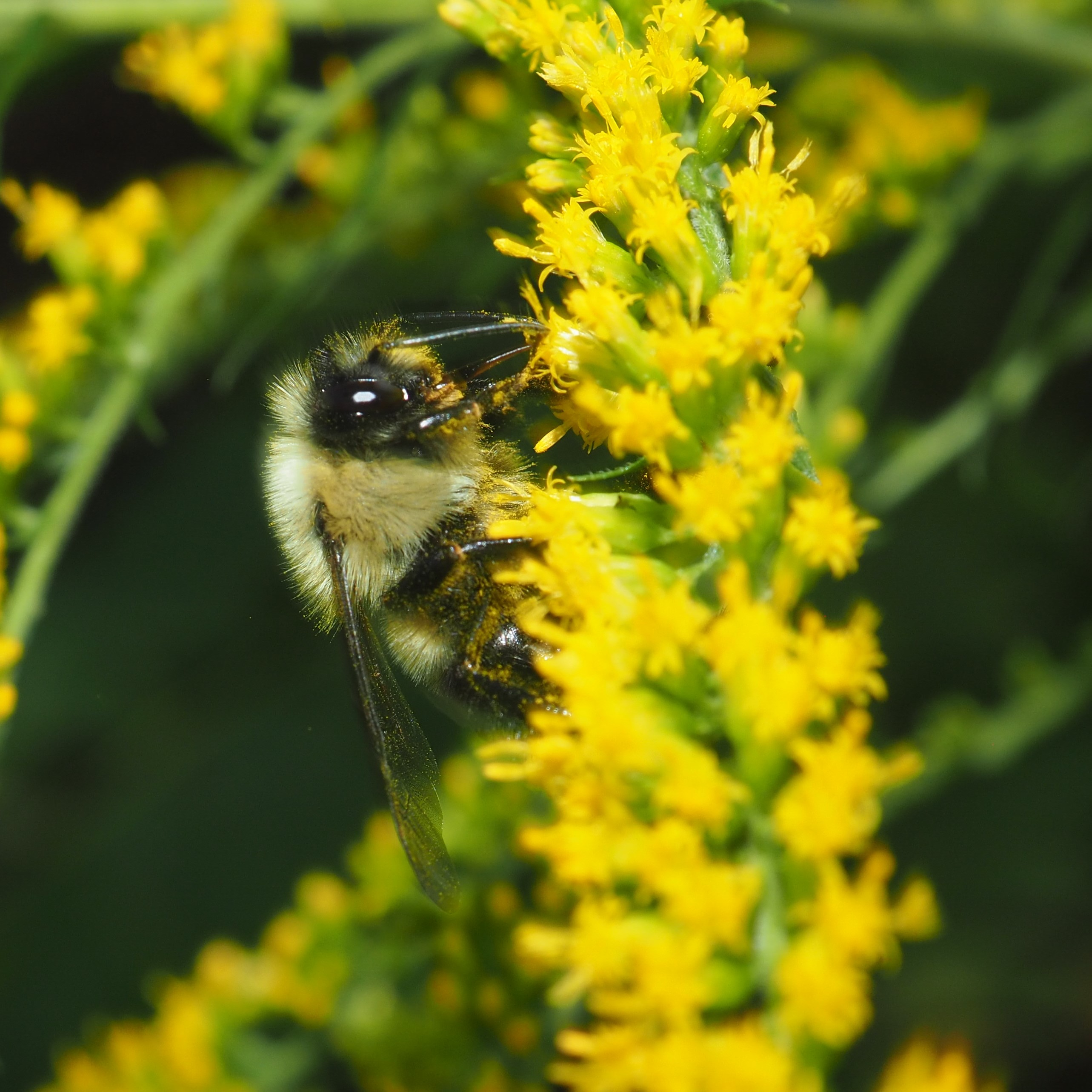
How about Beetles? One that I always look forward to seeing is the yellow-and-black Locust Borer. Usually you can find at least one pair mating. That's picture 2. Picture 3 shows a similar Beetle but with very different color patterns. I asked @catenatus on iNat what's going on? Was the weird-colored one a dimorphic female, as in Jumping Spiders. He said the back just seemed to have been worn-down somehow on this female. No snickering.
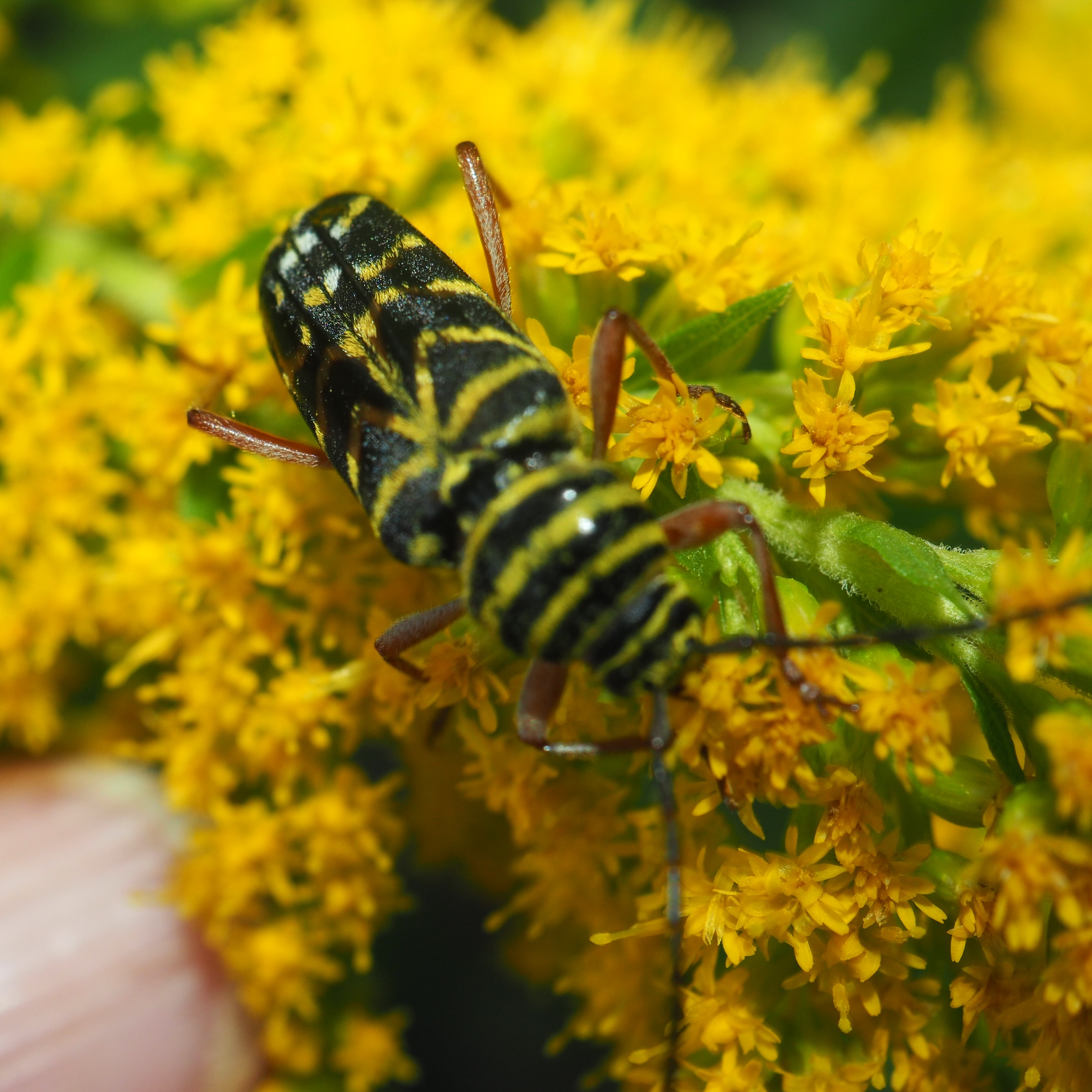
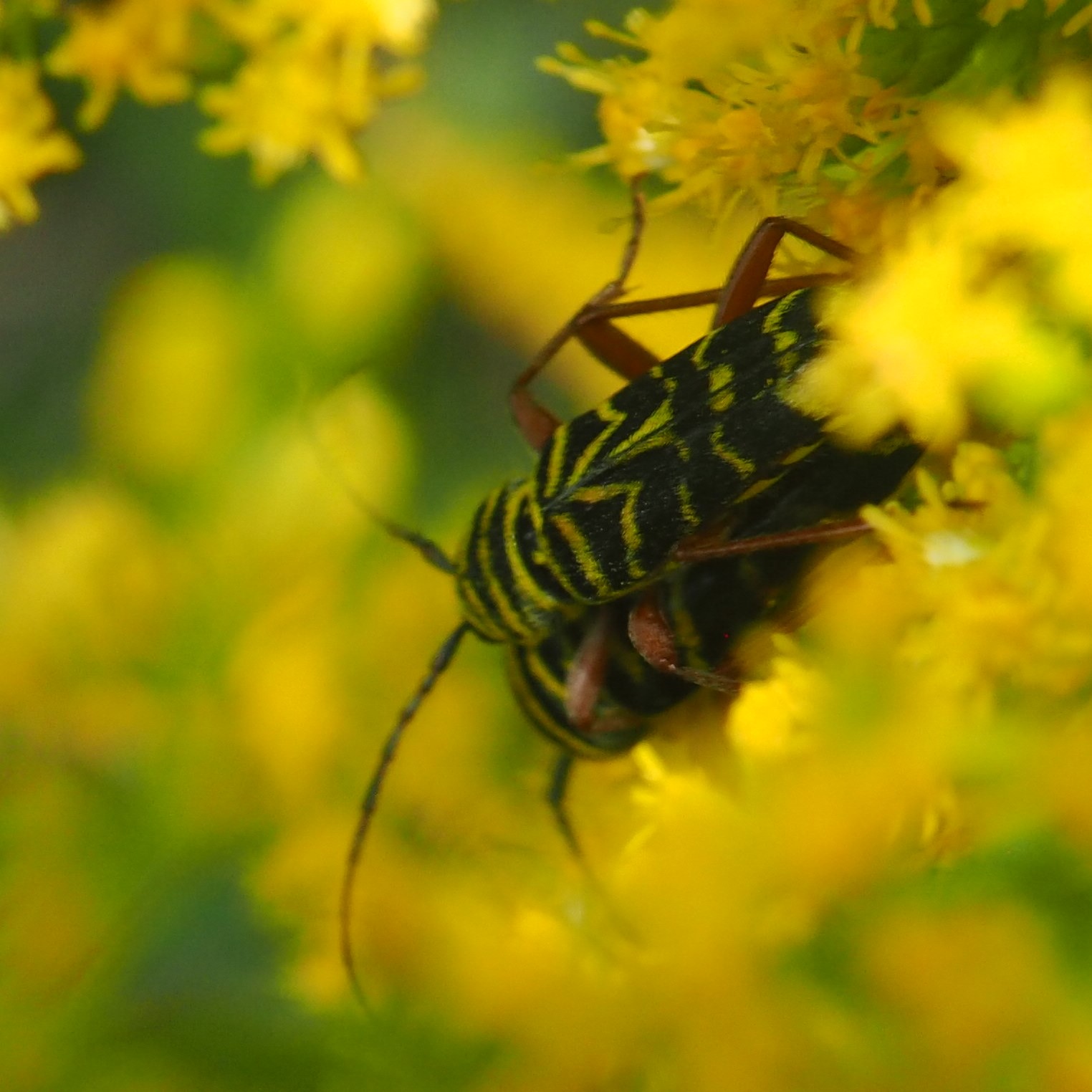
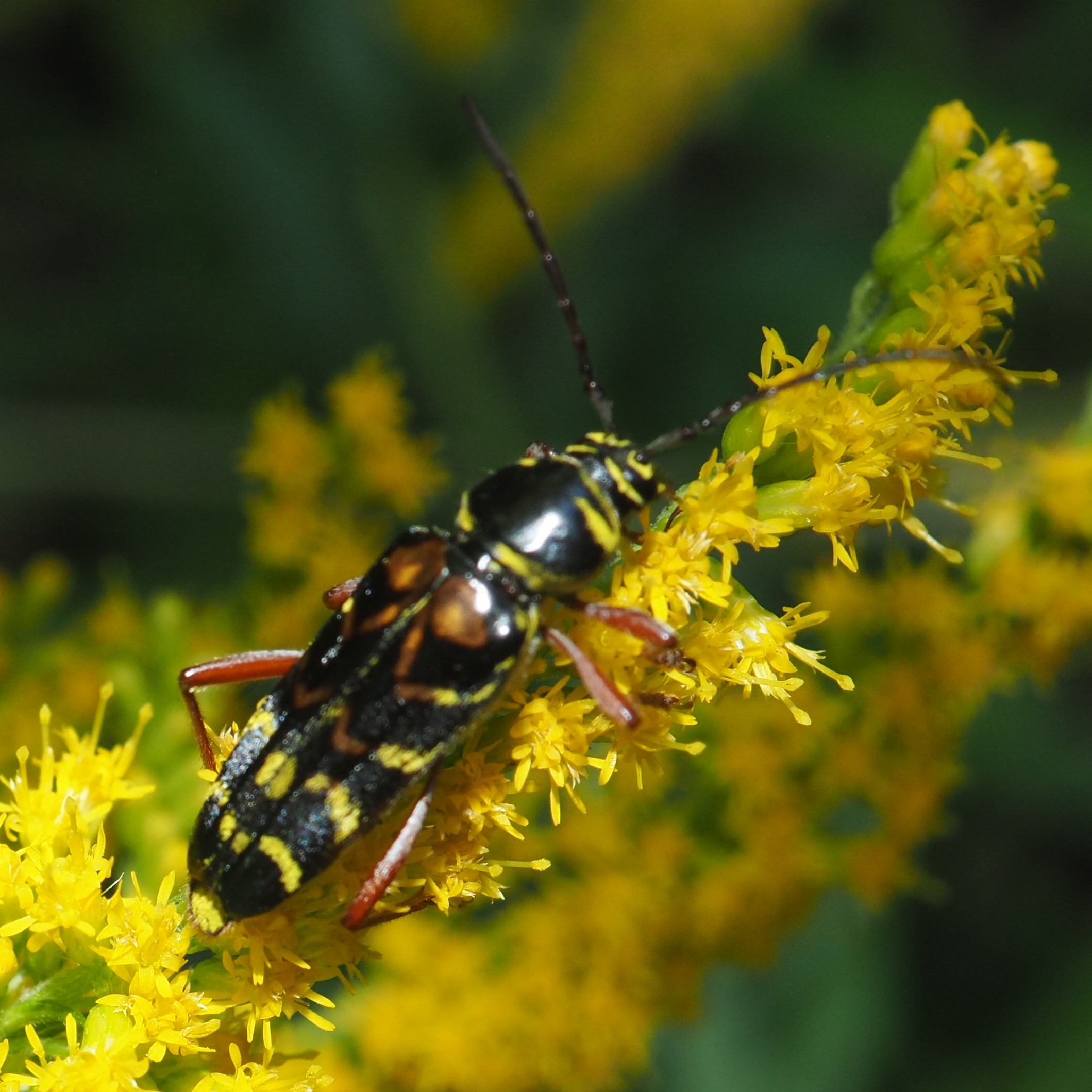
Another Beetle that I always look forward to seeing during Goldenrod blooming season is this aptly named Goldenrod Soldier Beetle. They love yellow bloomers like Goldenrod and also Black-eyed Susans, which I don't have right now.

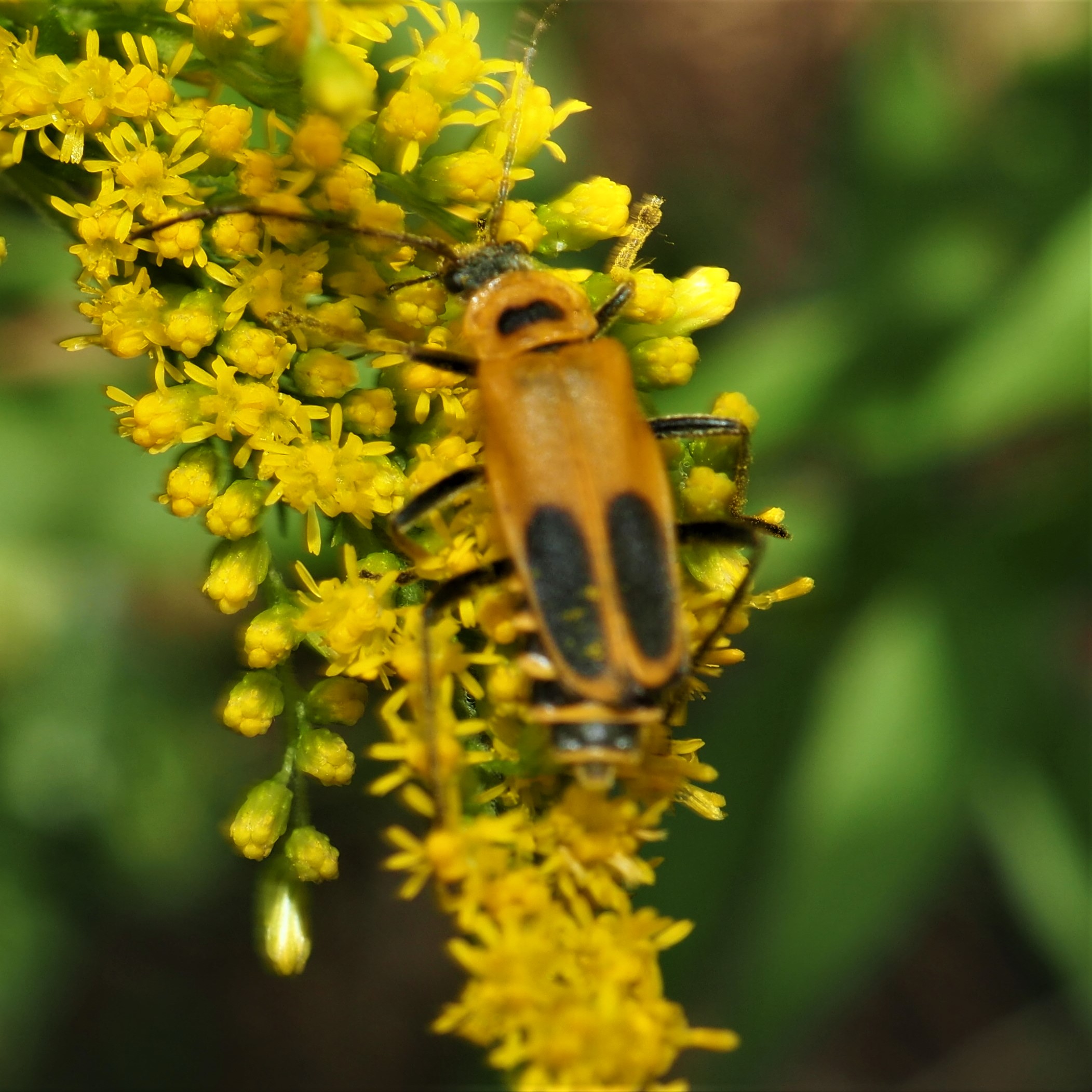
Out back I saw this shadowy Weevil, and on the Shop Wall, this Flea Beetle as usual. Finally, the Weevil known as the Redbud Bruchid.
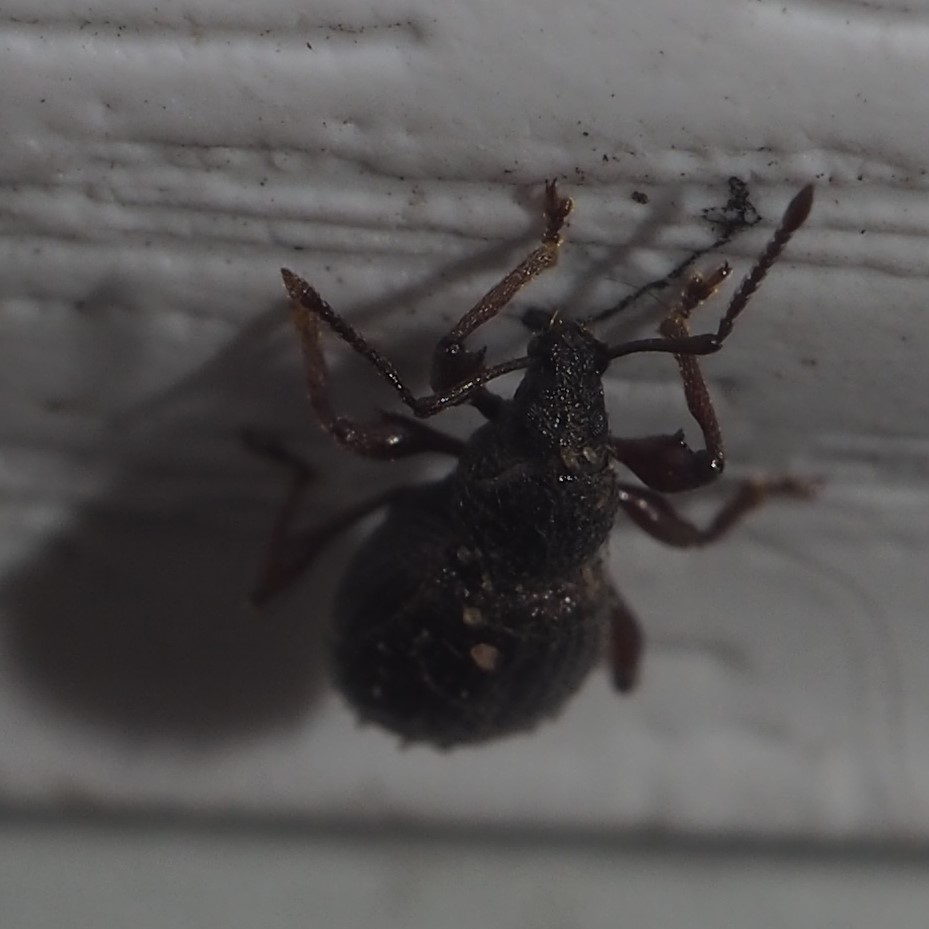
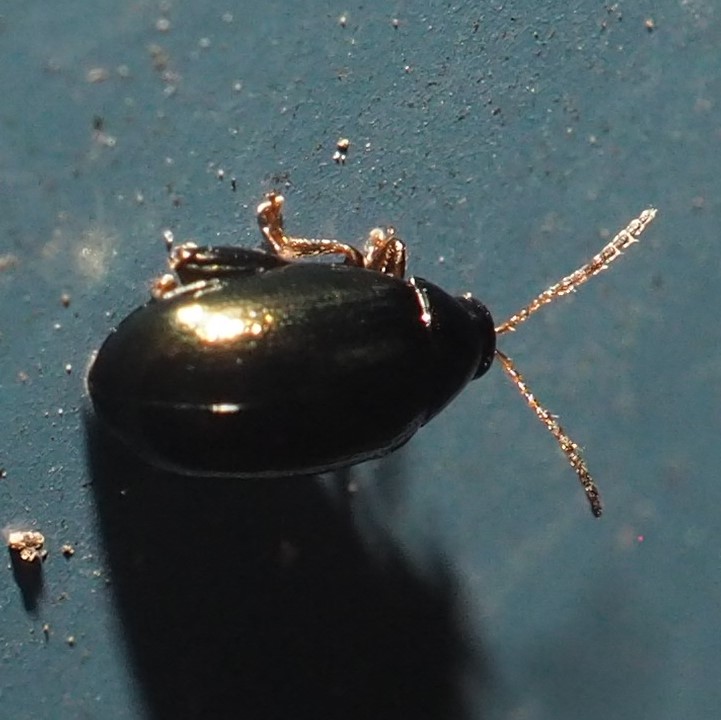
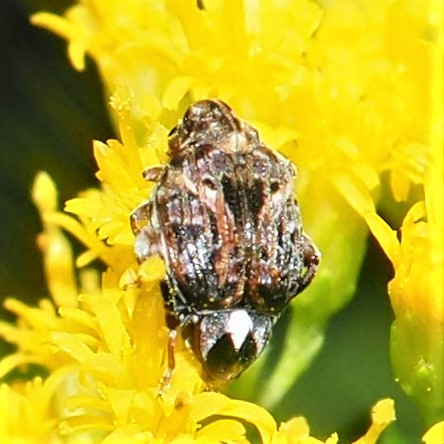
This is where I always bring out one or two Zelus Assassin Bugs. They are doing well and still getting larger than when they were born only a few weeks ago.
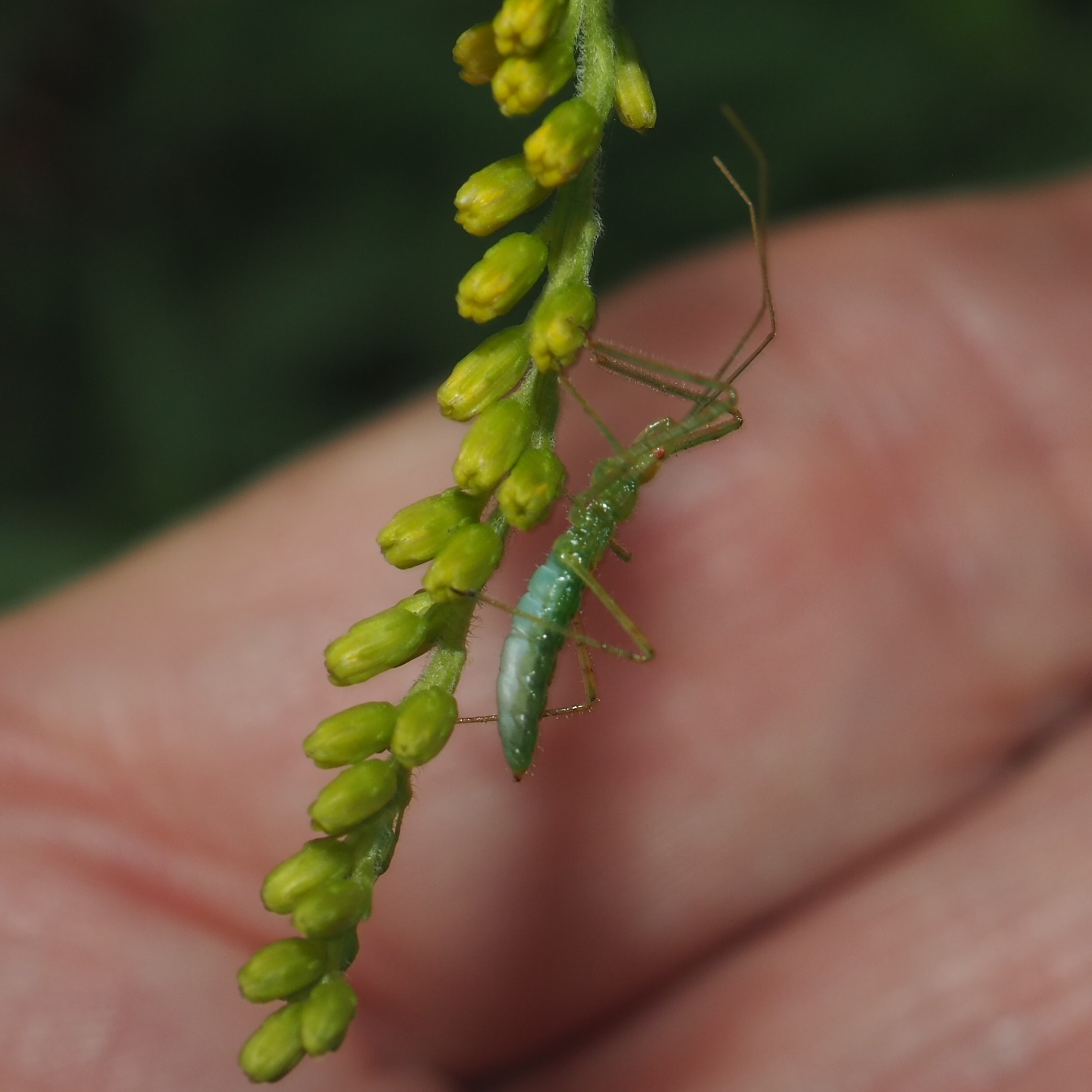
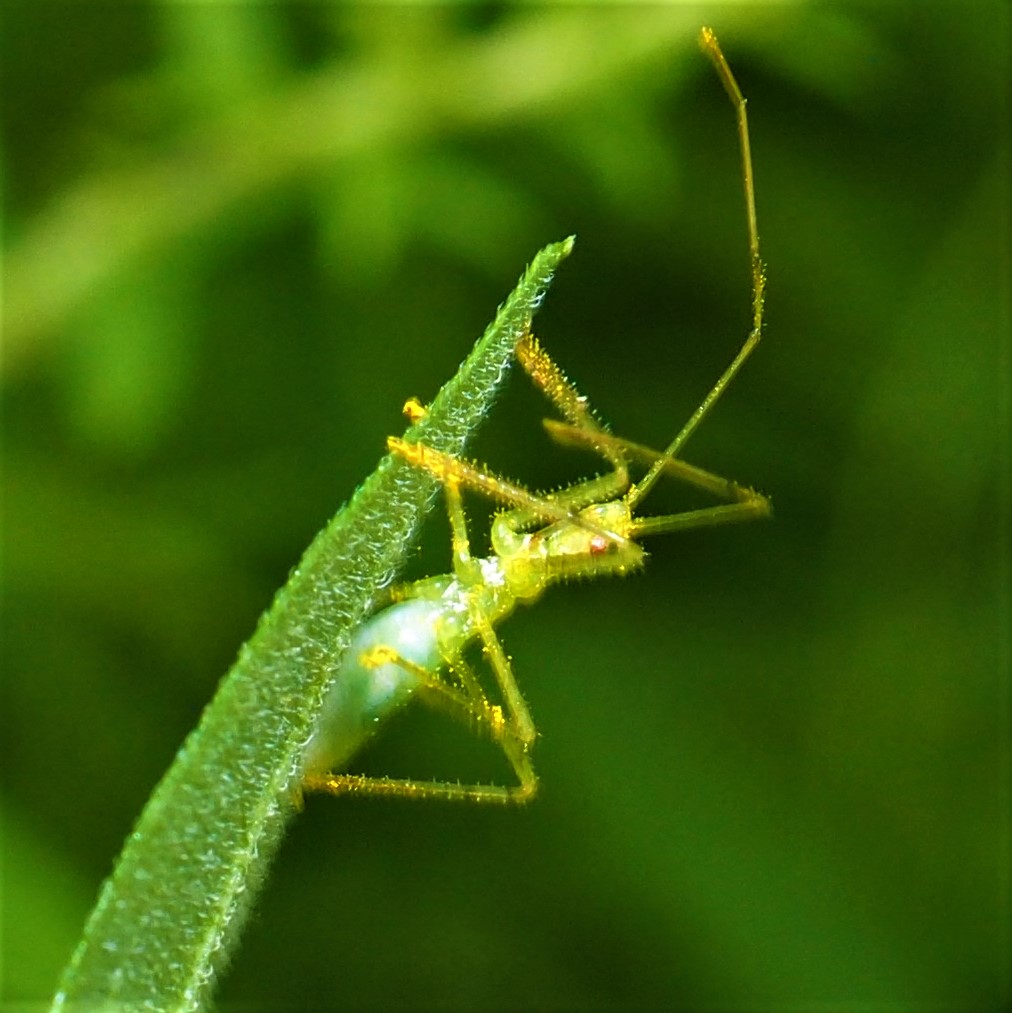
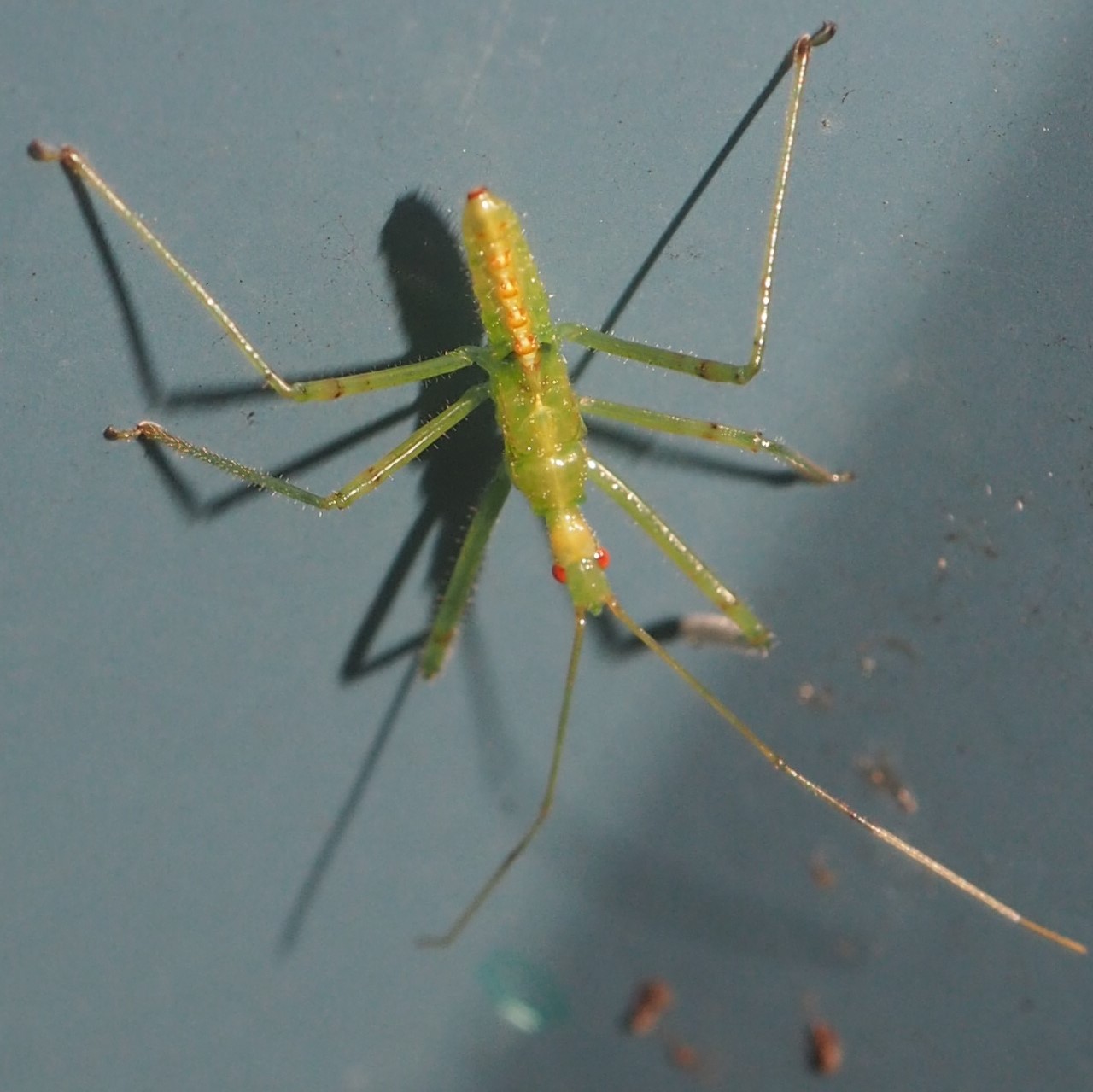
The counterpart to the Assassin Bug is the Ambush Bug. Where do they go when Goldenrod Season is over? I have rarely seen one any other time - but they must go somewhere. But for now, let's enjoy their appetite. They can eat anything so long as it is fresh enough. I believe that we in Albion mostly see the Pennsylvania Ambush Bug. There is one other kind, but I don't remember EVER seeing it here. This first one is a female - the males have much more black in their wings. Second is a male - finding it out in the relative open unsurrounded by waves of Goldenrod was a surprise. It even LOOKS evil, which is what the other creatures in the garden call it. Third shows one enjoying a tiny Wasp aperitif. Don't worry, it can handle other creatures bigger than this.
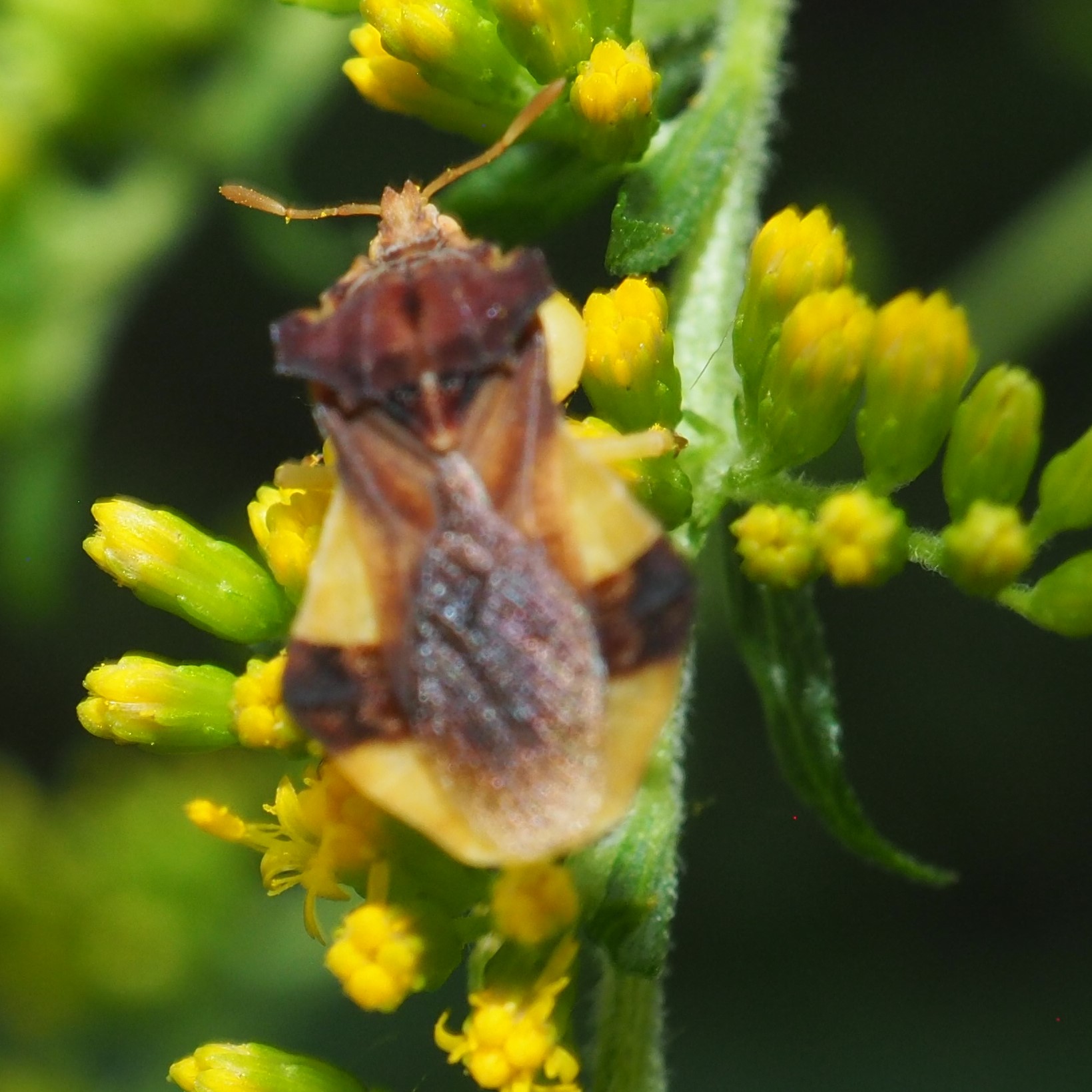
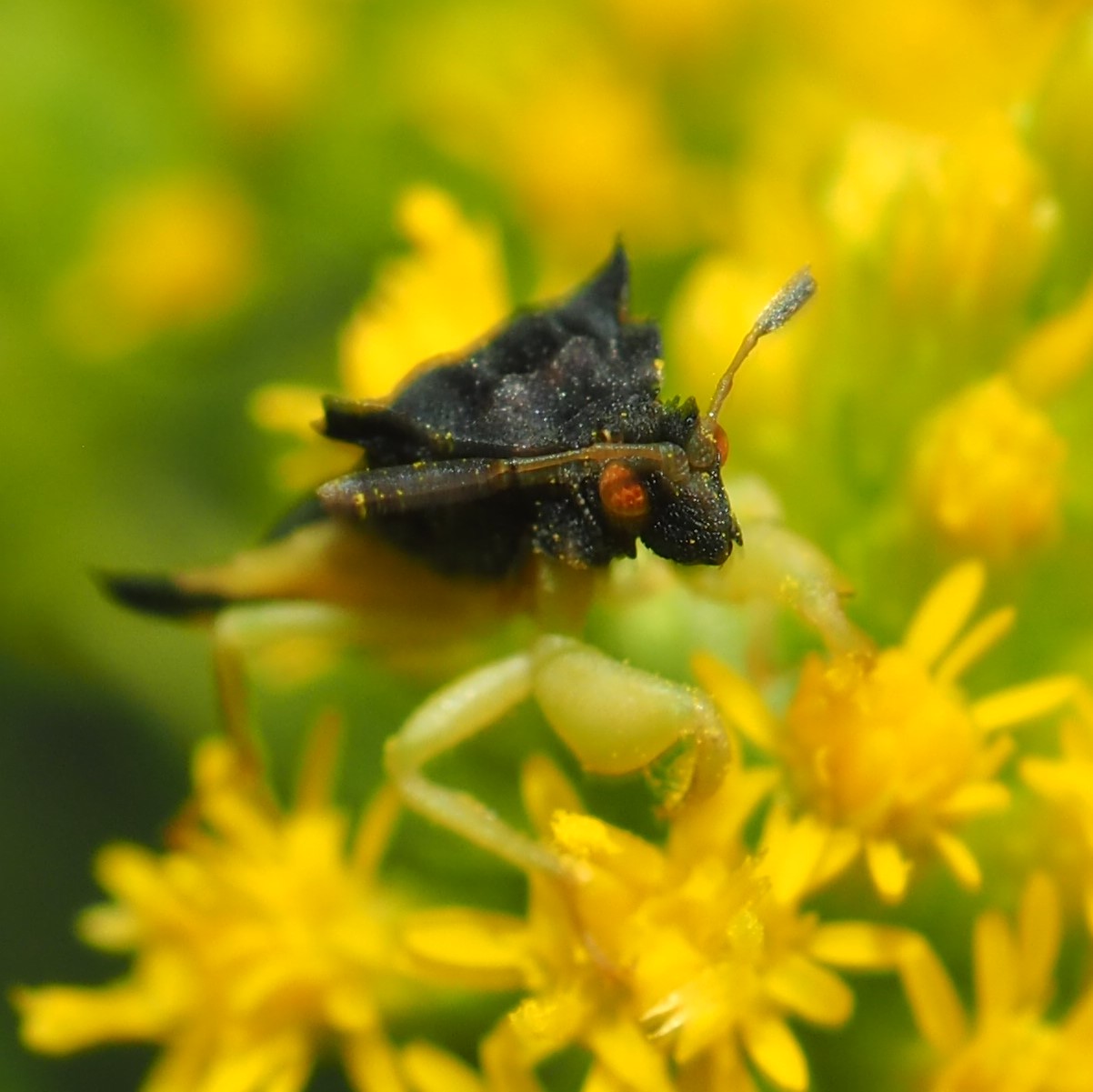
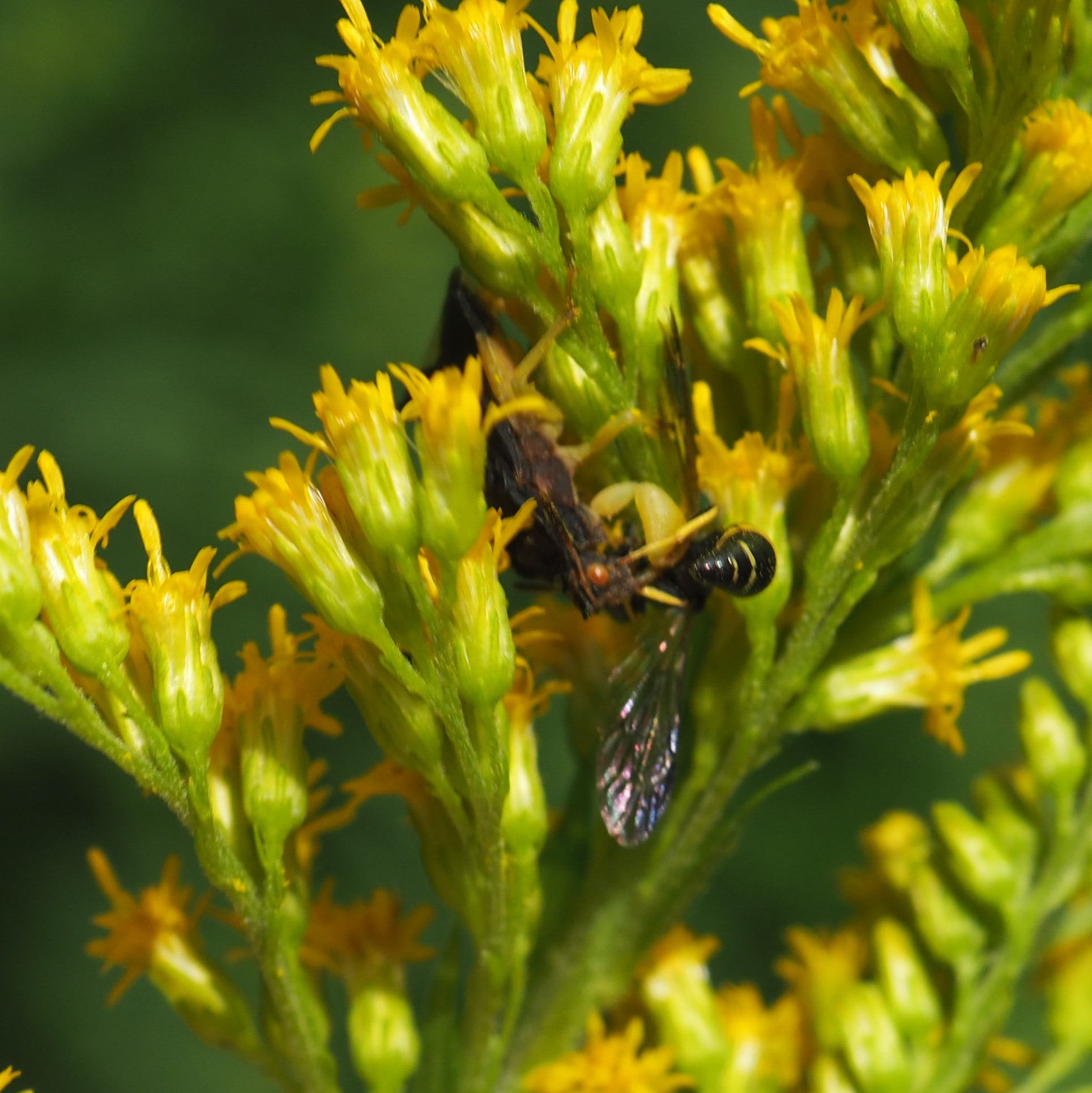
All right, my next favorite bunch of bugs - the Leafhoppers. These tiny jewels might be as long as an 1/8 inch (3 mm). You can barely see them and may mistake them for a piece of thread. But if you can focus down onto them, you see that they have the most surprising patterns and colors! First is a typical members of Eratoneura, and the second seems to have been re-colored substituting yellow for the usual red. Third is a variant called Eratoneura ardens (burning).
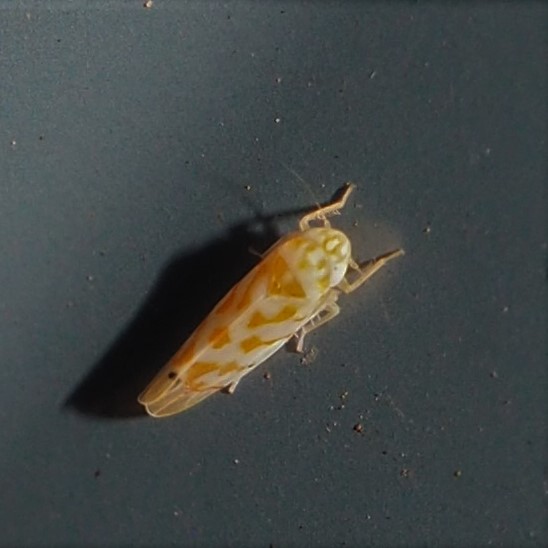
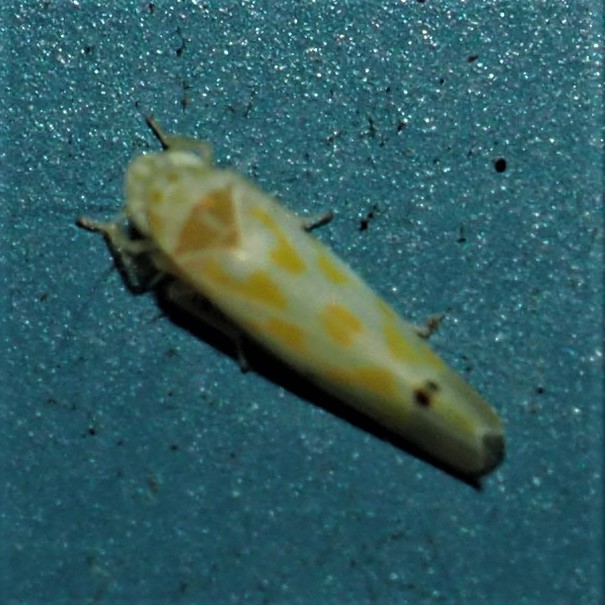
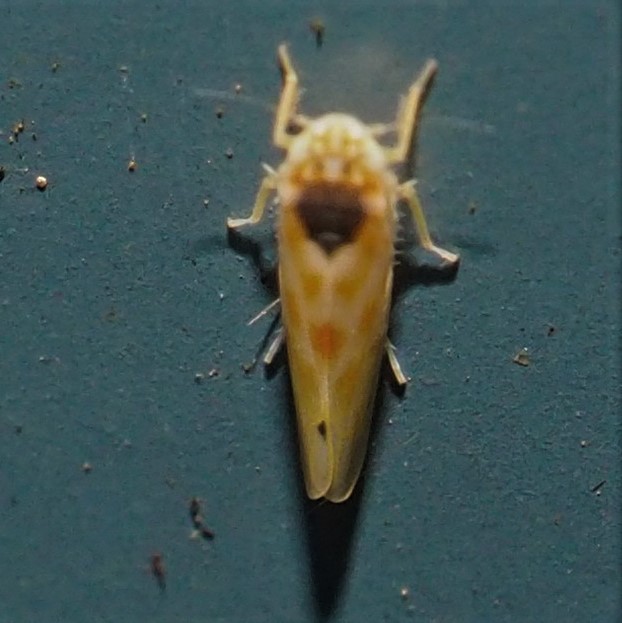
Another popular genus name is Erythroneura, and this one is so elegant (in fact its name is E. elegans) I'll show it to you in a couple of poses. The Third is a somewhat rarer member of the genus, and its name is E. delicata.



This first one is in genus Erythridula (used to be called Arboridia). This (E. aclys) is the only one in its genus to show up this week. Two and three are in genus Scaphoideus, and are either the same individual or a close relative. The details seem to have been sketched in using a line drawing.

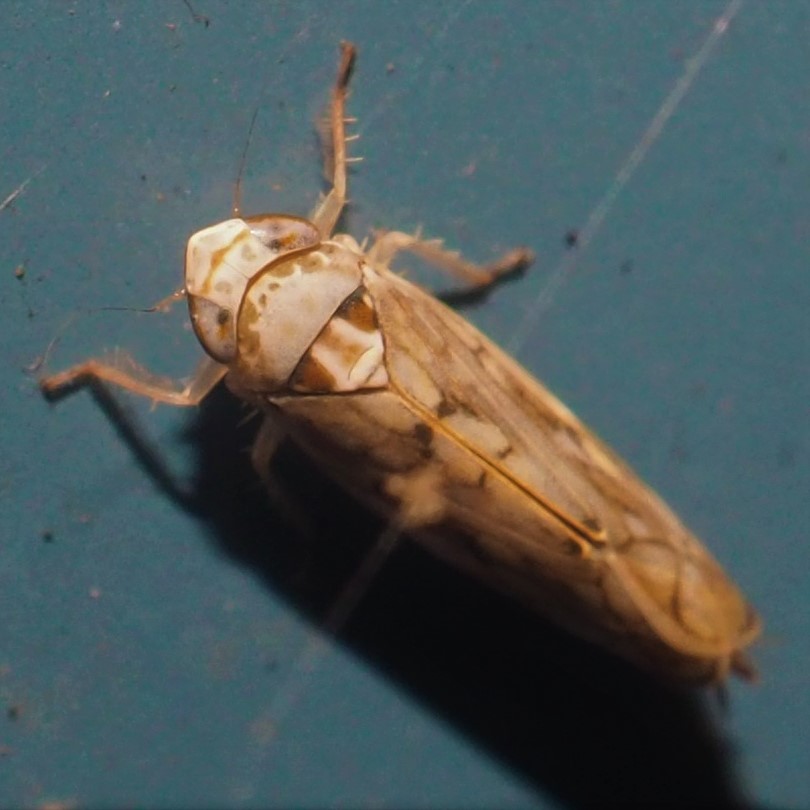
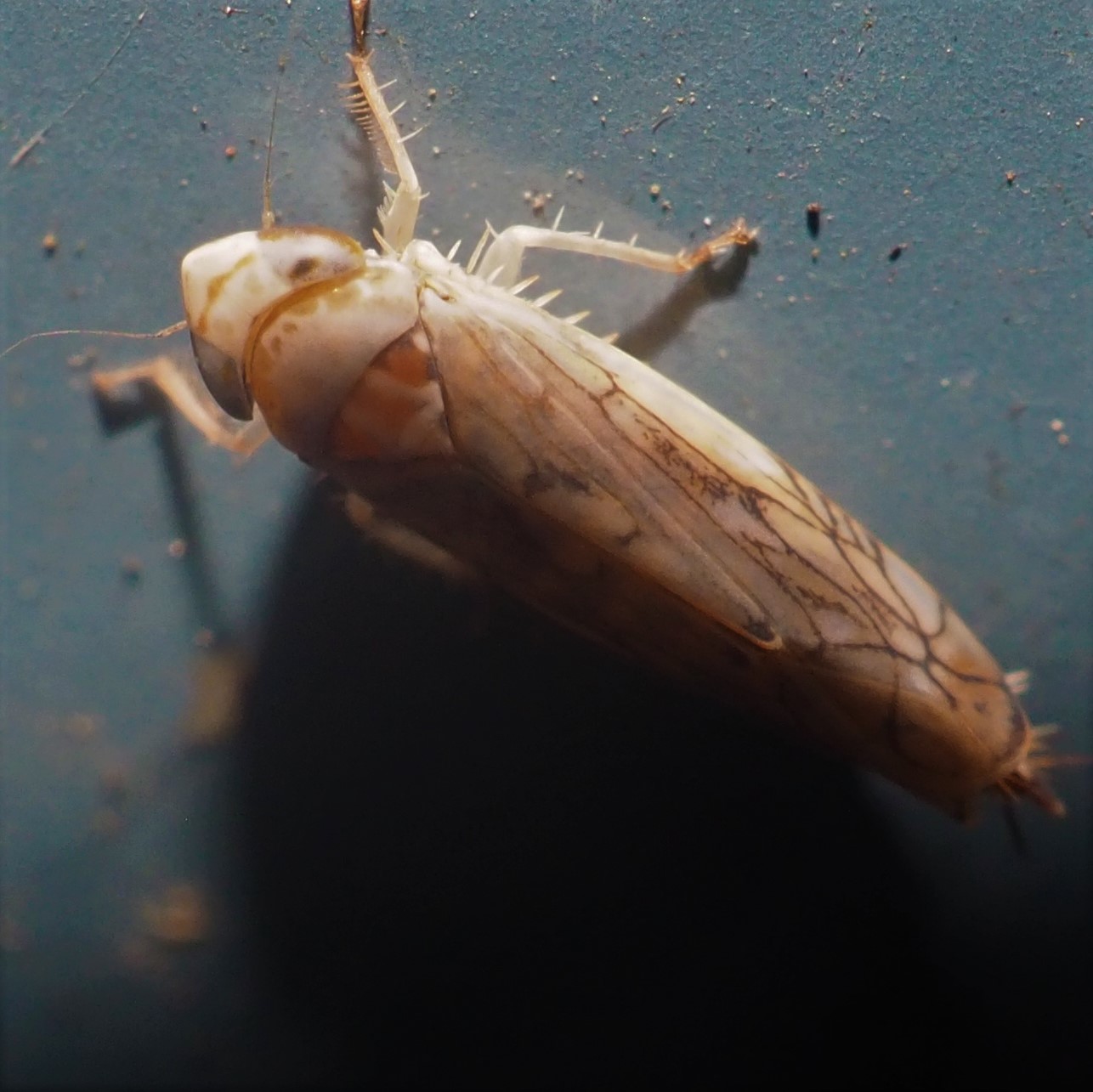
Here are a few more Leafhoppers. First is the Japanese Leafhopper, and looks up close like a mosaic in gold (sometimes blue!). The Second, Jikradia olitoria (the Coppery Leafhopper), is the one that had the recurved tail as a nymph! Third is an old friend, Erasmoneura vulnerata. But the Fourth is a mystery!
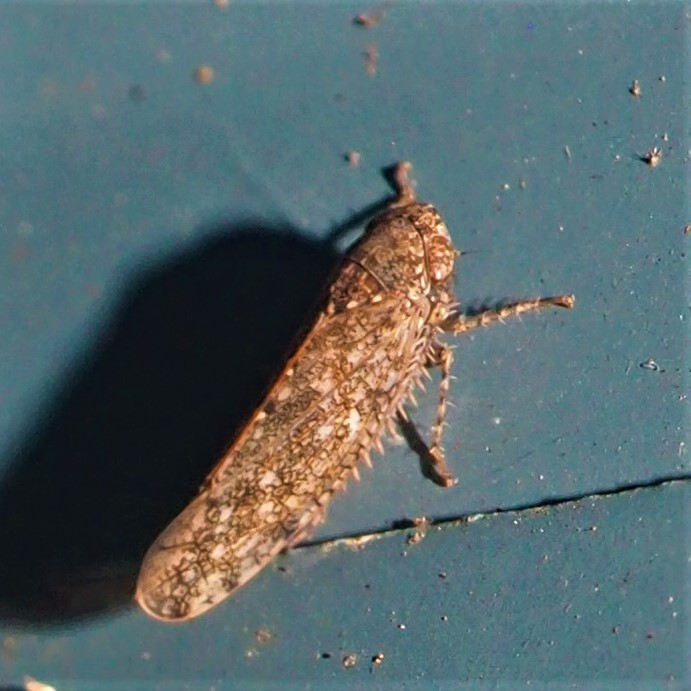
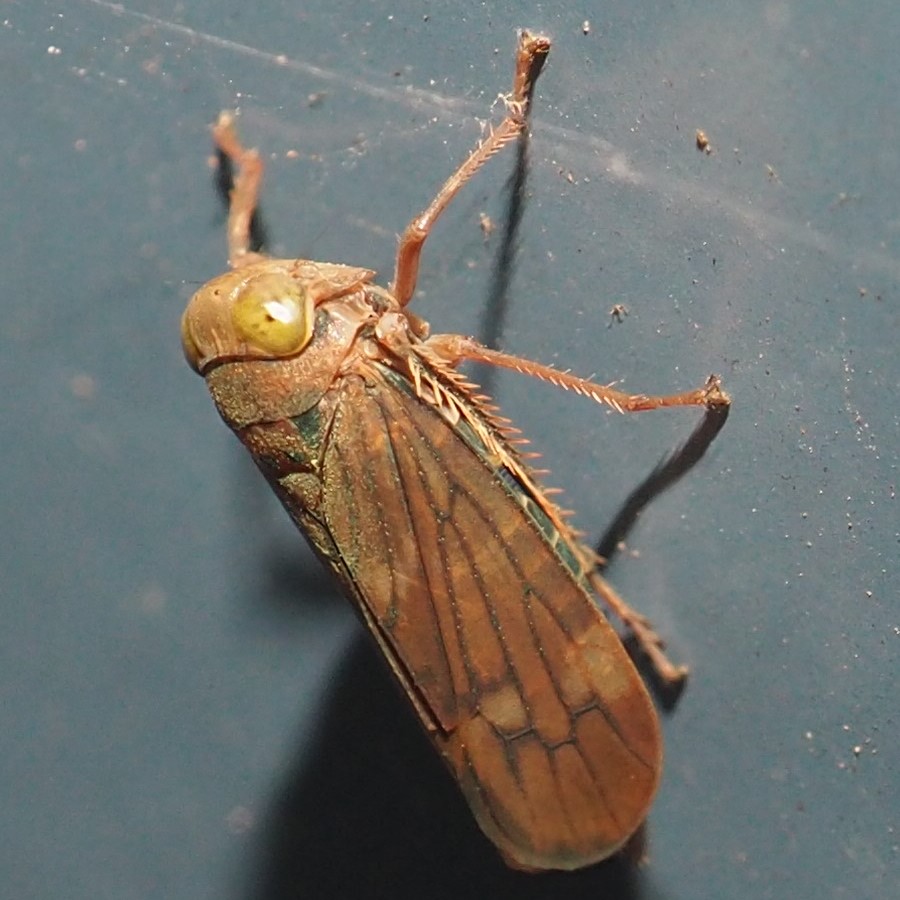
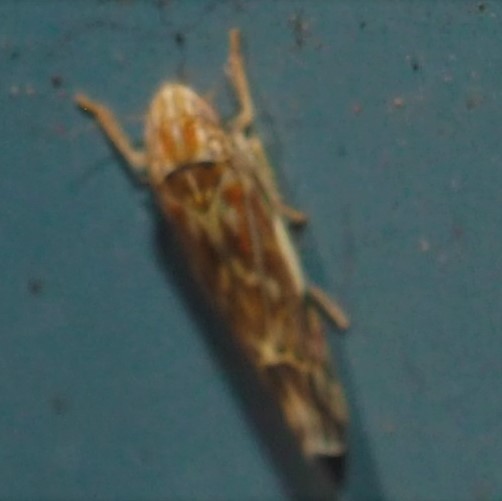
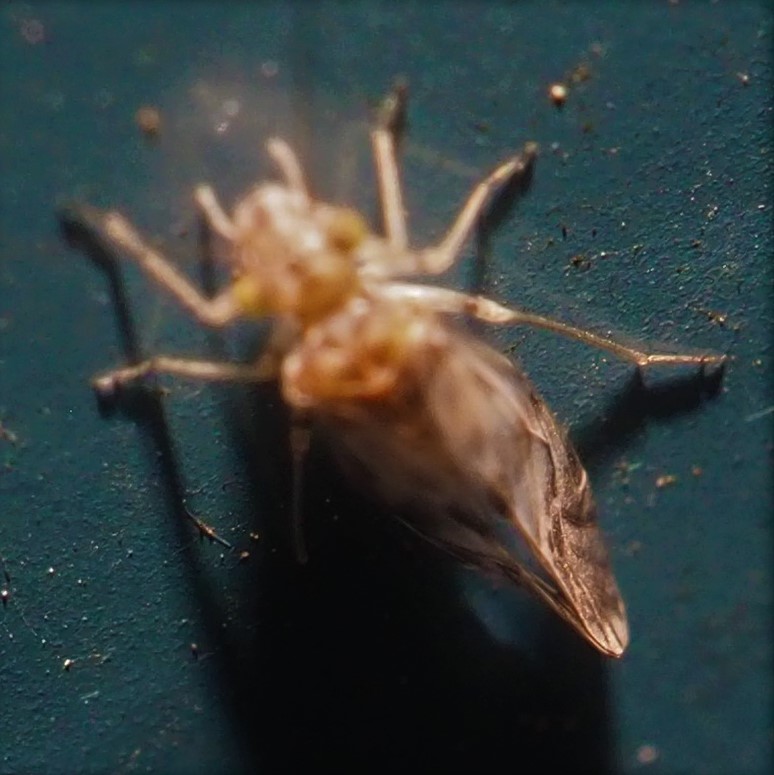
Finally for the Bugs, a fast-growing familiar is a Stink Bug, Dendrocoris humeralis. Two and Three are different poses of a member of the Tribe Carpocorini.
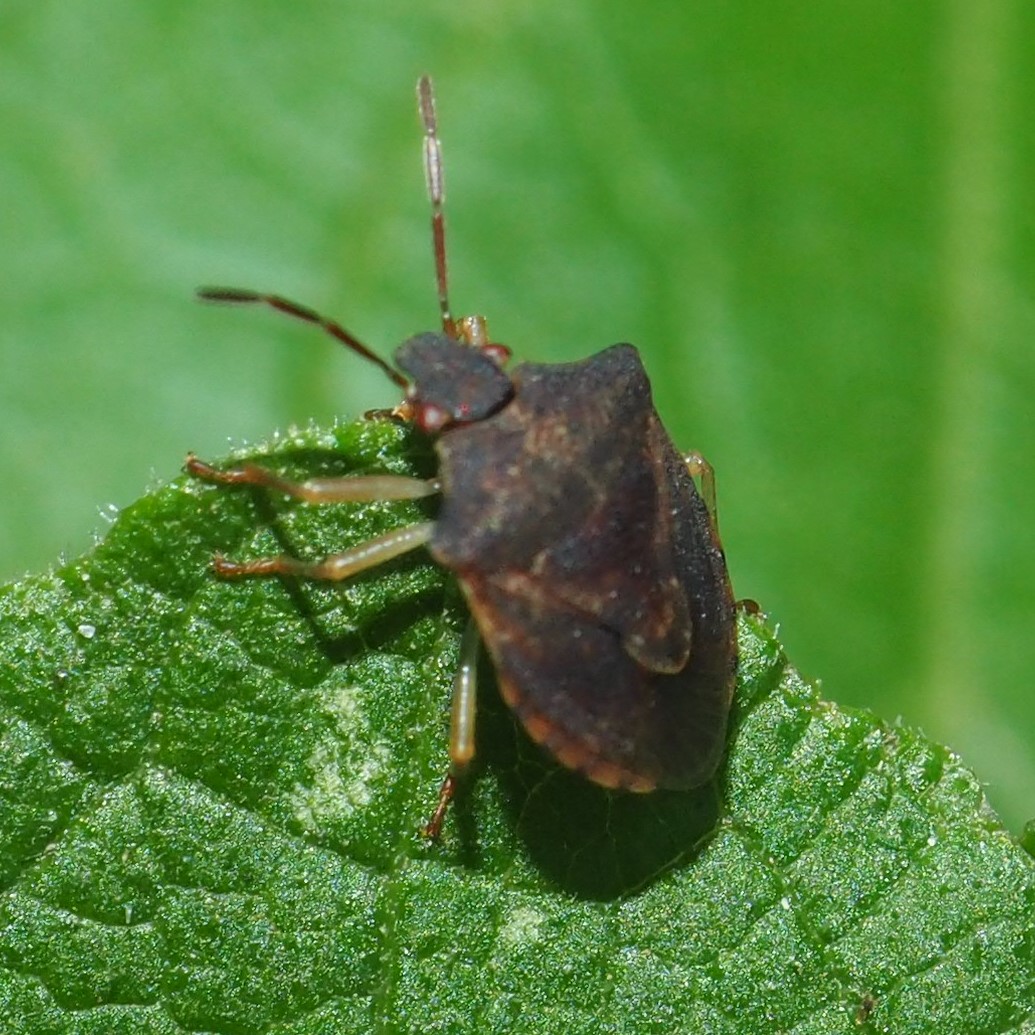
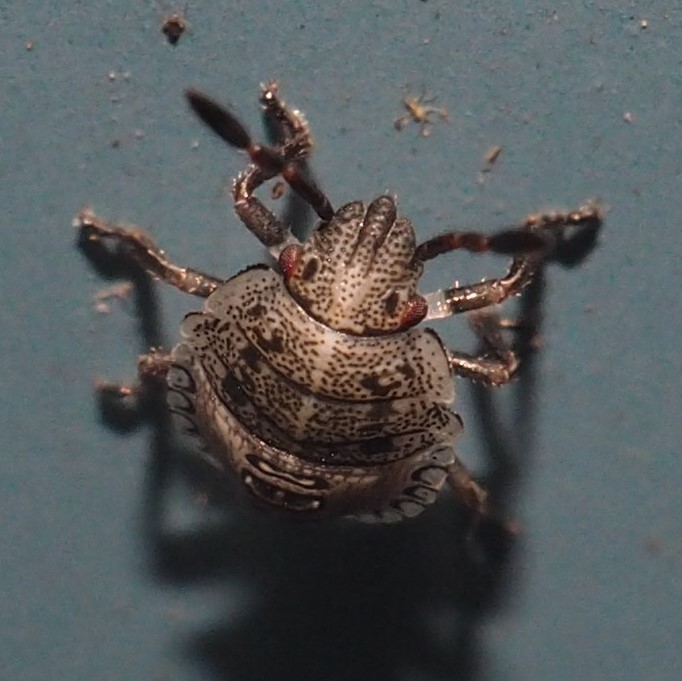
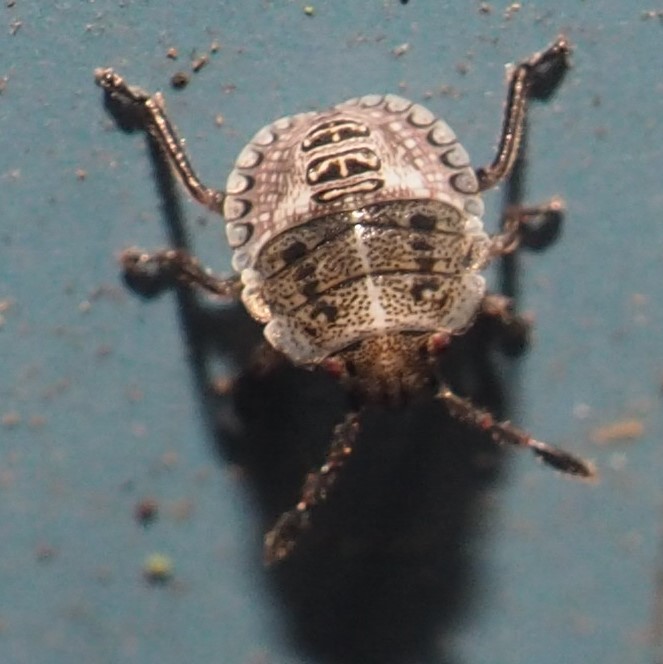
A furry brown Bee? No, a Bee Fly, a Fly mimicking a Bee! Second, a Green Bottle Fly, which looks so good on Gold. Third shows a Green Bottle and a tiny Wasp!
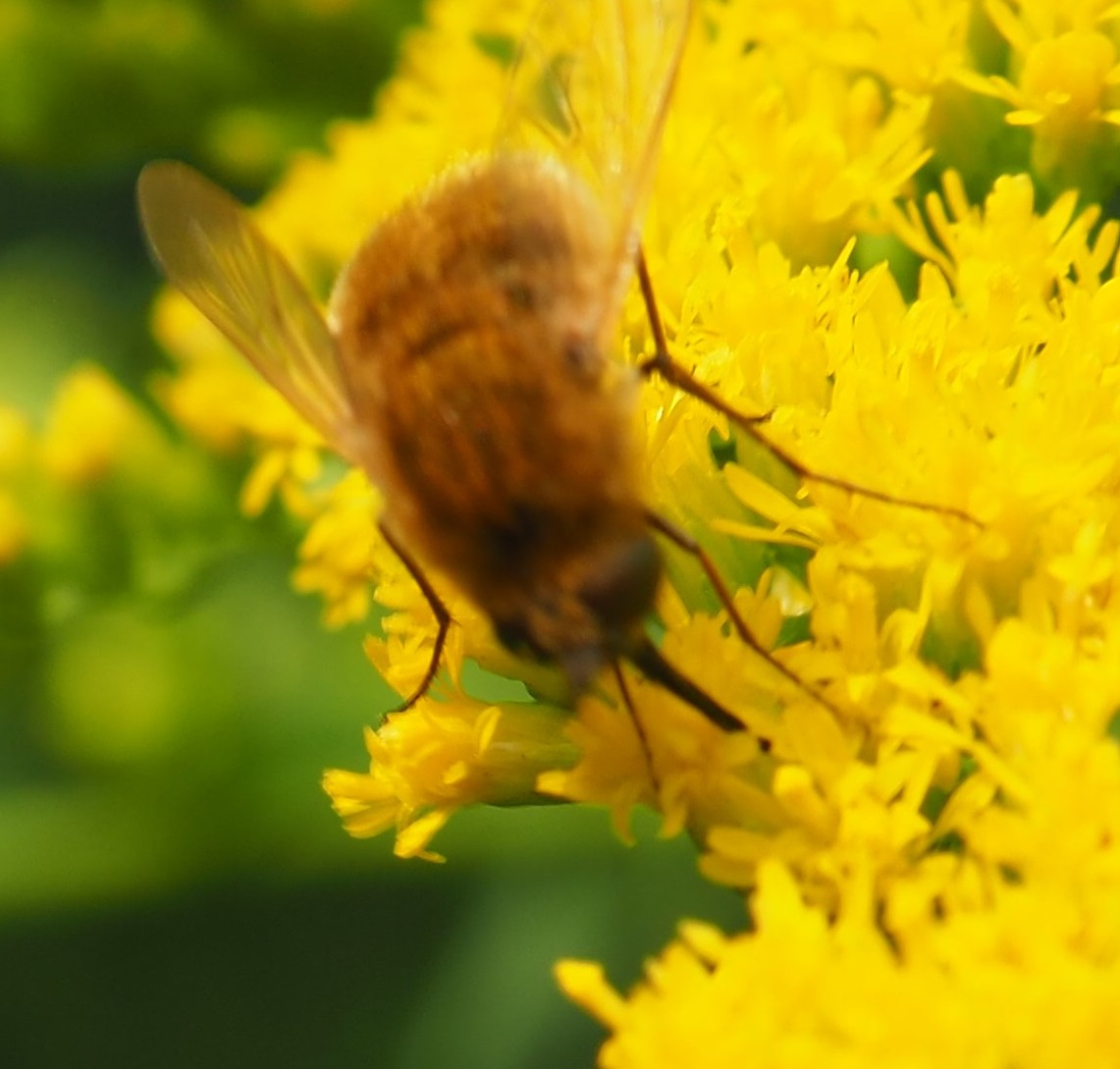
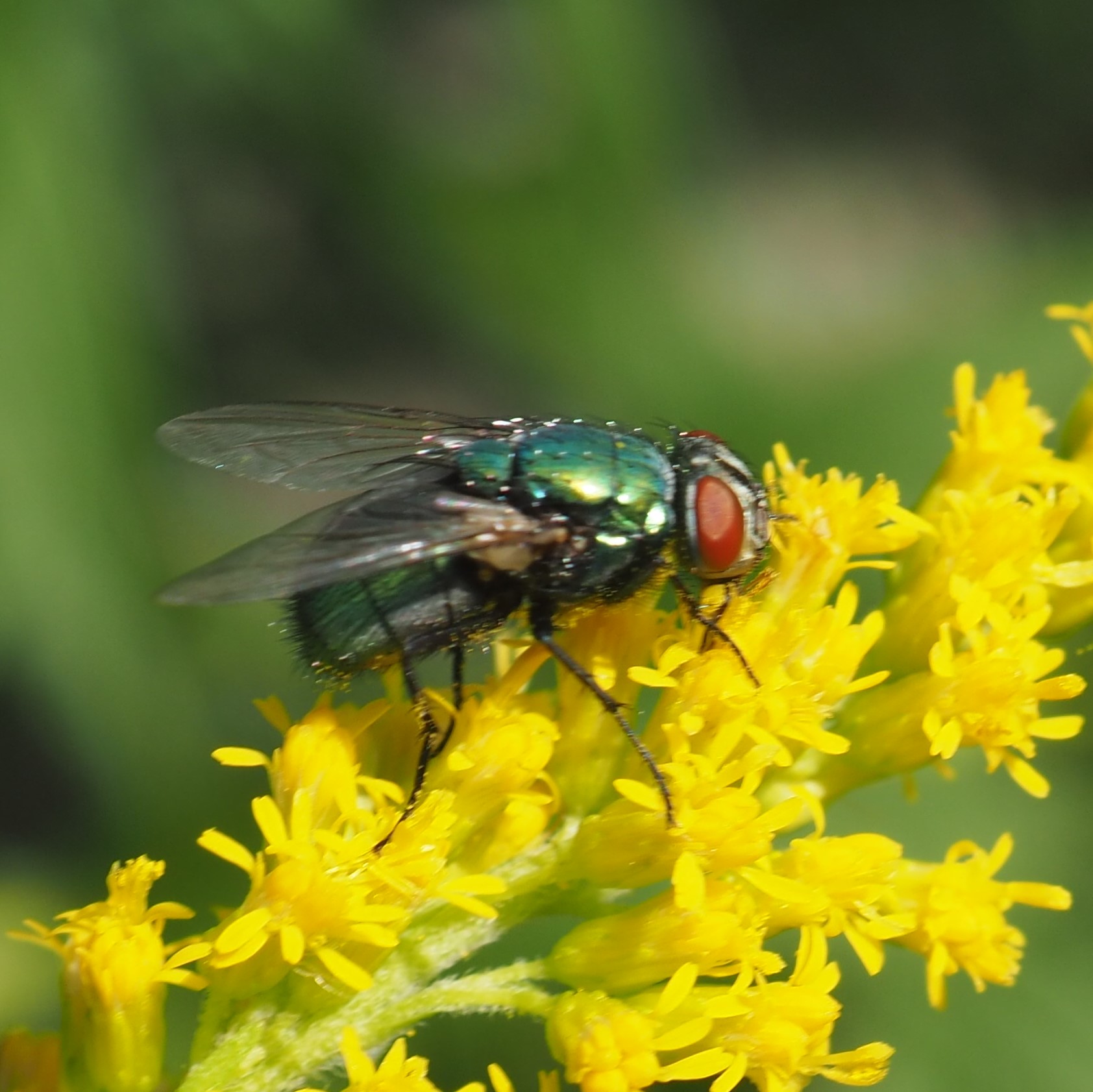
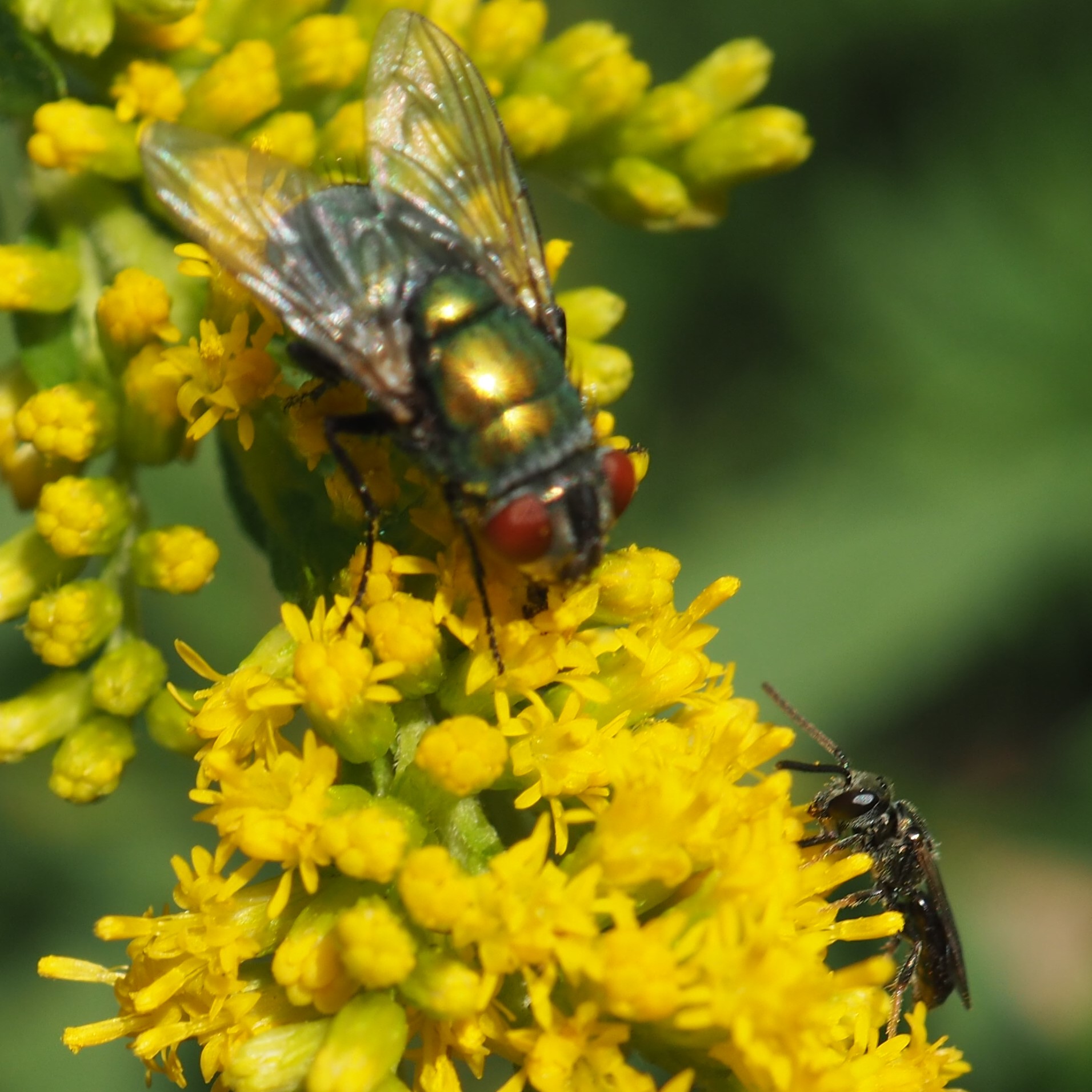
Here is a little Gall Midge. And a Midge. Third seems to be a darkish Fly of a type we see often but never get the name right.
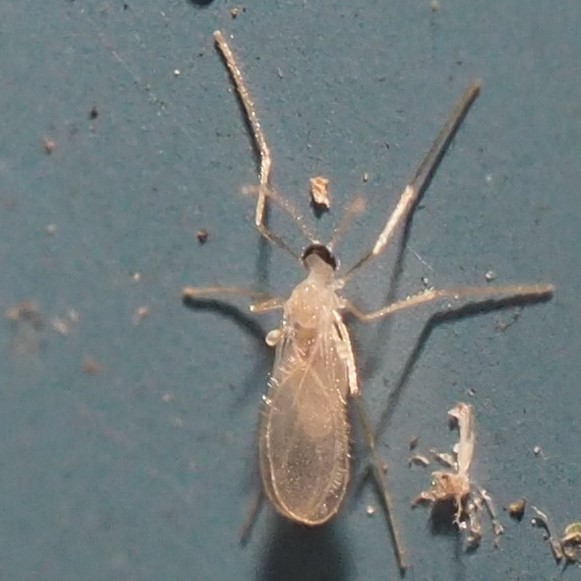
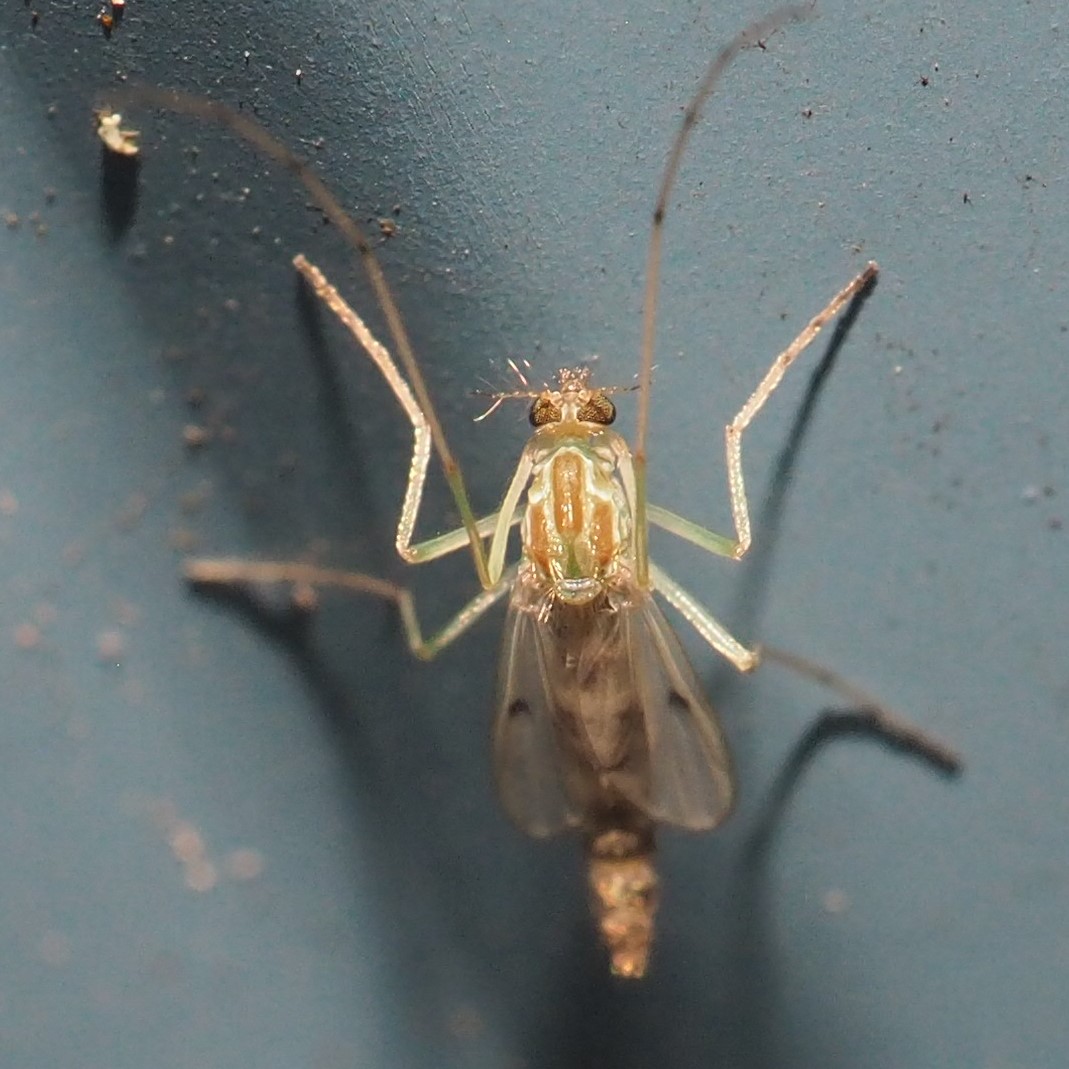
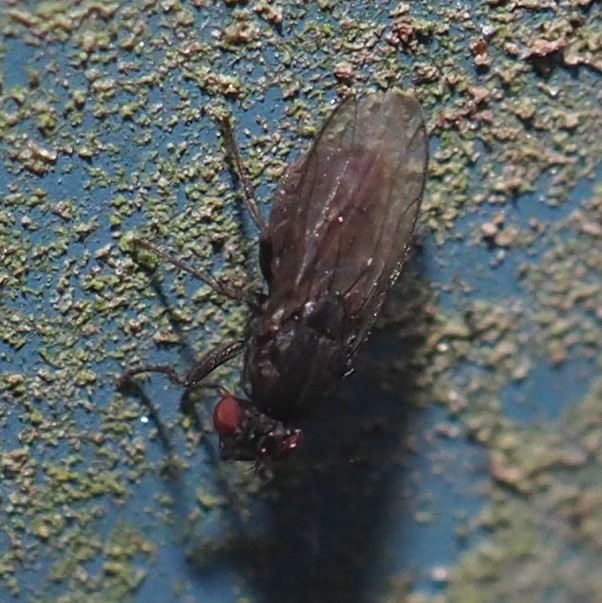
Here are a couple of Hover Flies. First seems to be a member of genus Eupeodes, while the second is Toxomerus geminatus, a very common little Fly. I like it when the very photogenic little flies head for the most colorful Aster blooming now. (They only started at the beginning of this week!)
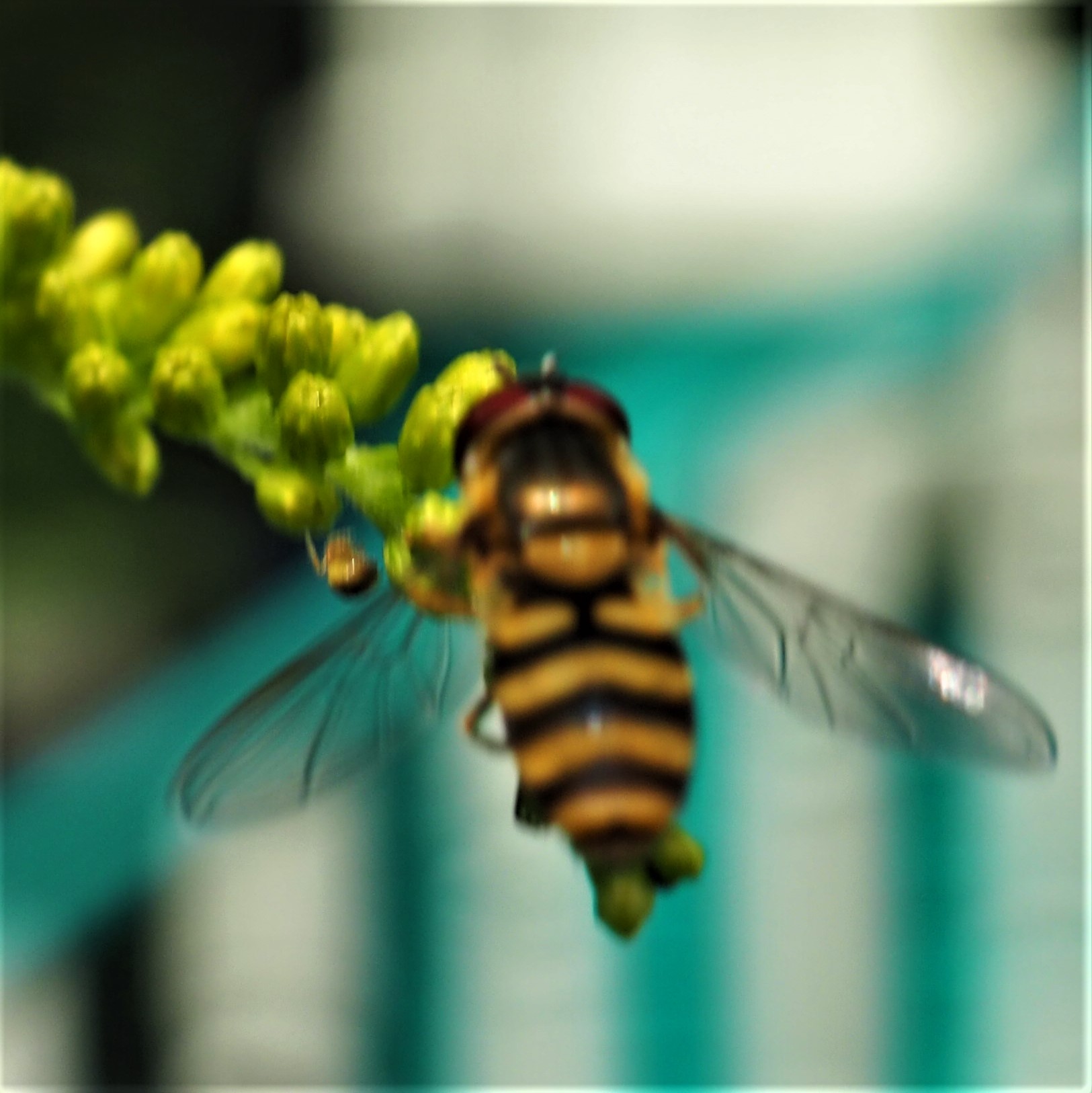
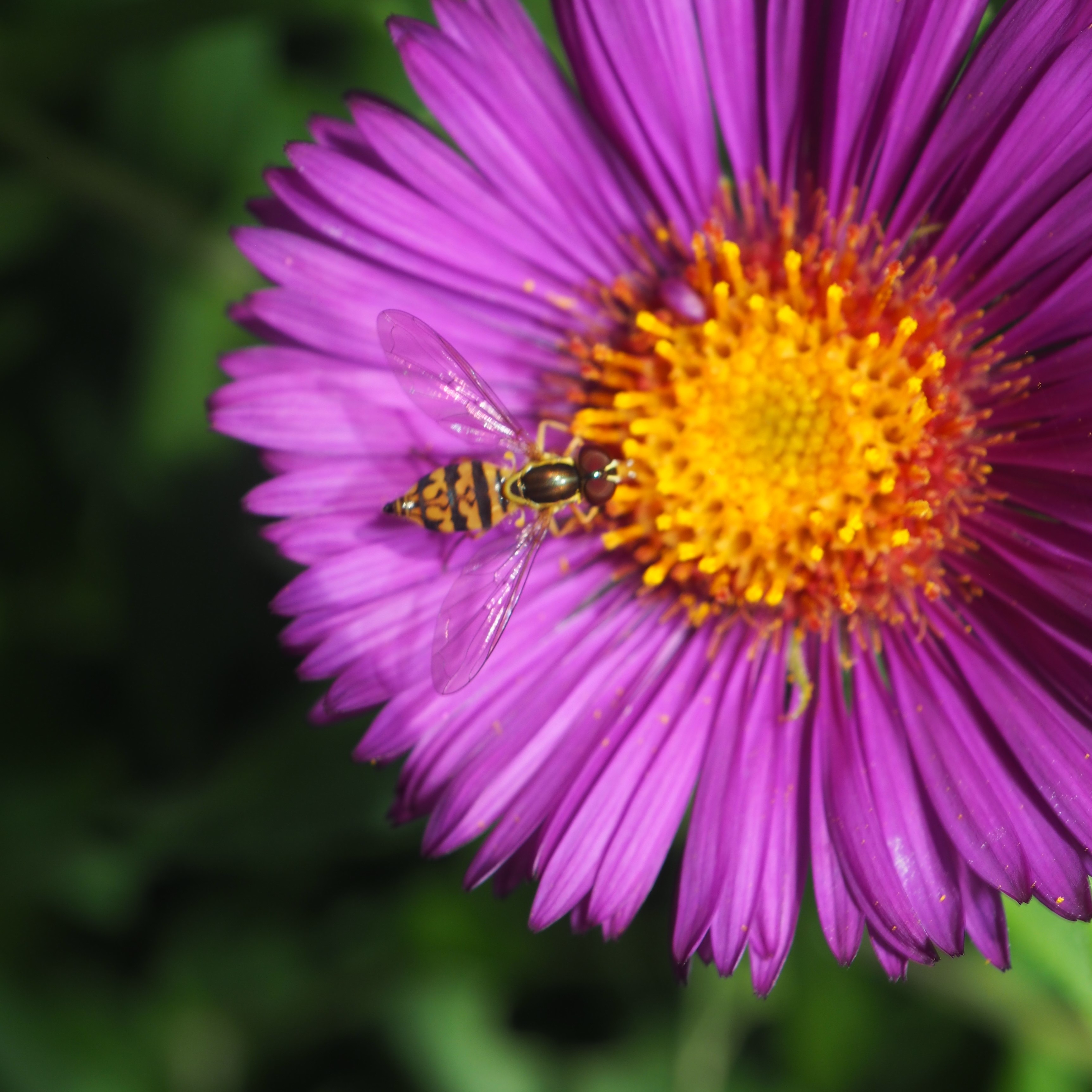
Here are some (or maybe one) of the Mosquitoes we saw and heard and felt the prick of this week. The first is most likely the Asian Bush Mosquito, which is in the Aedes genus. The next one seems to be a different member of Aedes, Aedes trivittata (three-stripes). And last, maybe same as second and maybe another Aedes Mosquito, the Treehole Mosquito. Depends on how many stripes there are in the third picture. I was only seeing one.
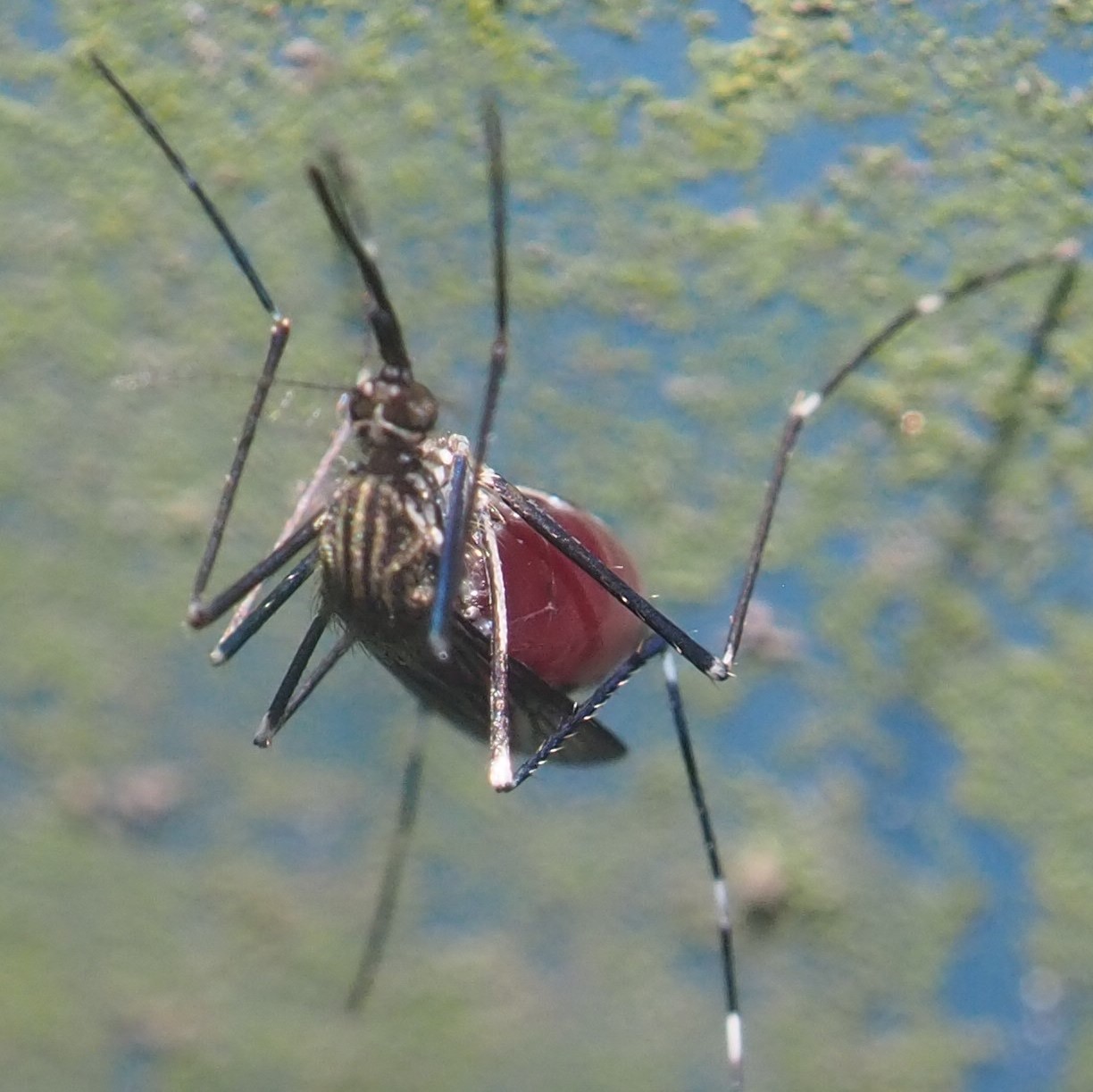
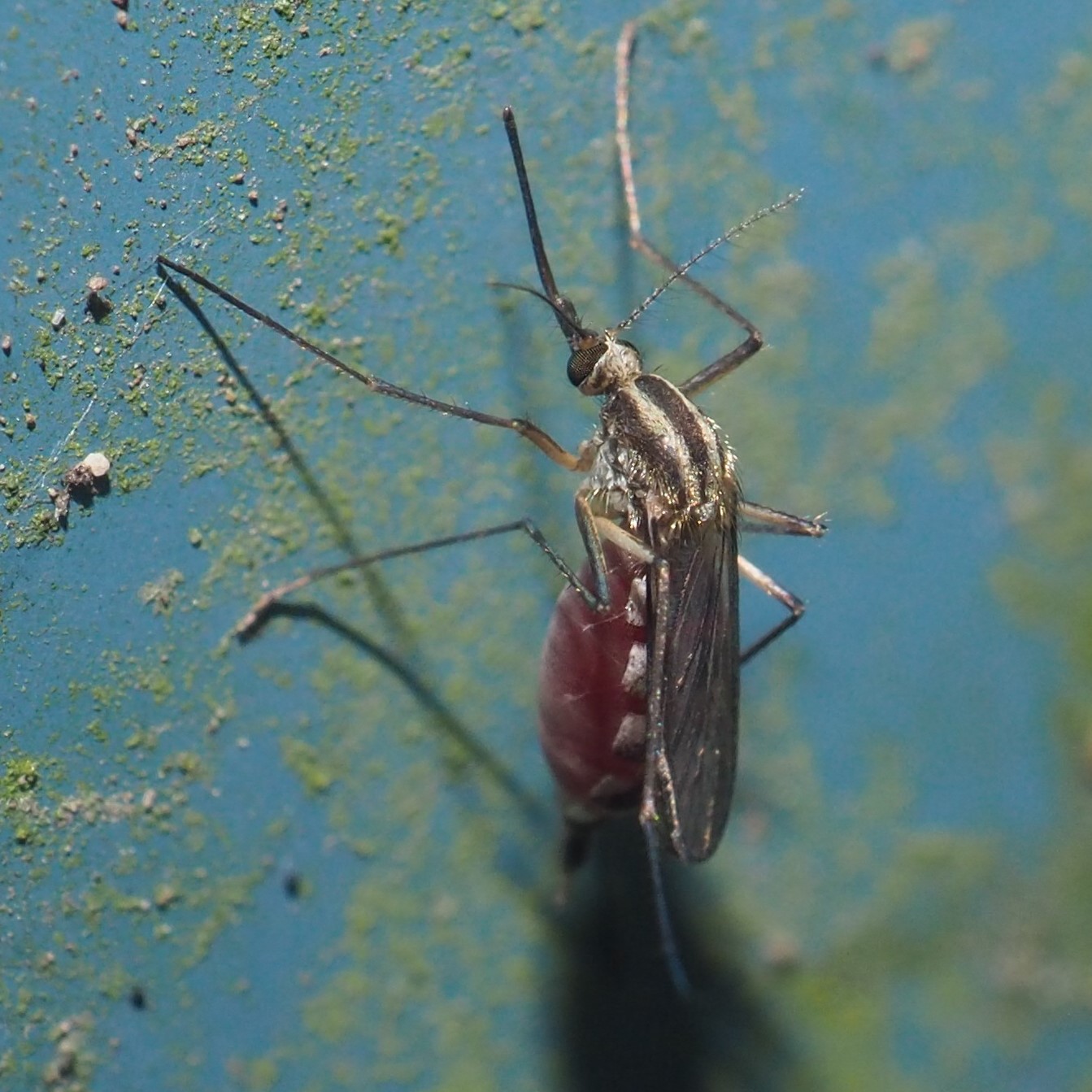
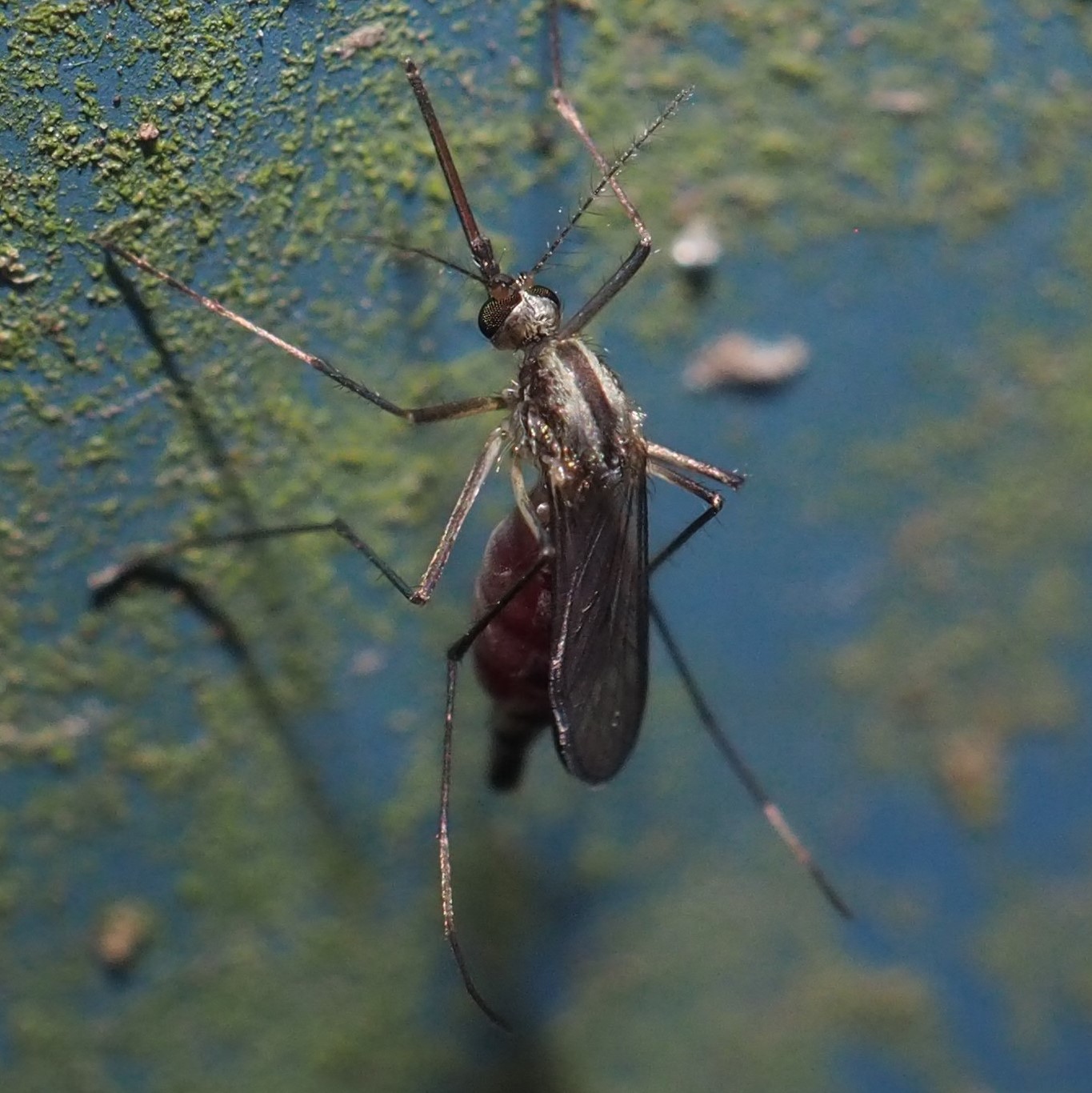
This looks as if it belongs in the genus Minettia, like the Minettia lupulina that we seem to see so often these days. The second MIGHT be one of the Flesh-eating Flies. And the Third looks like those yellowish Root-maggot Flies.
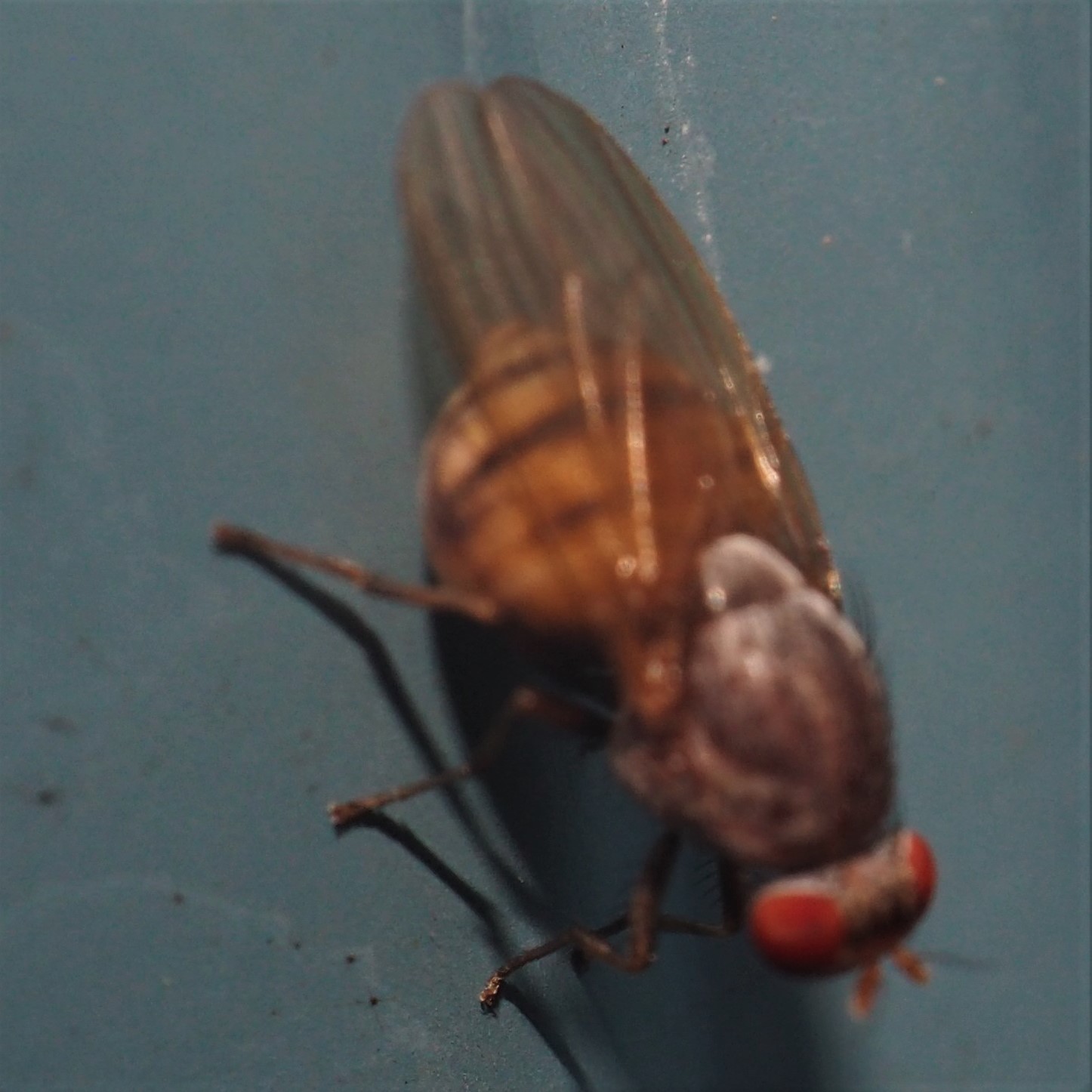
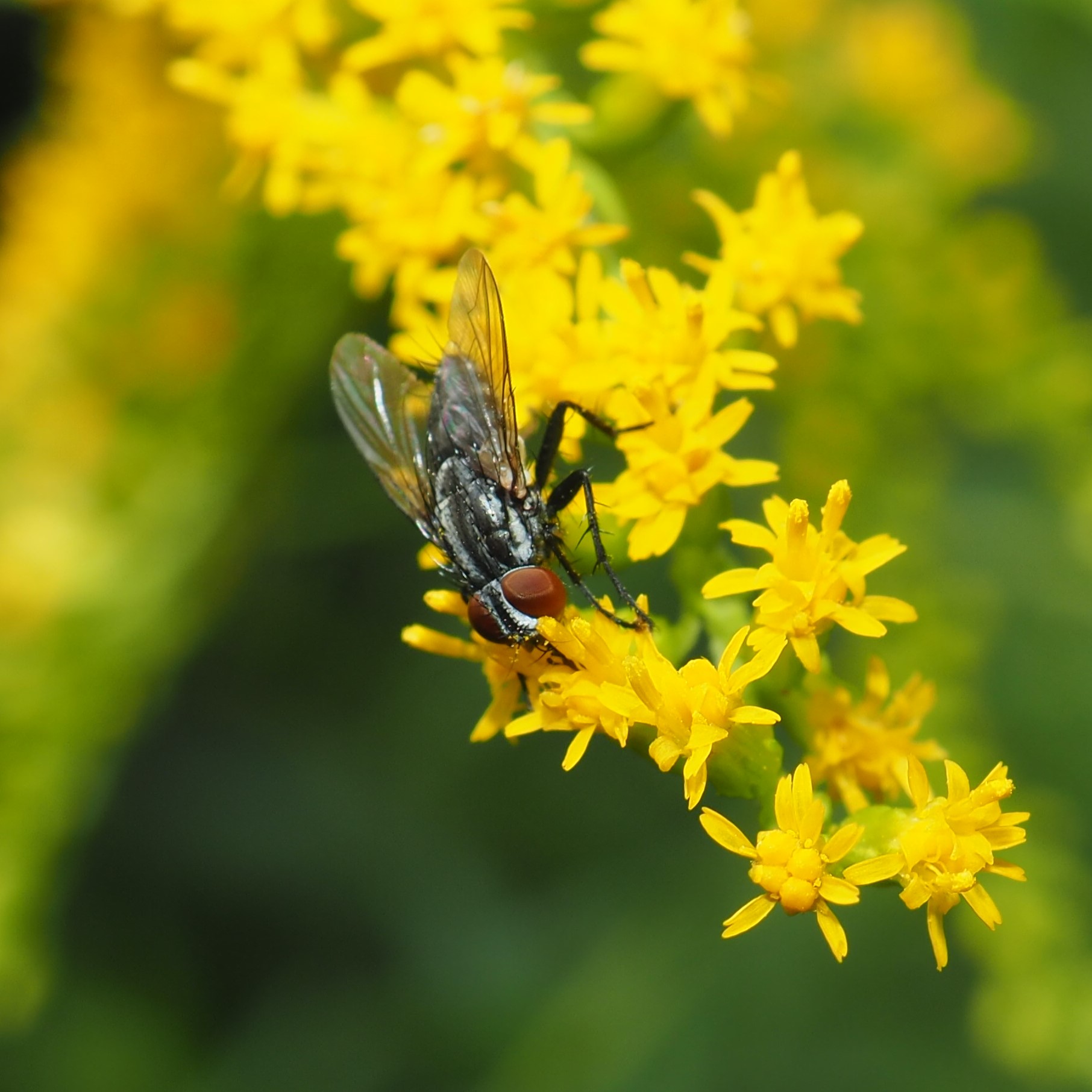

Here's a Wasp, right in the midst of the Fly Section - or is it? You're right, it isn't a Wasp, but a Fly mimicking one. This is Trichopoda plumipes (hairy-wings feather-wings). It's a Fly with feathery back wings. No stinger. A very pretty little Fly and surprisingly easy to photograph. I was able to just follow it with the lens and hardly lost any to its trying to escape. Third is a relative, Trichopoda pennipes (hairy-wings wingy-legs) It surprised me while I was starting to focus on the goldenrod, and so I only got this one picture. When I submitted it to iNat, I was told it was definitely Trichopoda but not definitely pennipes. The orange abdomen in my picture is darkened about halfway down, and most pictures of T. pennipes don't have this "feature". The reviewer said it probably WAS T. pennipes but not definitely.
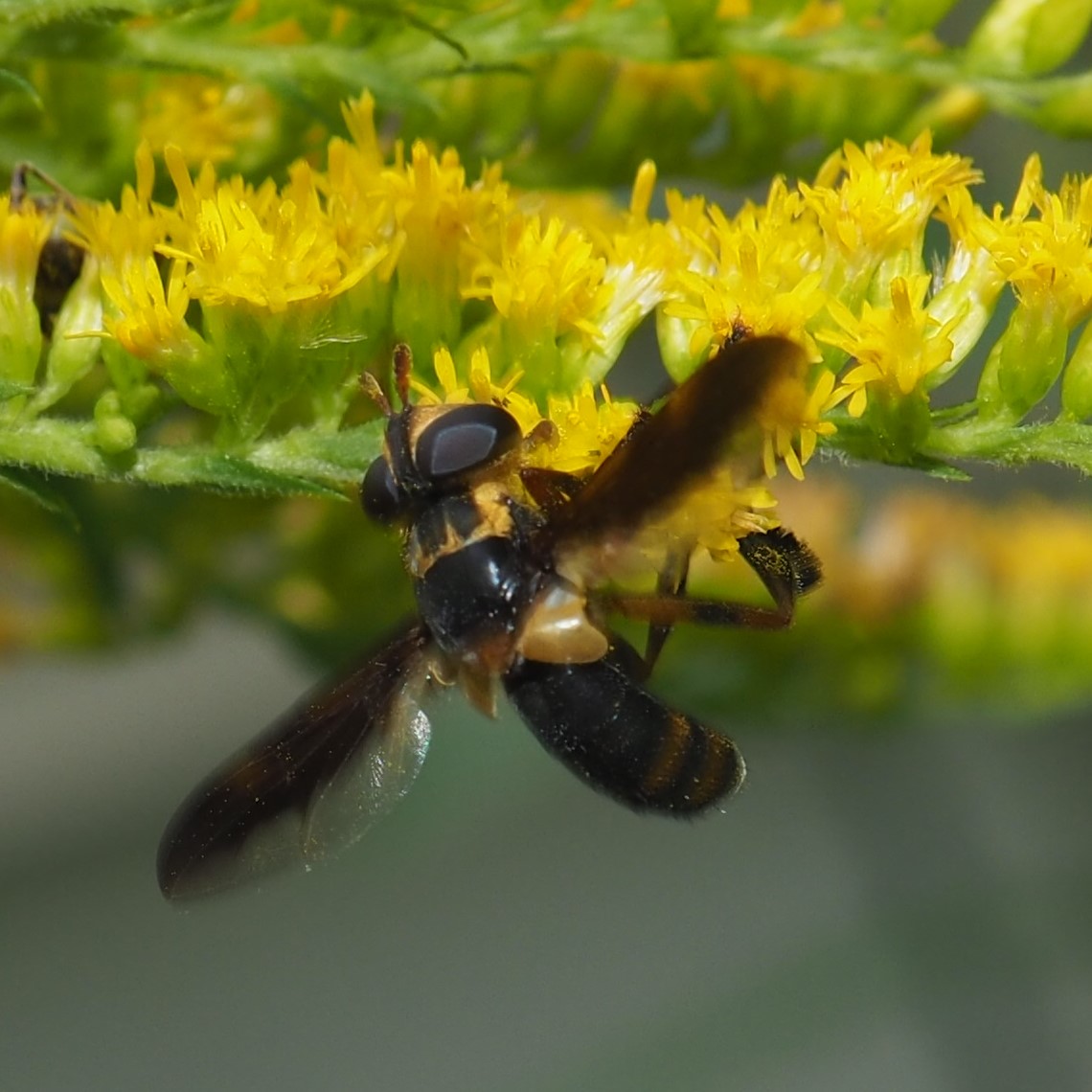
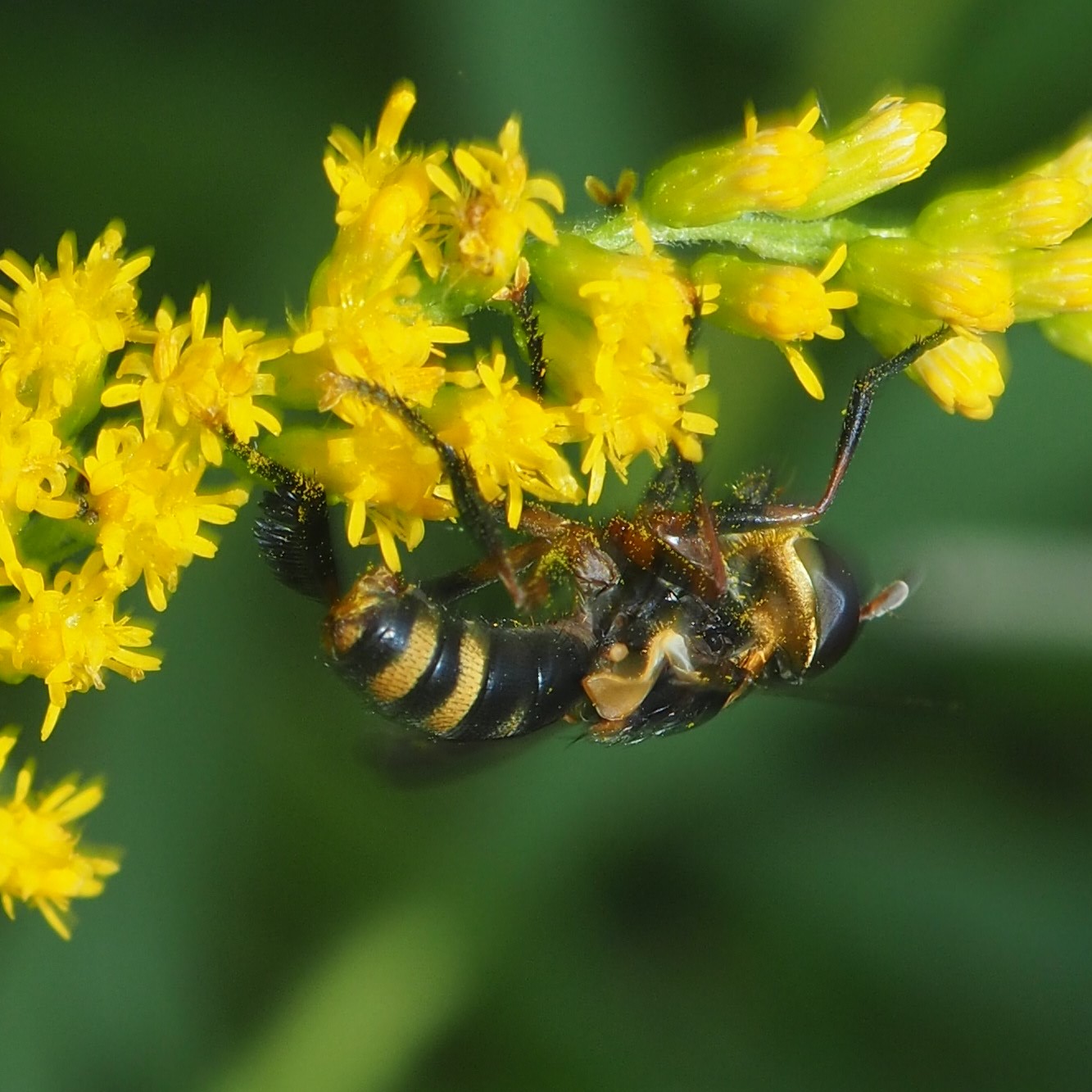
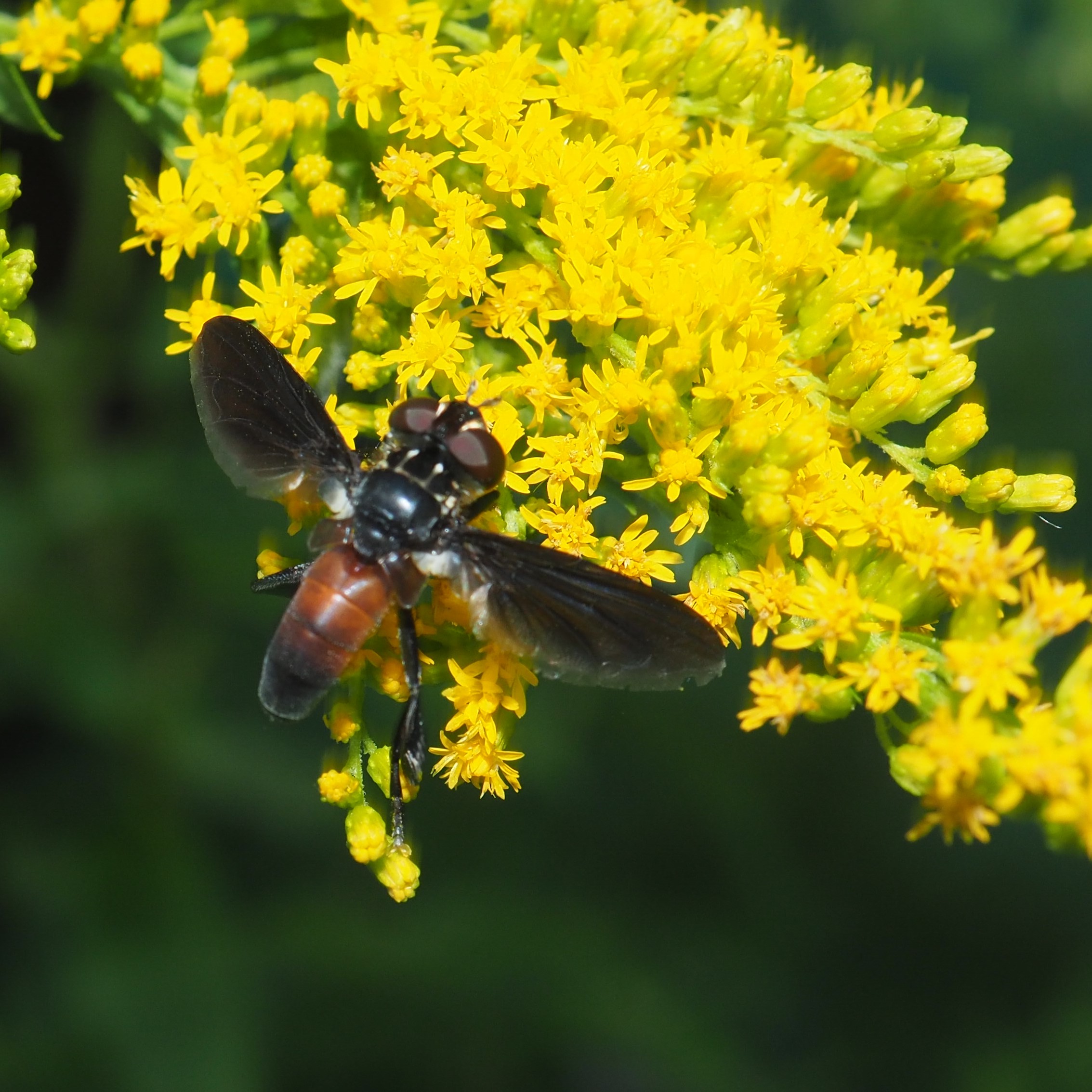
Here are two tiny mystery Moths. And one big Jumping Bush Cricket, the only Orthopteran of the week. I walk around outside and hear these LOUD cries, but when I get to within a few feet of the sound, it dies out and I've never yet found the singer. This may be one of them. It was in the window well of the Shop, South side.
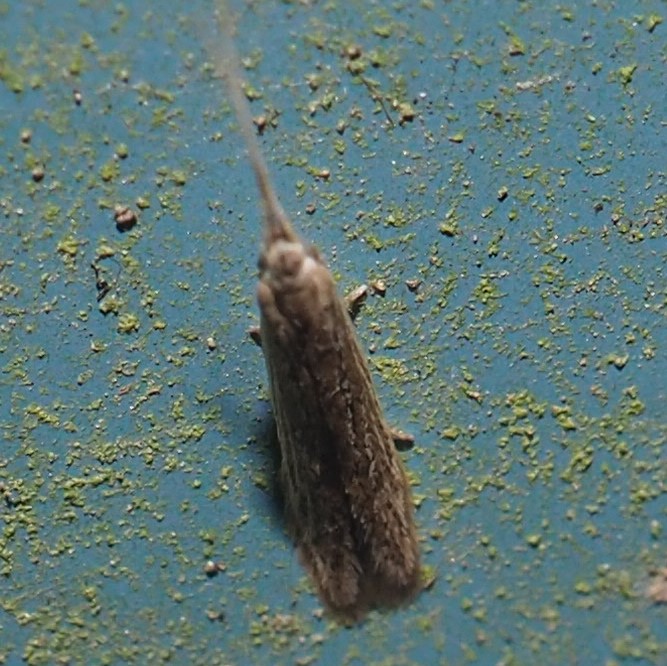
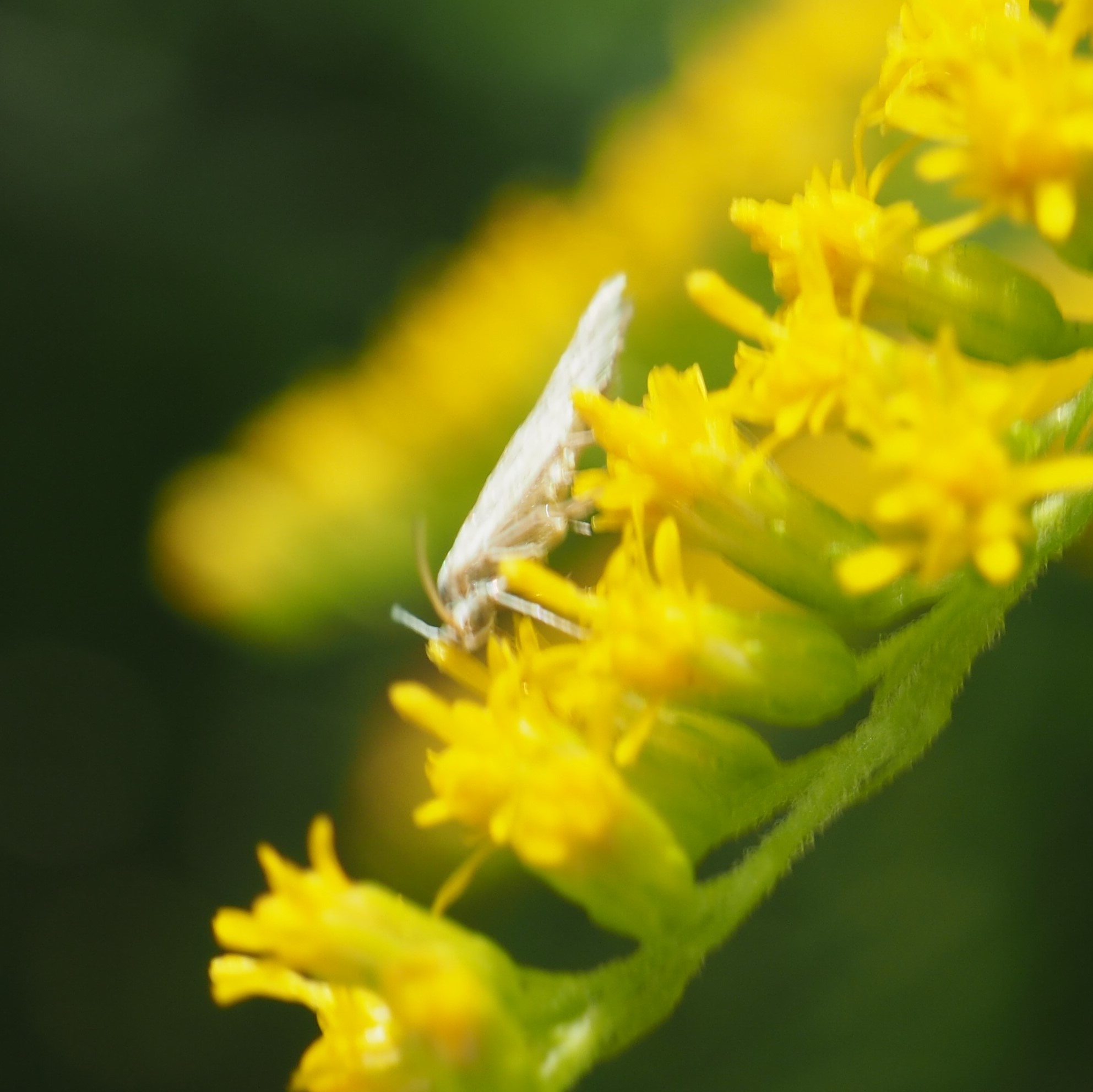
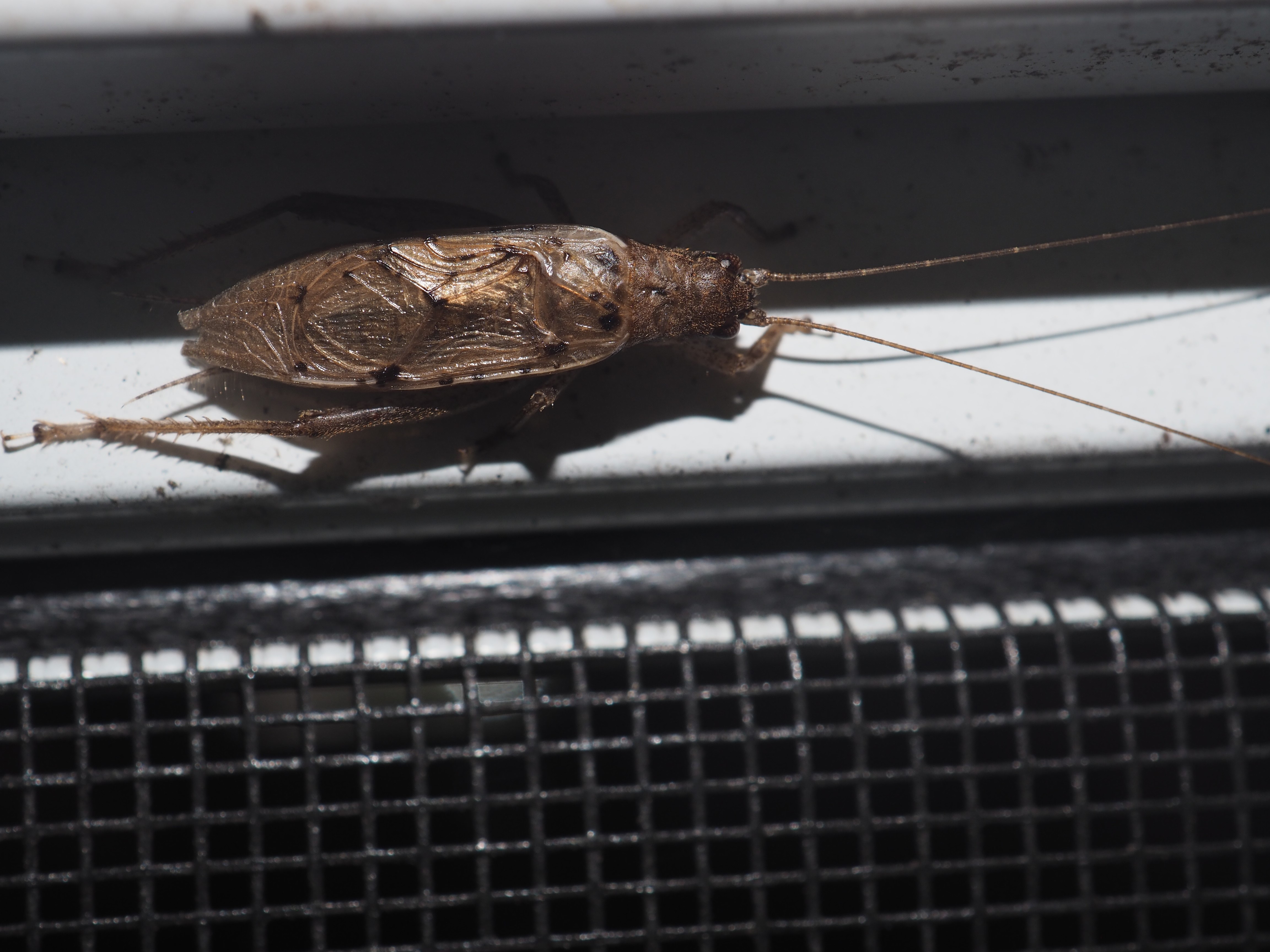
So now it's time for our Flower Walk. Here are some Fall Phlox and Goldenrod together, and then the Cultivated Fall Phlox out on the South Side of the Shop. Last is the Fleabane beside the Shop.
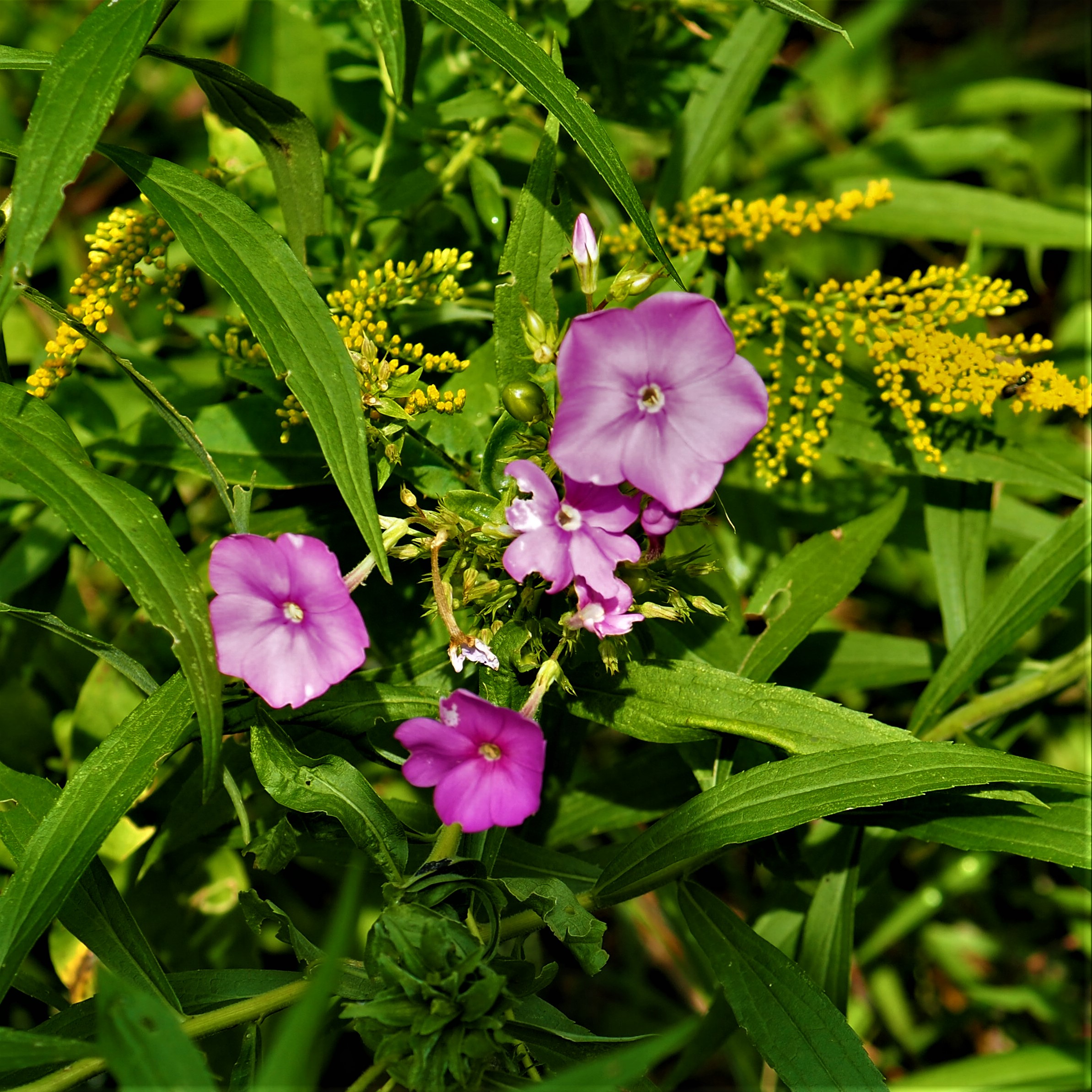
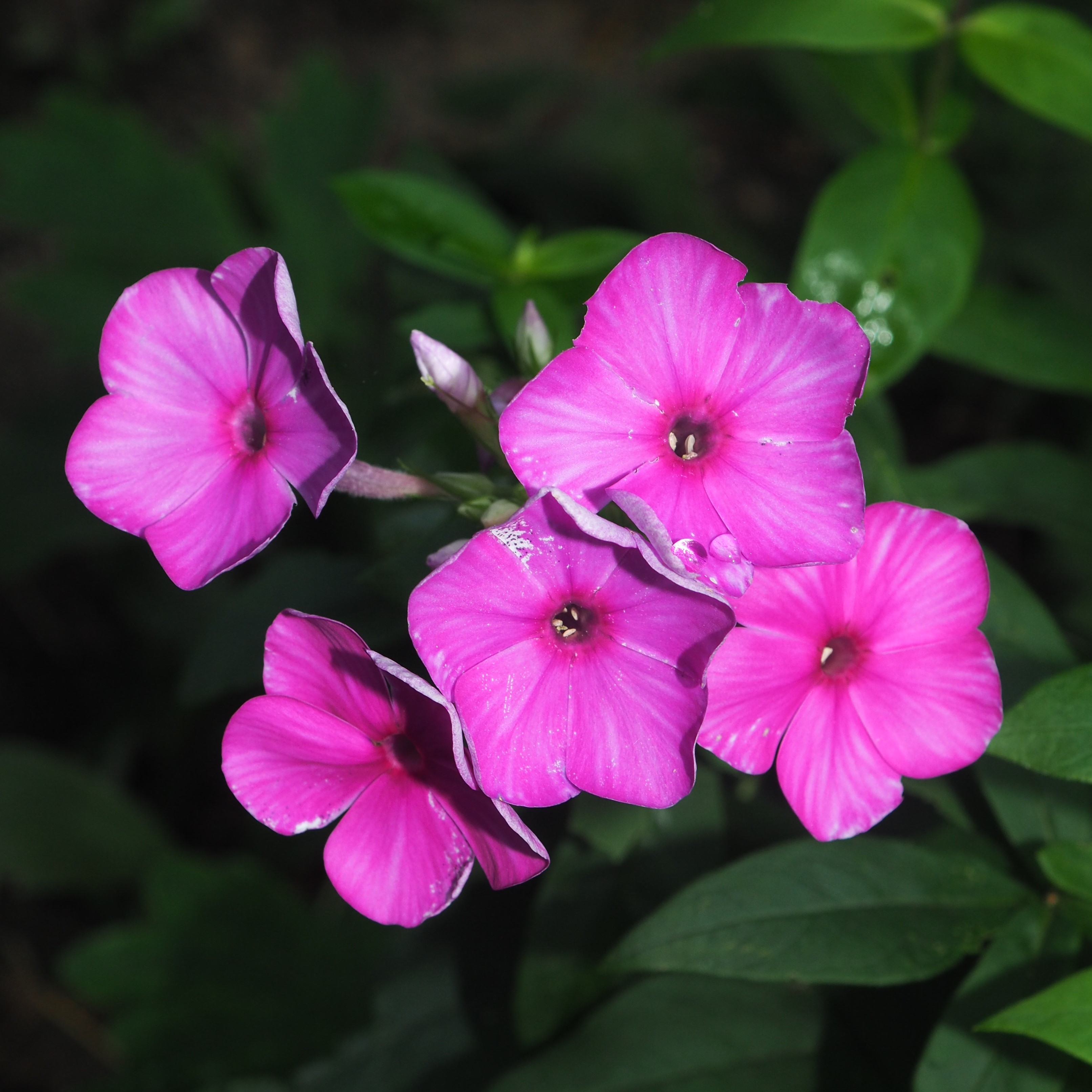
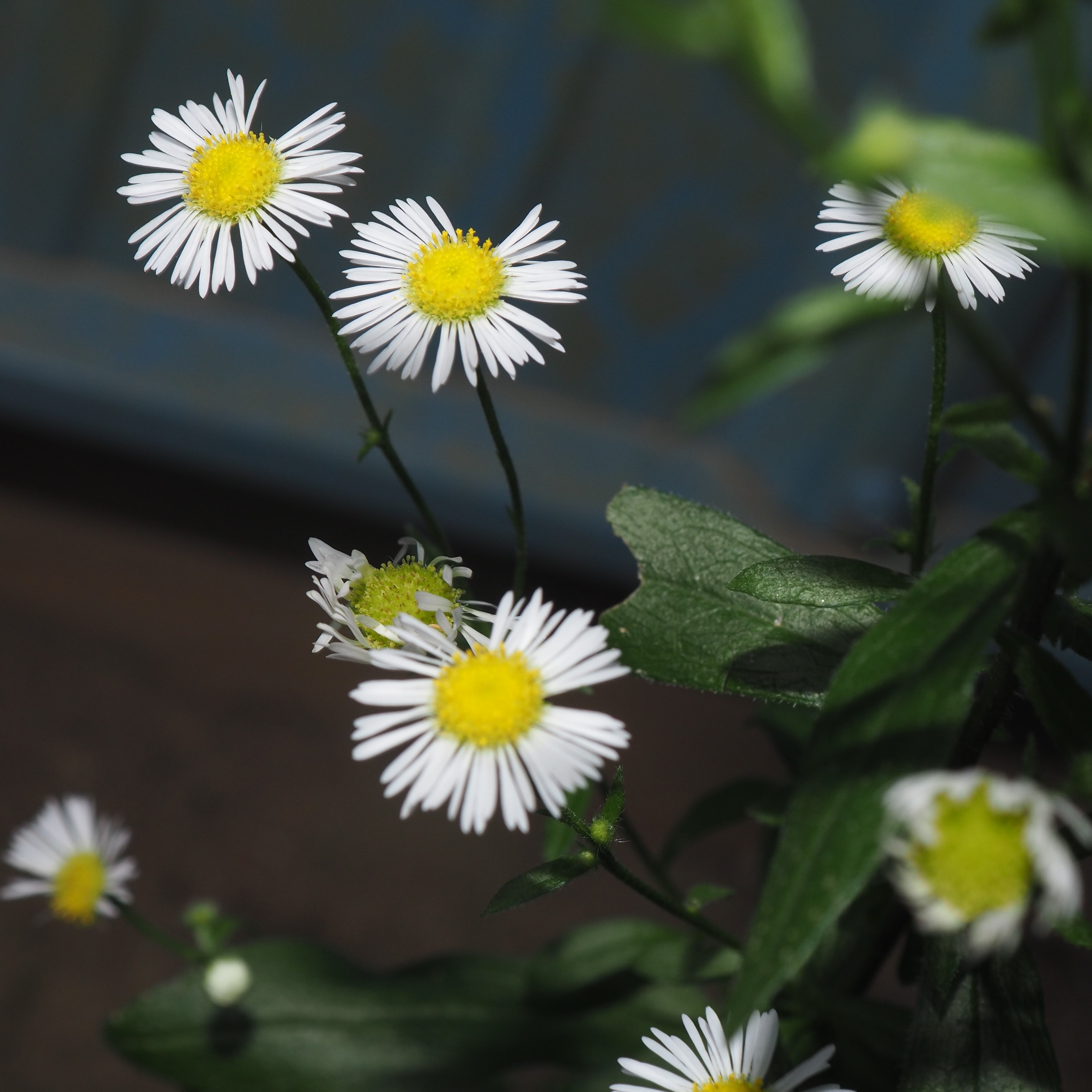
So far the Asters that have begun to bloom are the magenta and purple ones. Here's the former with a green visitor, another with the little Toxomerus geminatus Hover Fly, and a third paler purple with a Gold Sweat Bee.
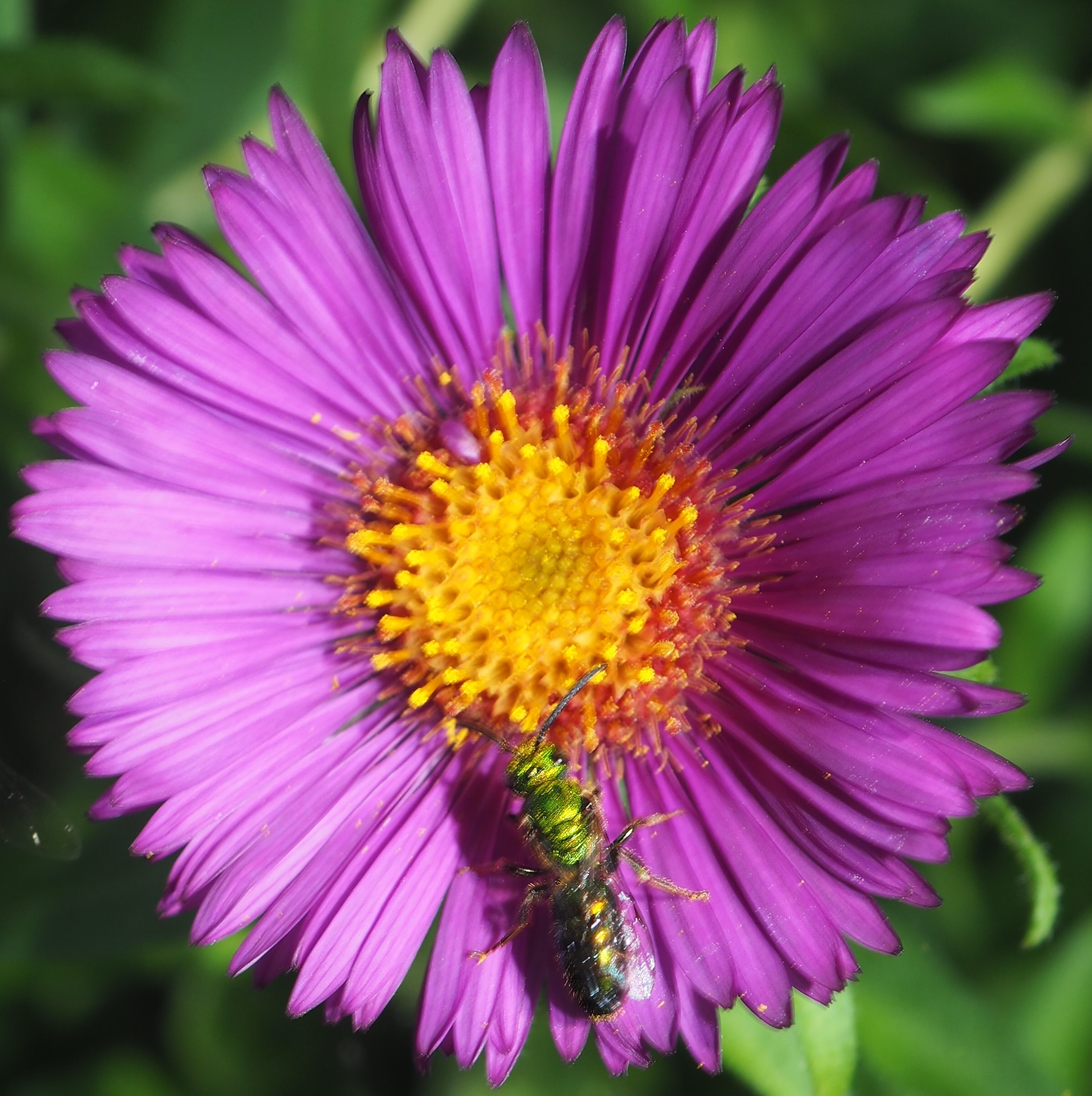
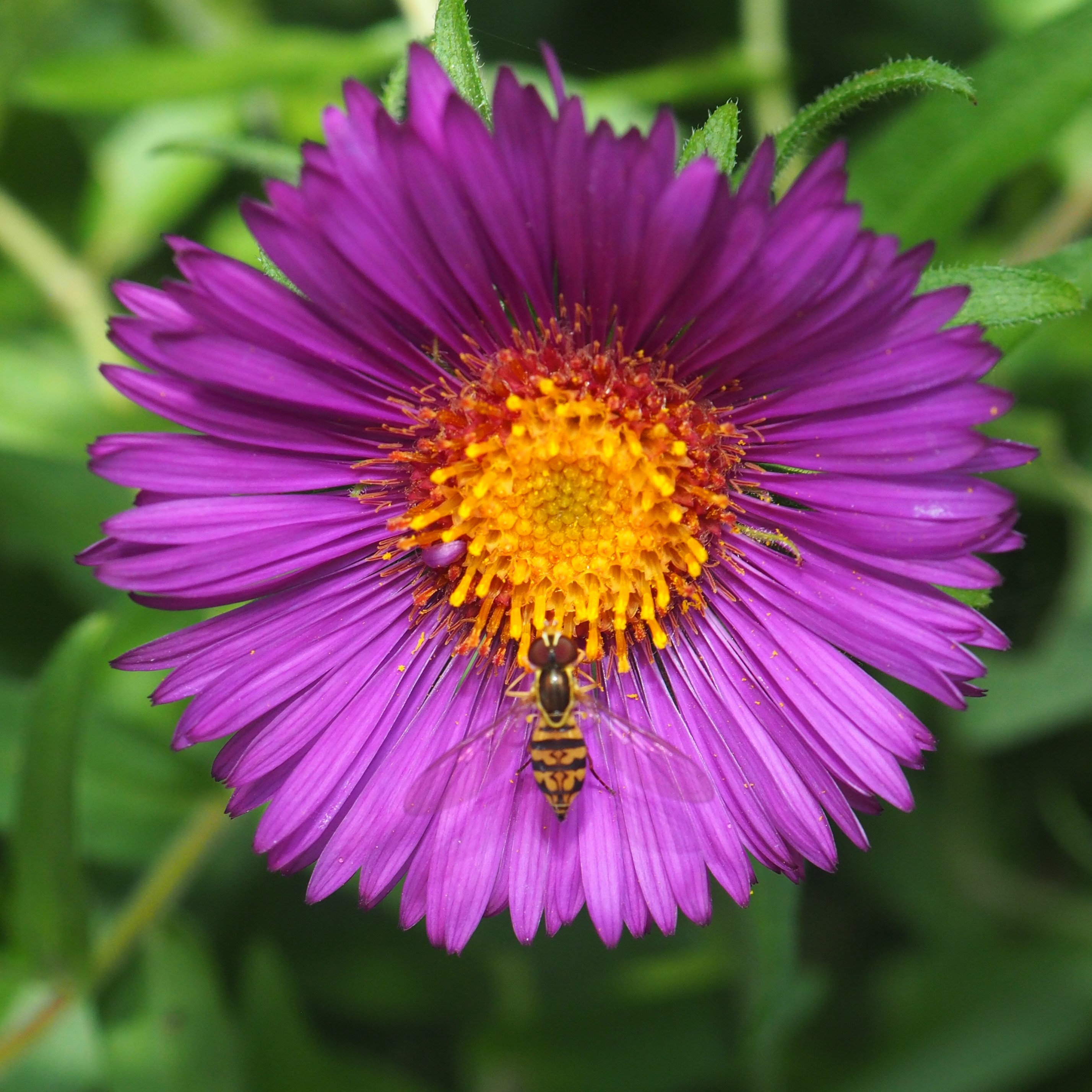

Those August Orange Day Lilies have been so prolific this year, I just had to put them all together in one picture, if you can believe that.
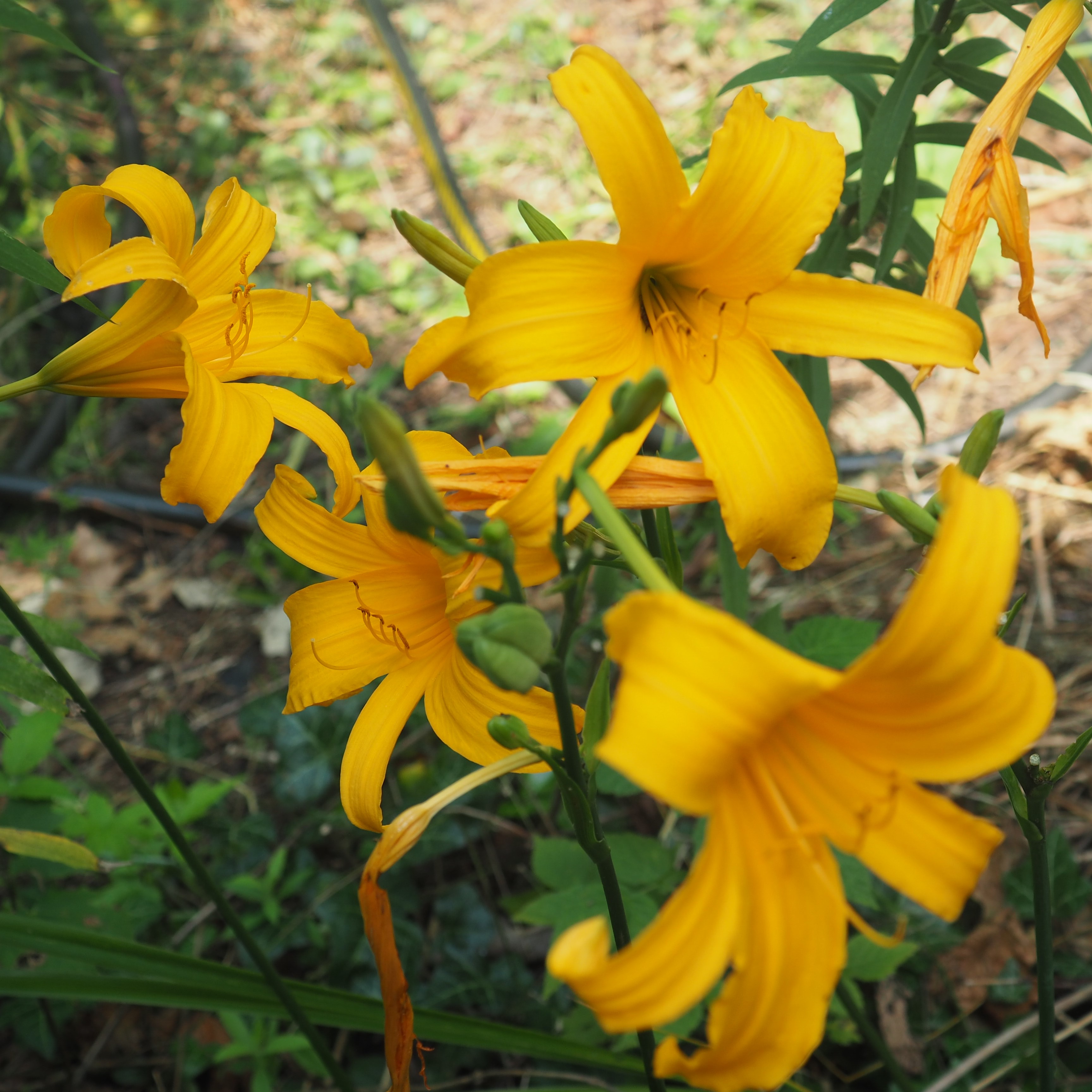
Here is a small stand of Honey Suckle, then the blooms of the Tall Evening Primrose from the evening before - this little bunch was just about at my eye level. Last, a singleton Spiderwort flower.
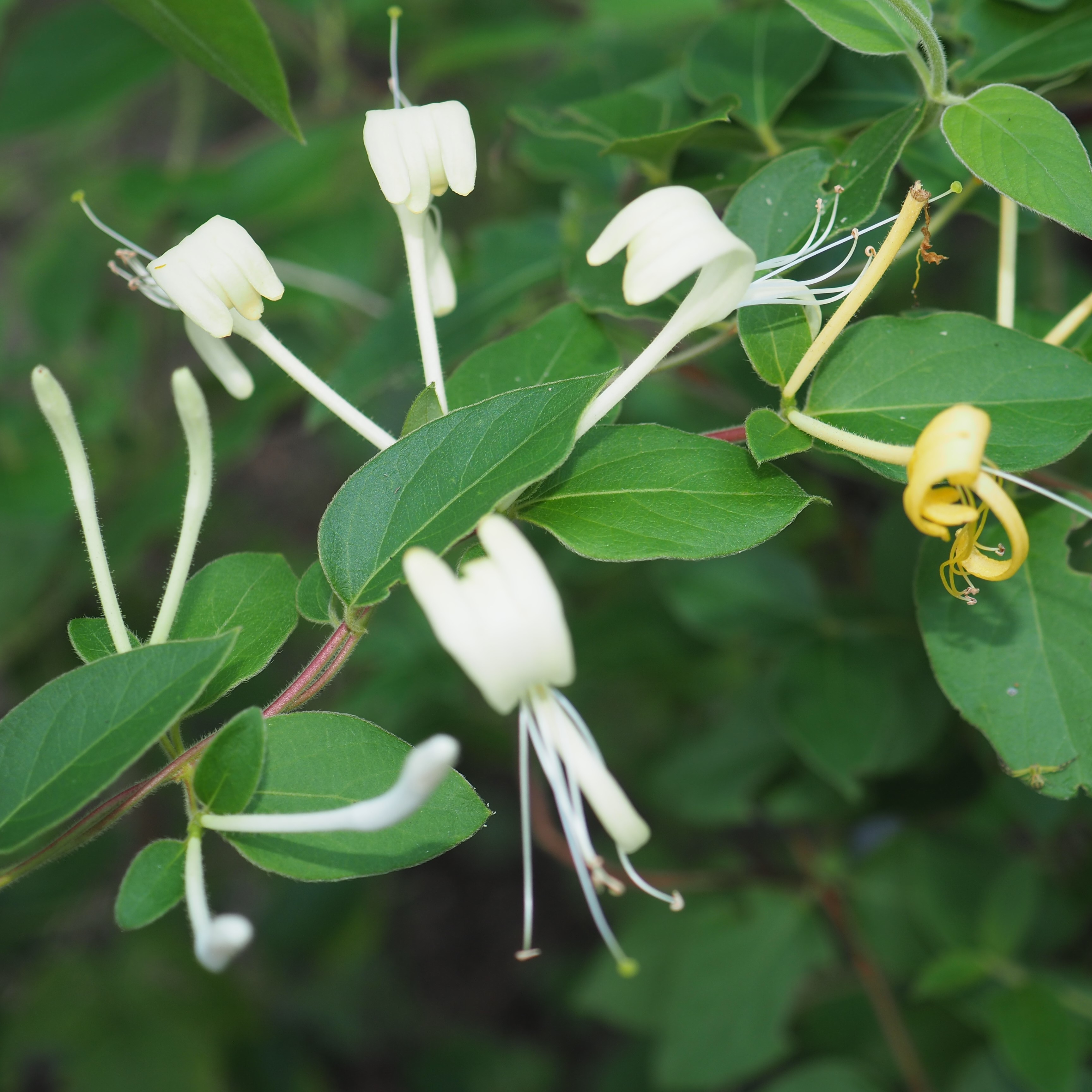
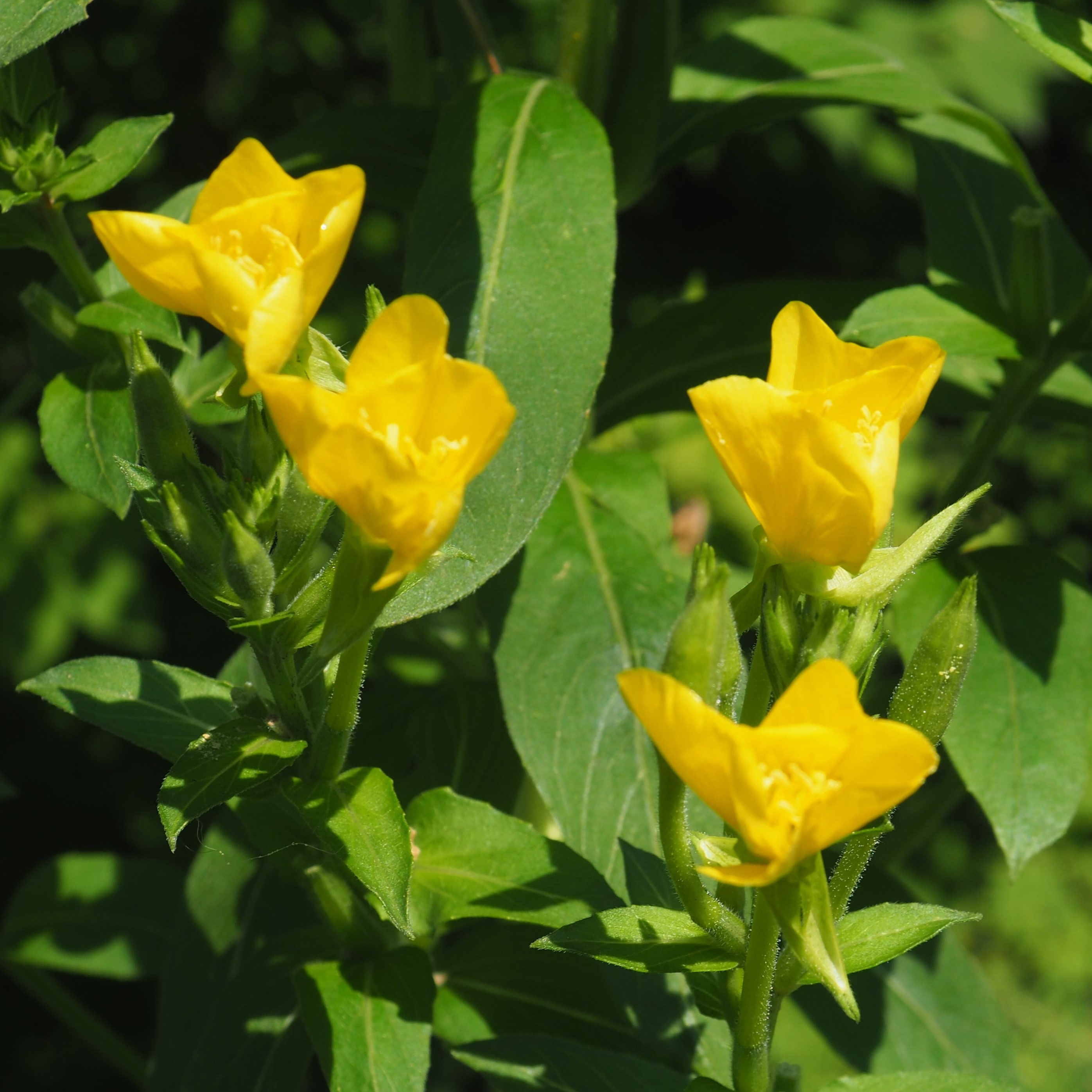
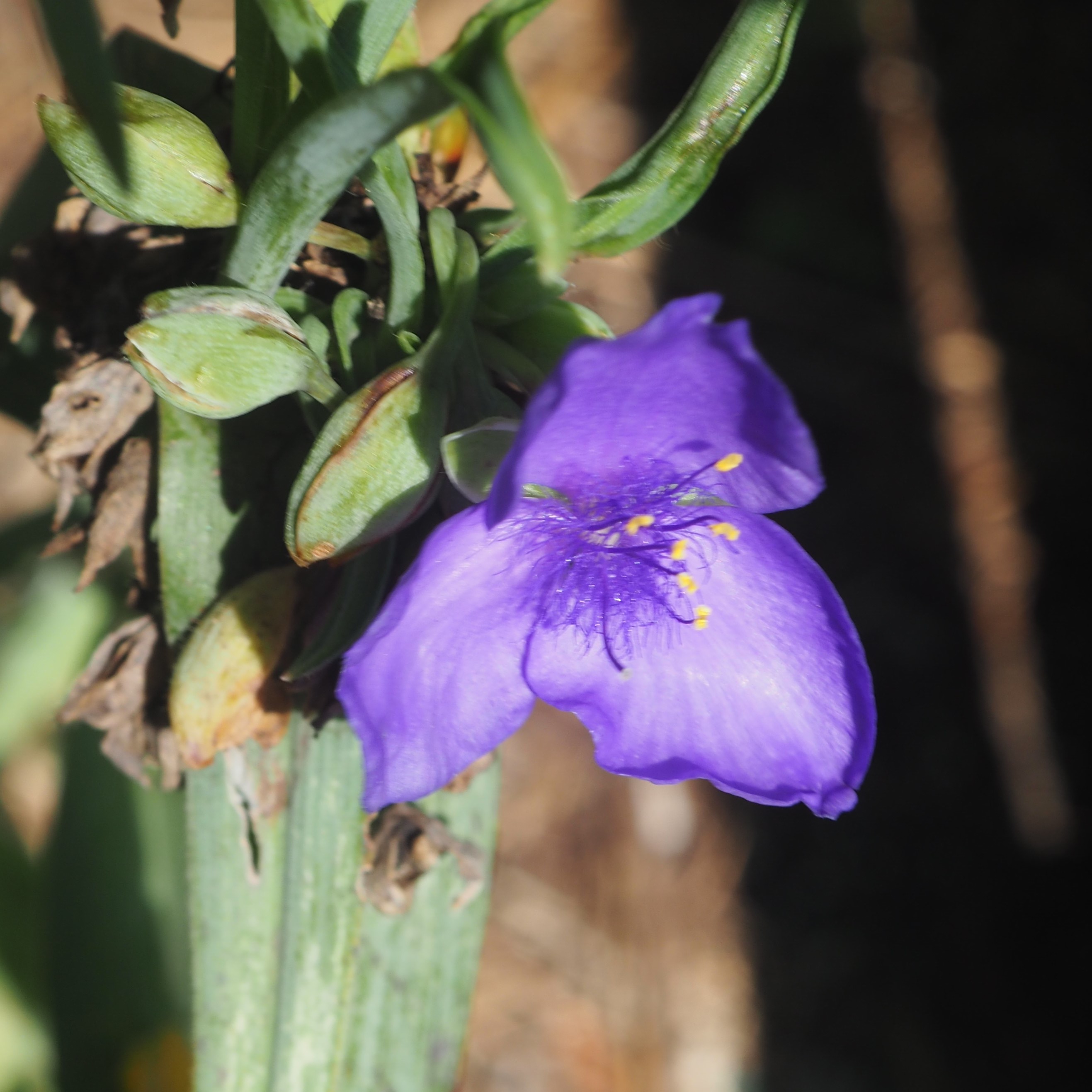
That was so refreshing. I now need a tall glass of Iced Tea, unsweetened if you don't mind. Because we are heading into the lair of the Spiders. First we see what I think is Northern Crab Spider with a nice bit of teatime prey. Then a couple of "get-even" pictures - this time the Spider is dragging along a huge Wasp!


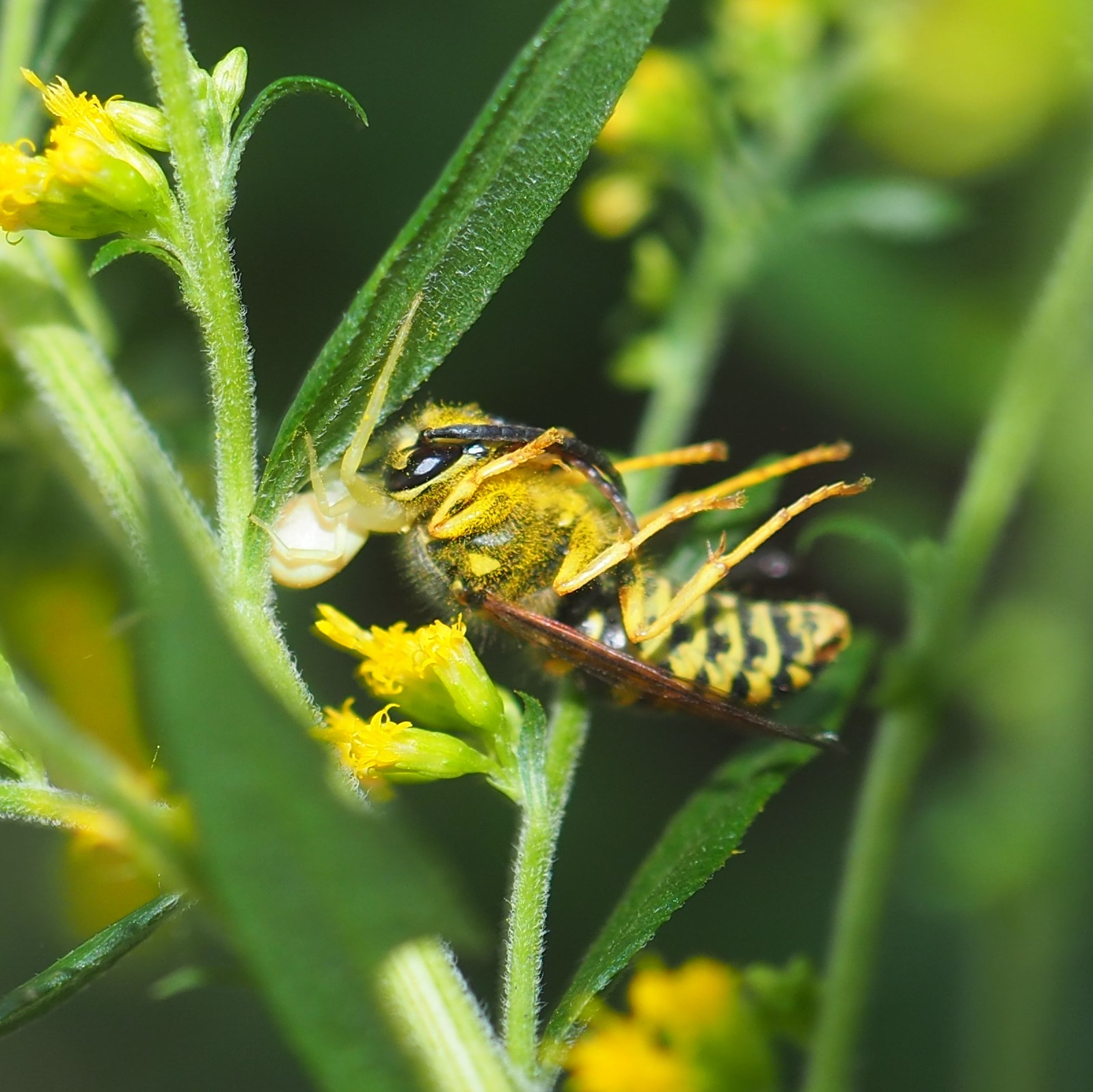
Here are a few Spider with Prey animal shots. This first Spider has caught a big Beetle and is wrapping it up for later. Next, another Spider who fancies a nice bit of Wasp. Third is likely a very juvenile Juvenile Mimetus Pirate Spider. Note the design on its head which is much "sketchier" than usual for our Mimetus puritanus Spiders. Note also the faint "smile" picture on its abdomen. In adults, the smile is usually quite bright white compared to the background color.
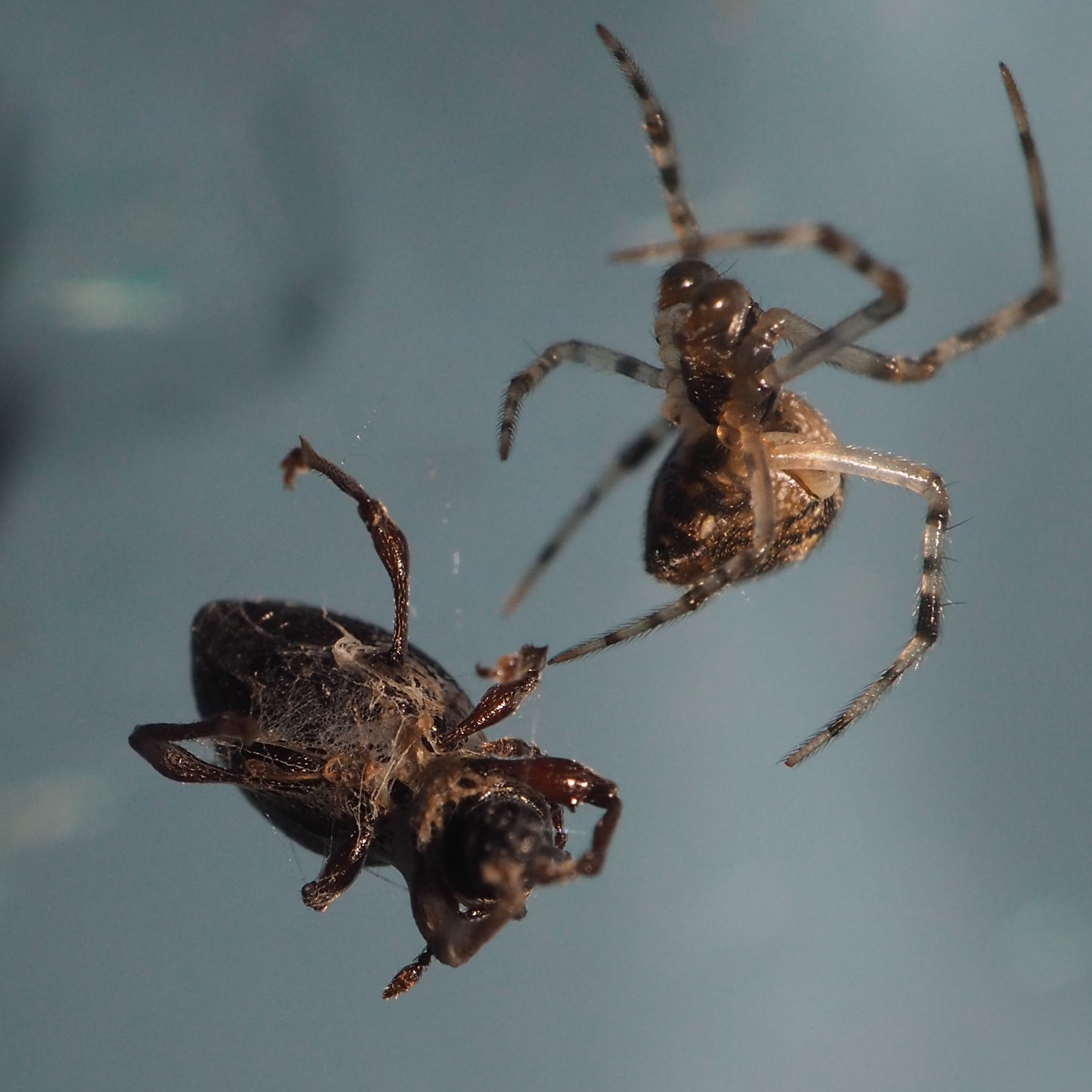
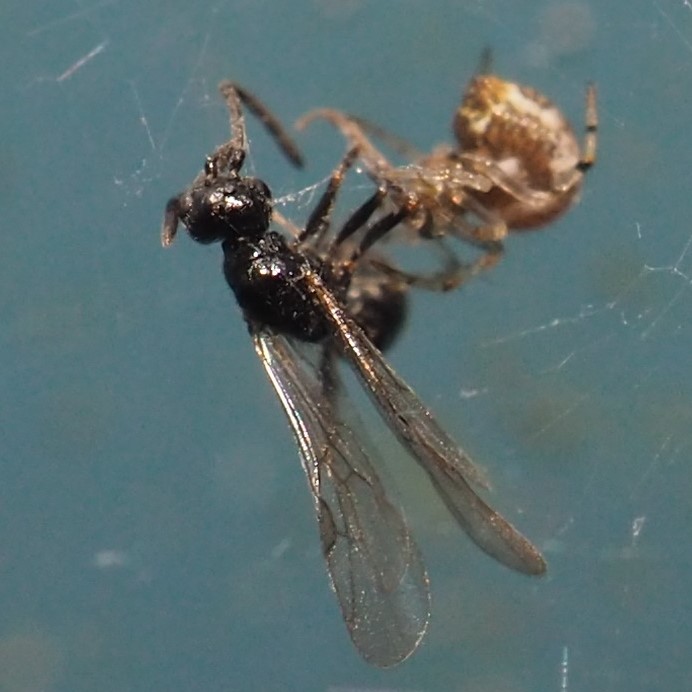
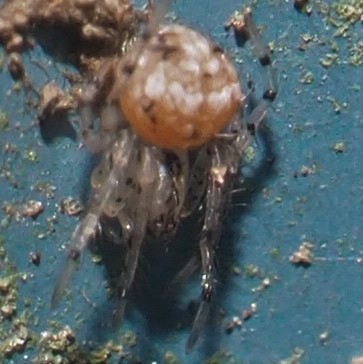
We're back into the Wasps. This first one, the Bee Wolf, is only about a centimeter long. (It gets its name from its habit of killing Bees.) The give-away is the ring of four little marks around the back of the head. (The fourth one is on the hidden side of the head.) Picture 2 is a frontal view. If you only saw view 3, you would be puzzled since quite a few little Wasps have that pattern of stripes.
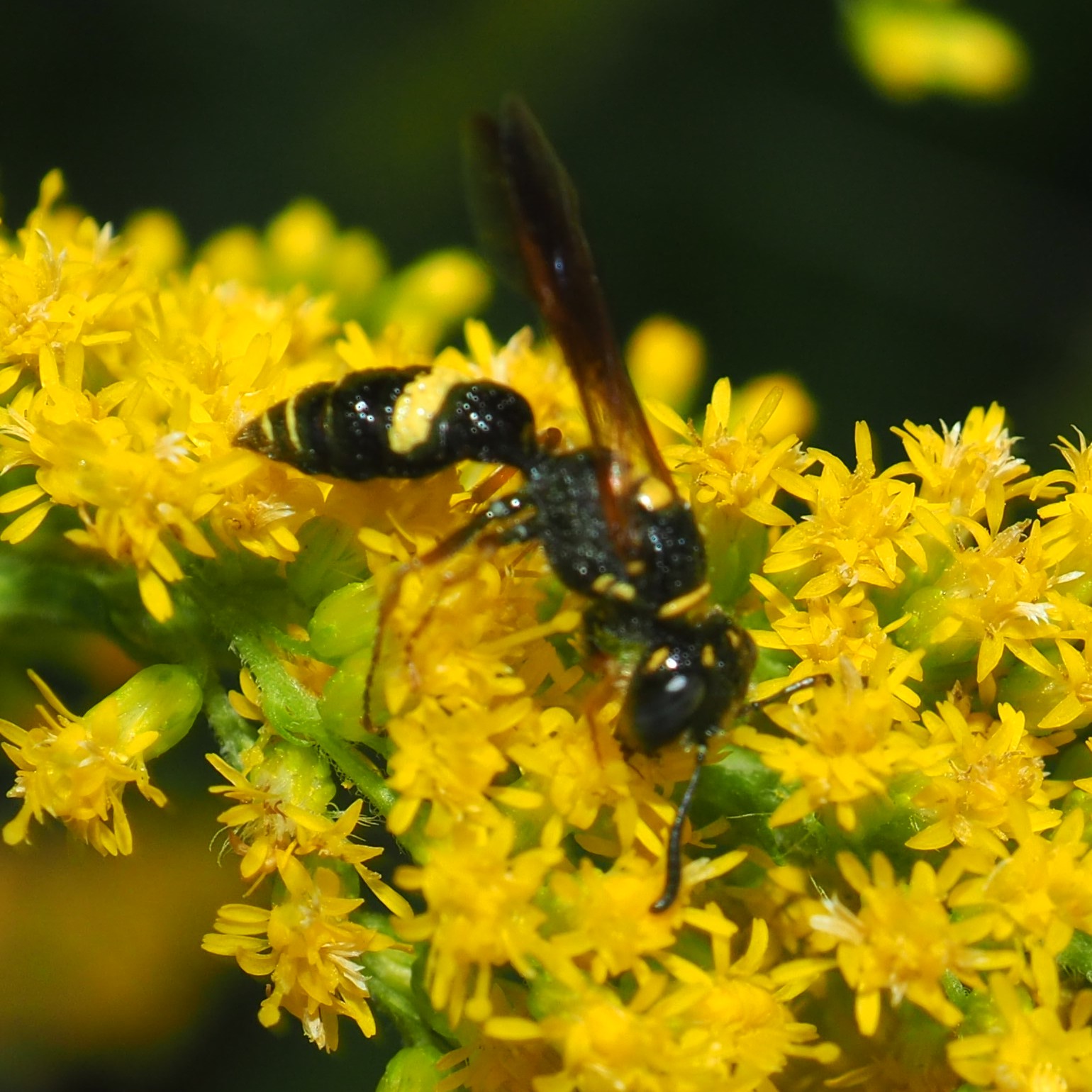

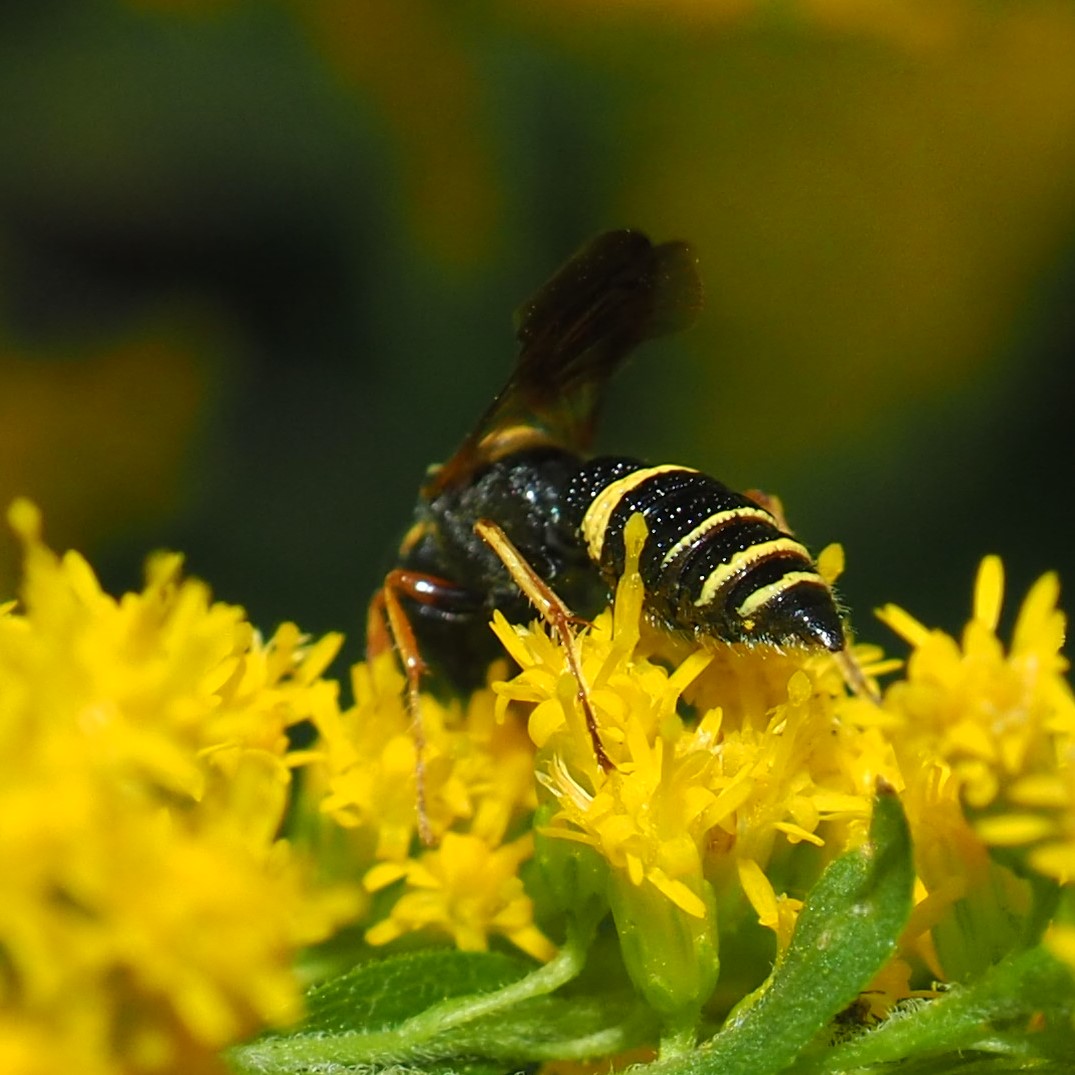
The little "butterfly" design in the middle of the face and the pattern of stripes on the back give this Wasp away as an Aerial Yellowjacket Dolichovespula arenaria (long-wasp aerial).
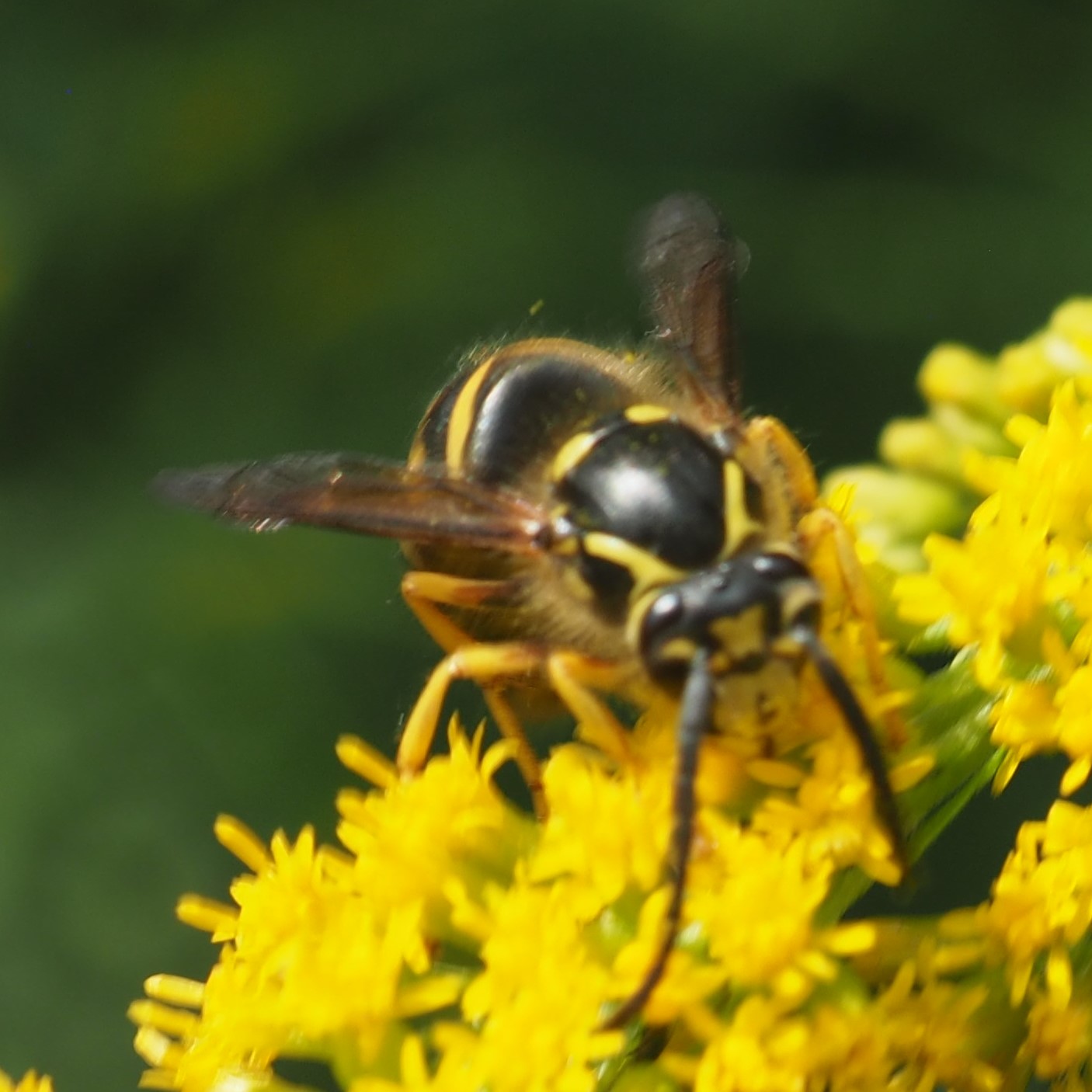
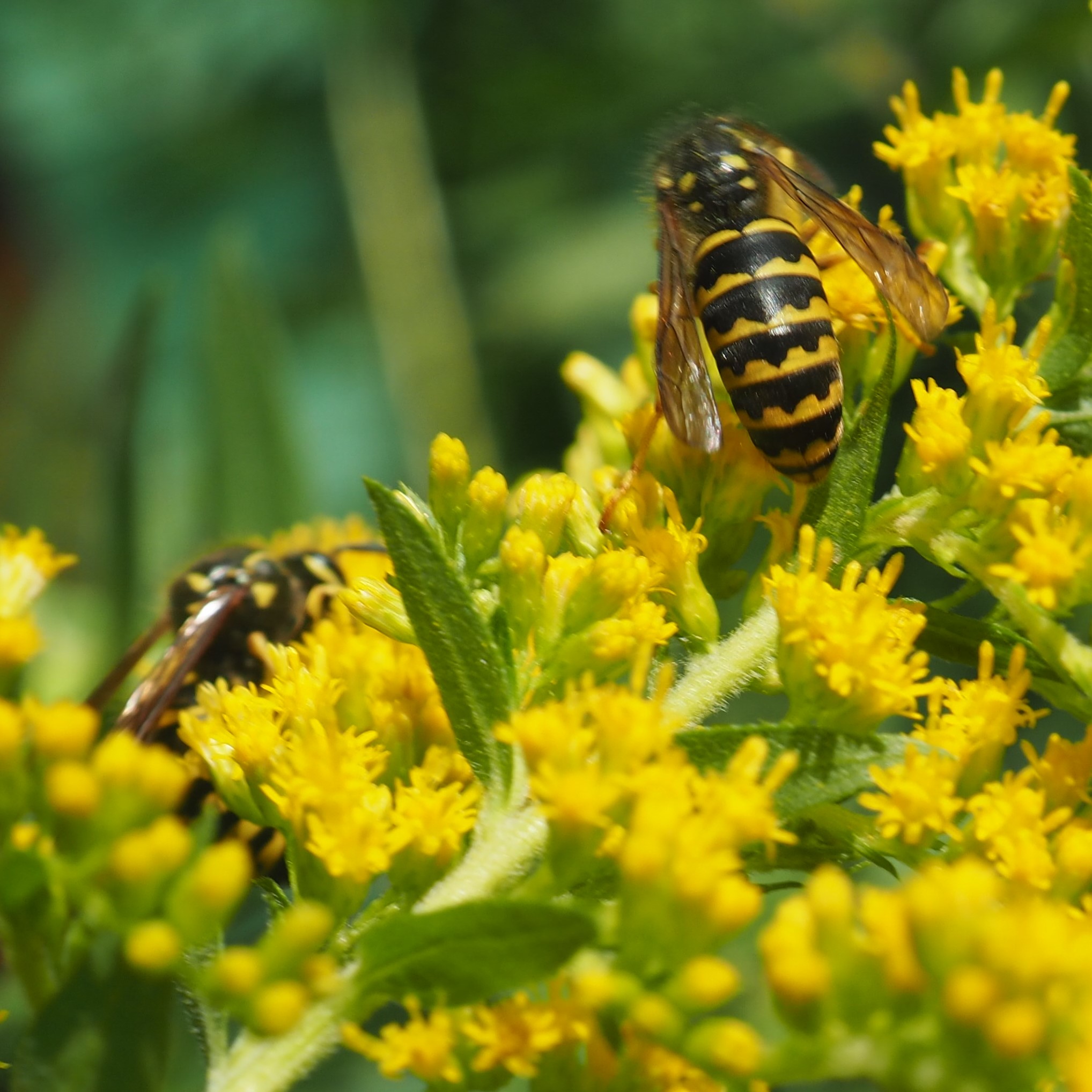

Here is one we've seen before. This tiny black wasp with the white markings (white comma on the first abdominal segment) is our Eumenes fraternus. Picture 2 is a rear side view, while picture 4 is a silhouette.
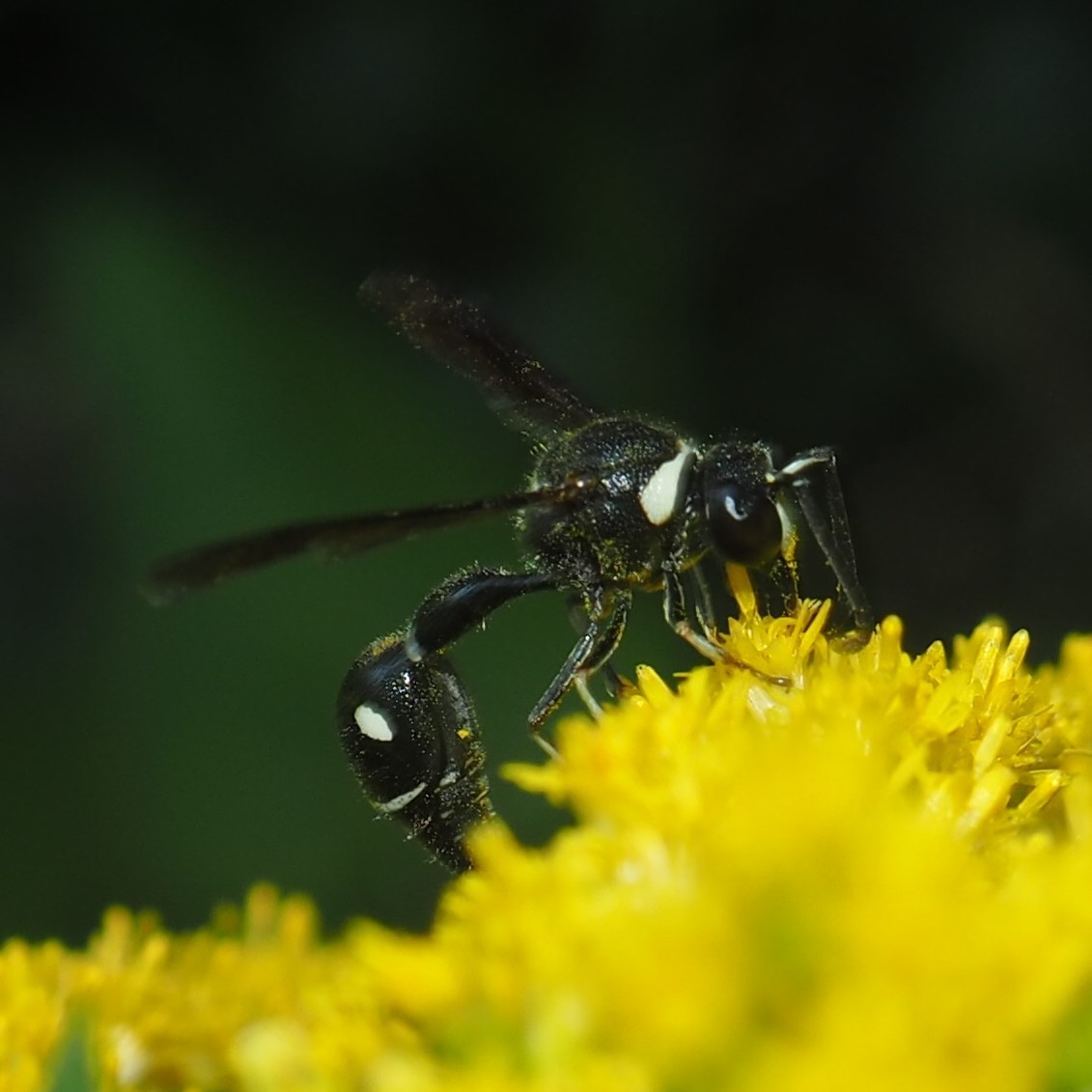

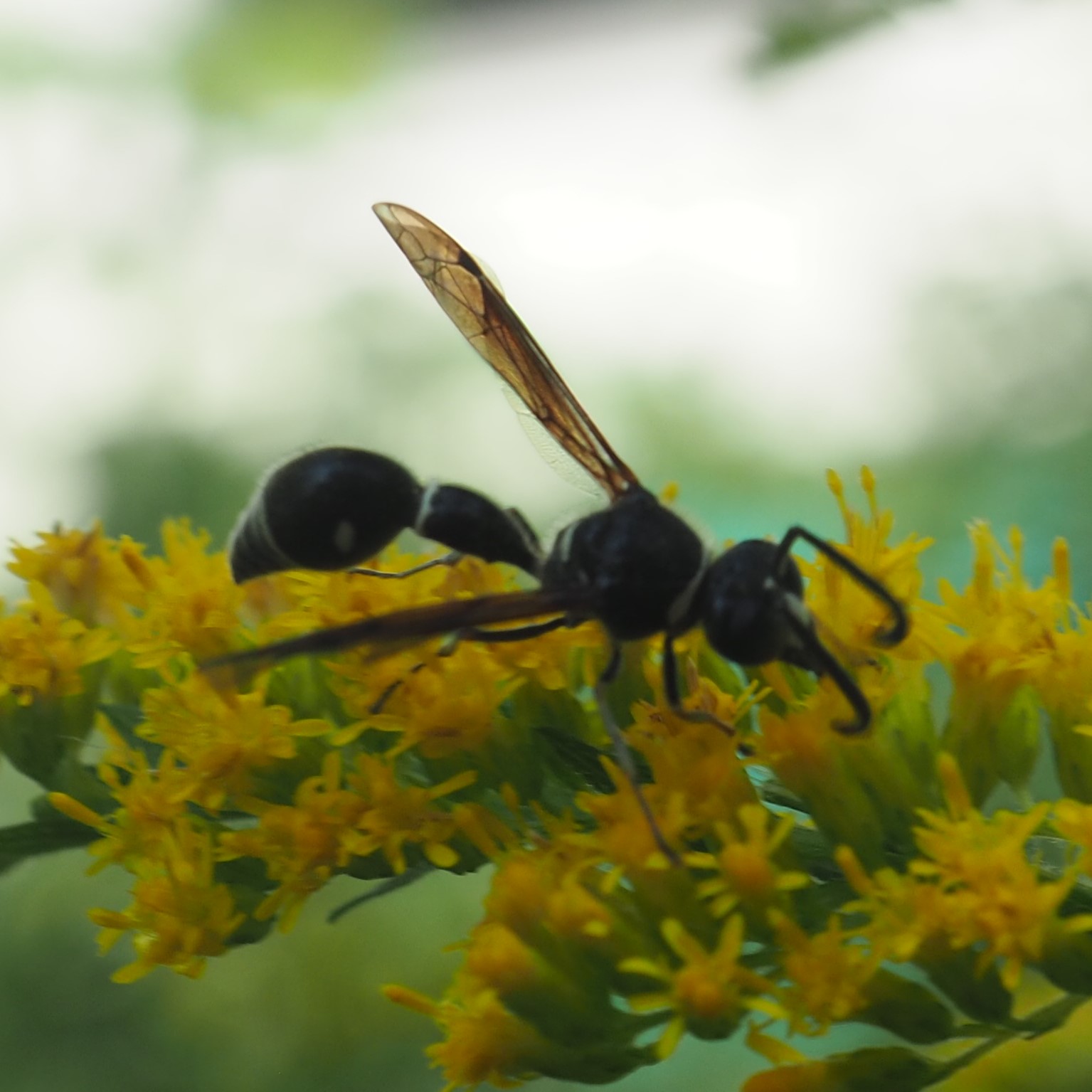
The aerial view of this little Wasp shows the wings making a ninety-degree angle between them. Almost all the time, if you saw one of these and said it was a "grass-carrying Wasp", you'd be right. The second picture is from the side.
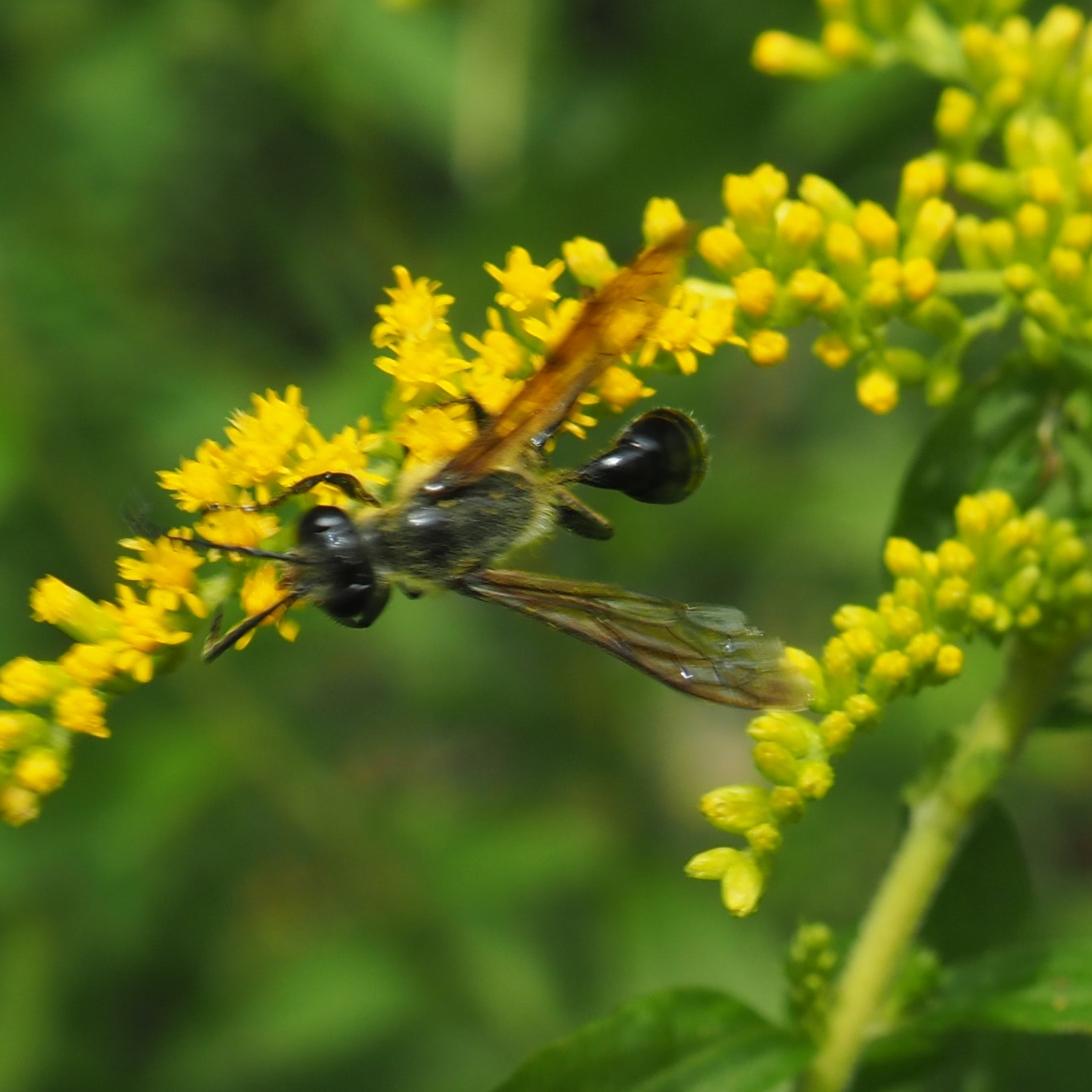
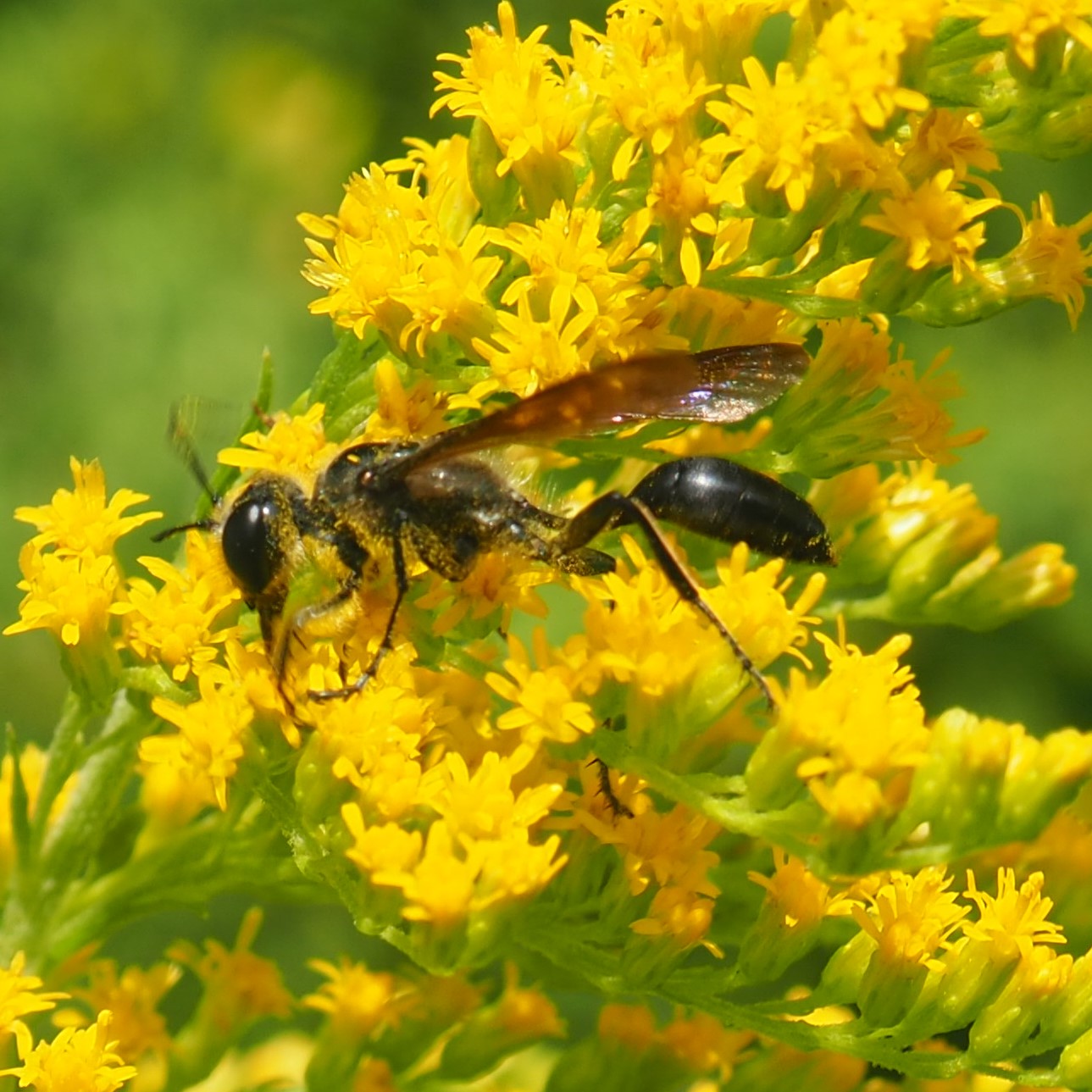
This little wasp with the "sailor-suit" collar is probably in genus Leucospis. The yellow on black markings on this wasp show it is a European Paper Wasp. I think the face shown partially in picture 3 has a roundish marking on it. If it were more shield-like, I would have said it was a male, but as it isn't, I think it's a girl!
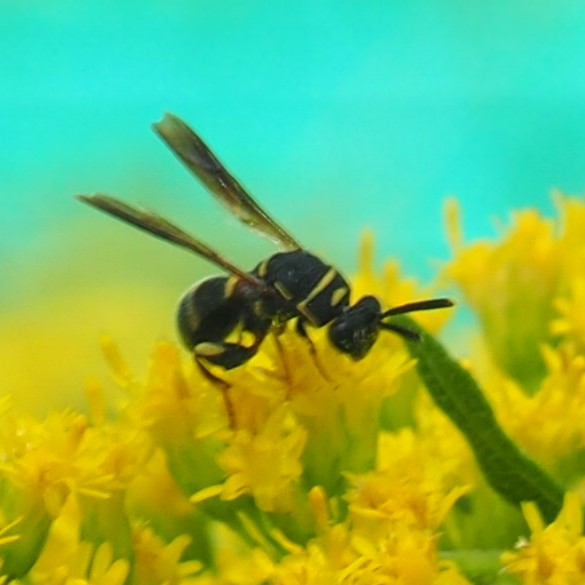
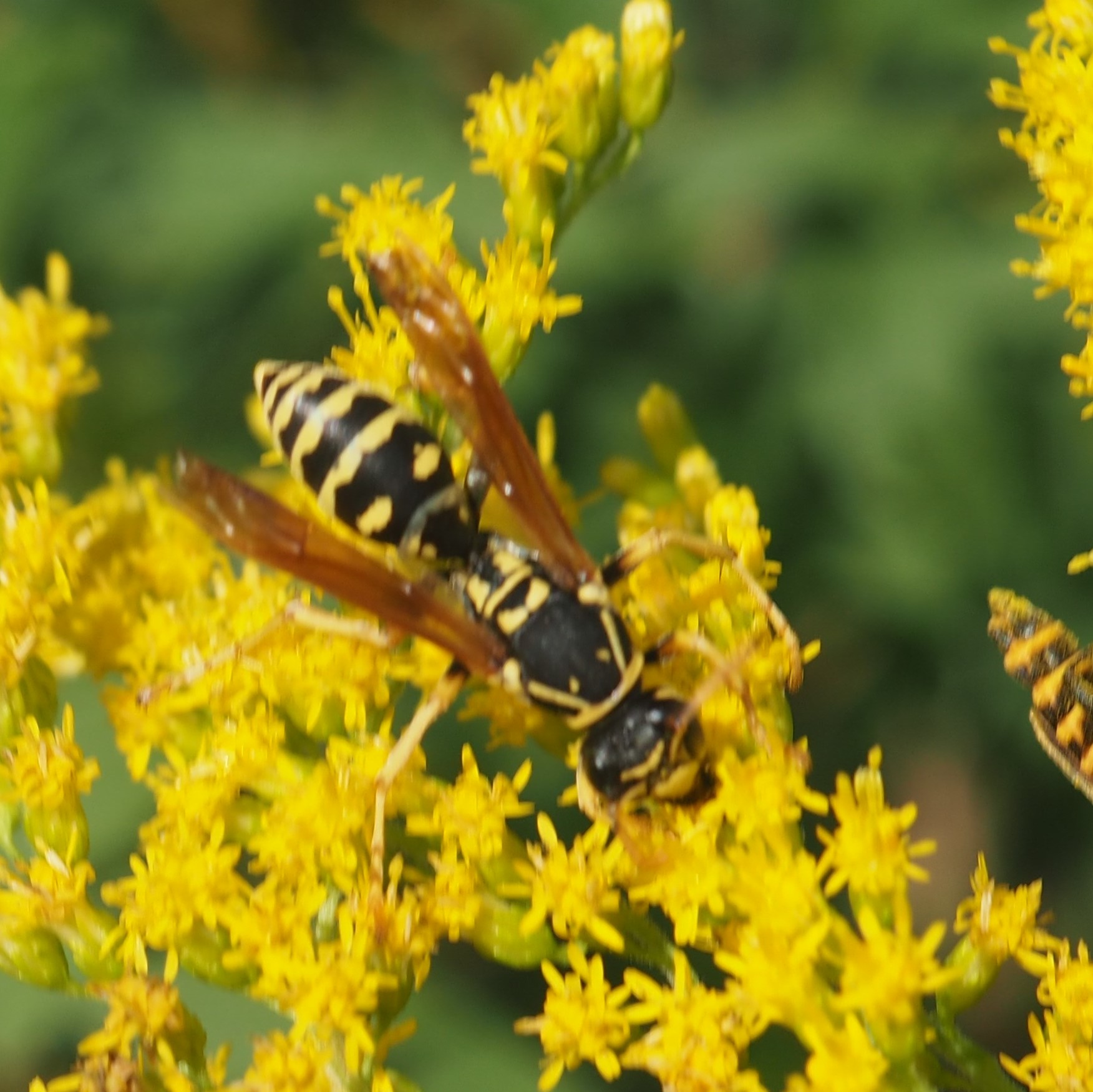
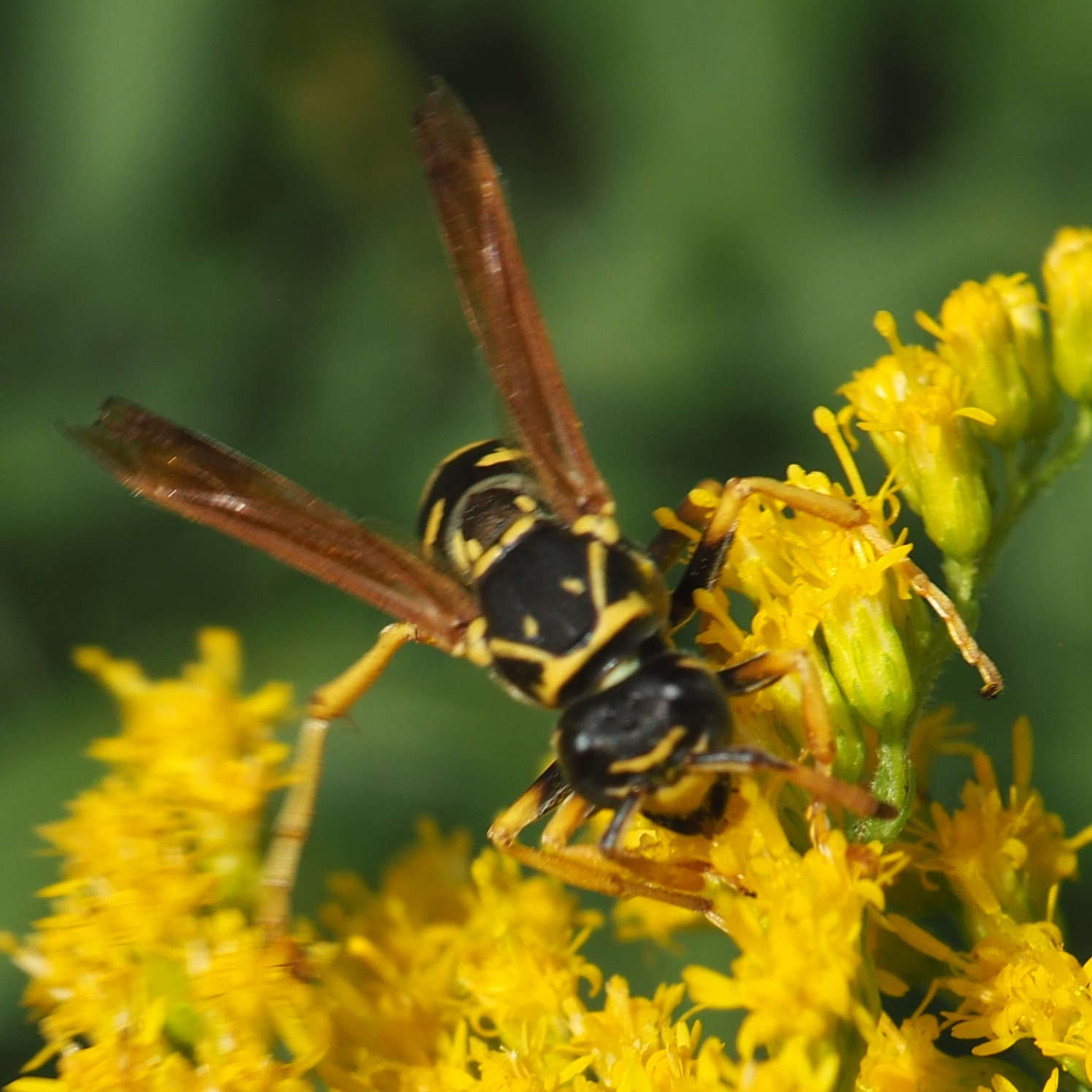
Here's our other Paper Wasp, the Northern or Dark one, Polistes fuscatus. Here you can see its facial "shield", so it's a boy. In picture 2, you can see the face plate is almost round, so it's female. It is a lovely Wasp, only intent on getting into that Goldenrod nectar (and not even noticing that it is moving the pollen around from flower to flower). These are great pollinators, like all the Wasps you have been seeing in the Goldenrod. Mary-Ann Cateforis explained to me very clearly that plants with pollen easily moved by pollinating insects do not let much of it get into our air space, unlike plants like Ragweed with its air-borne pollen, which causes many of us so much allergic trouble. So Goldenrod good. Ragweed bad... Thanks again Mary-Ann.

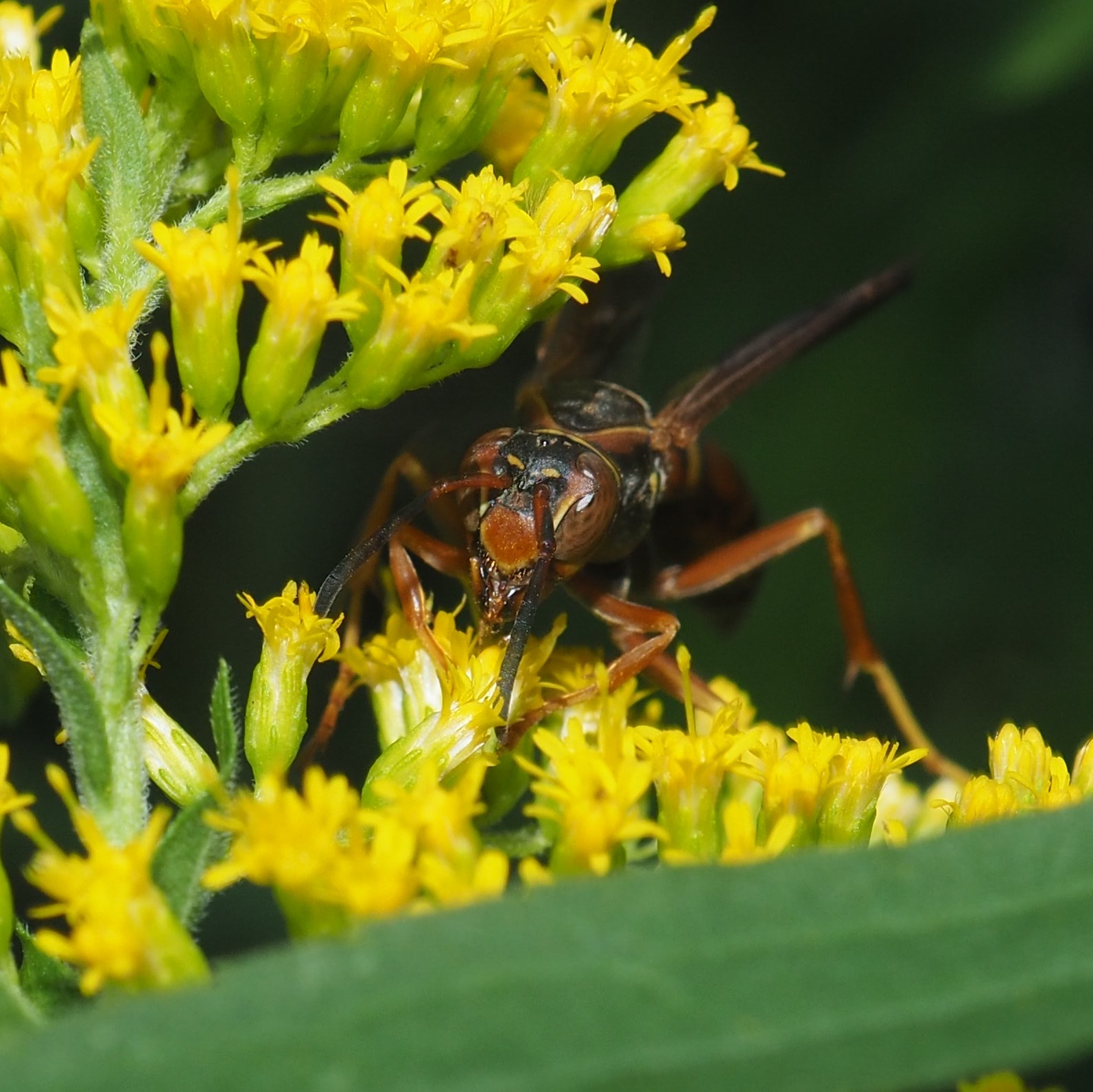
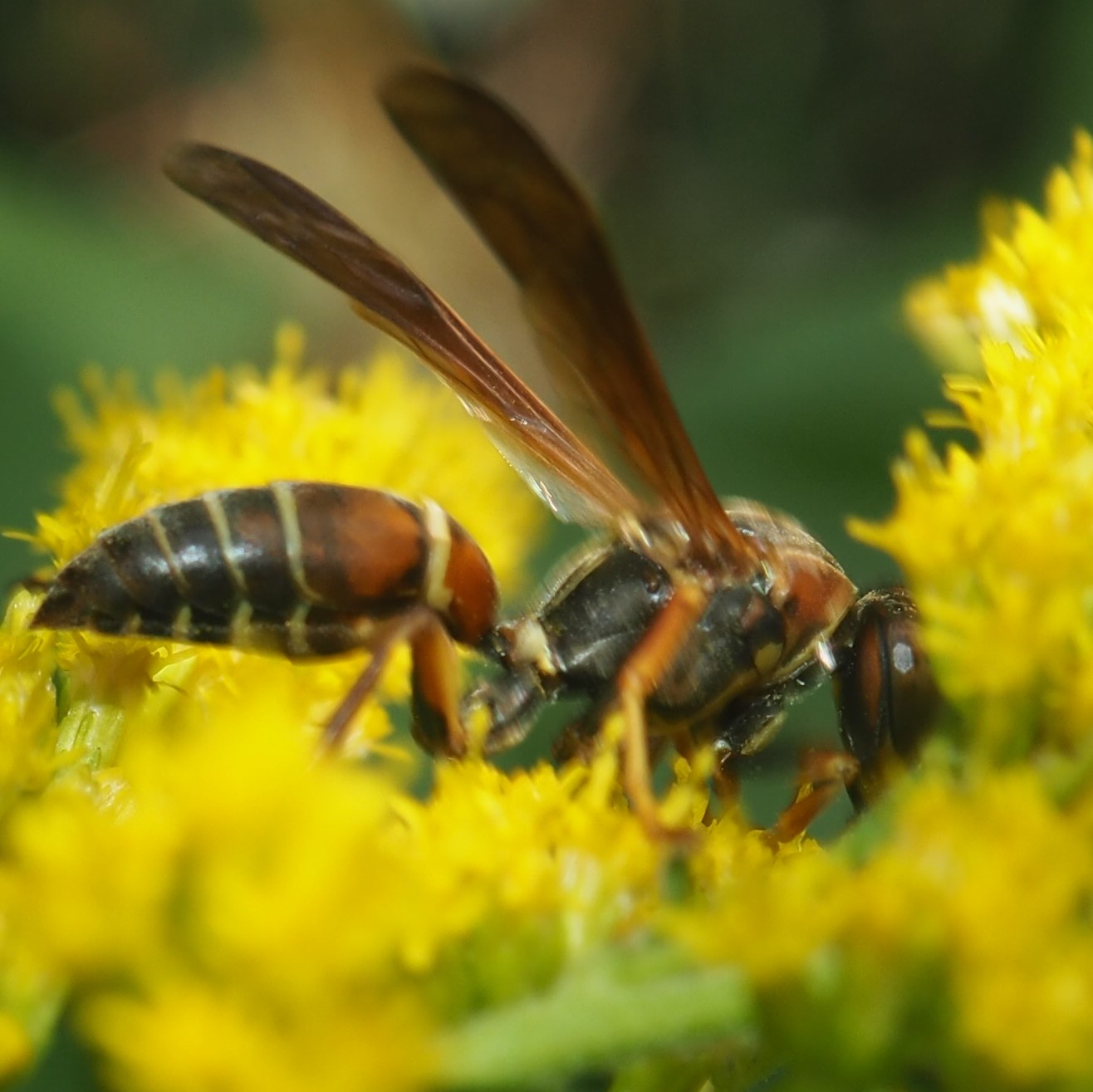
The most piquing of the Wasps this week was this very large one, which I haven't got an ID for. It takes on many diverse and some "menacing" shapes, like something out of Harry Potter. If anyone recognizes it, please let me know.
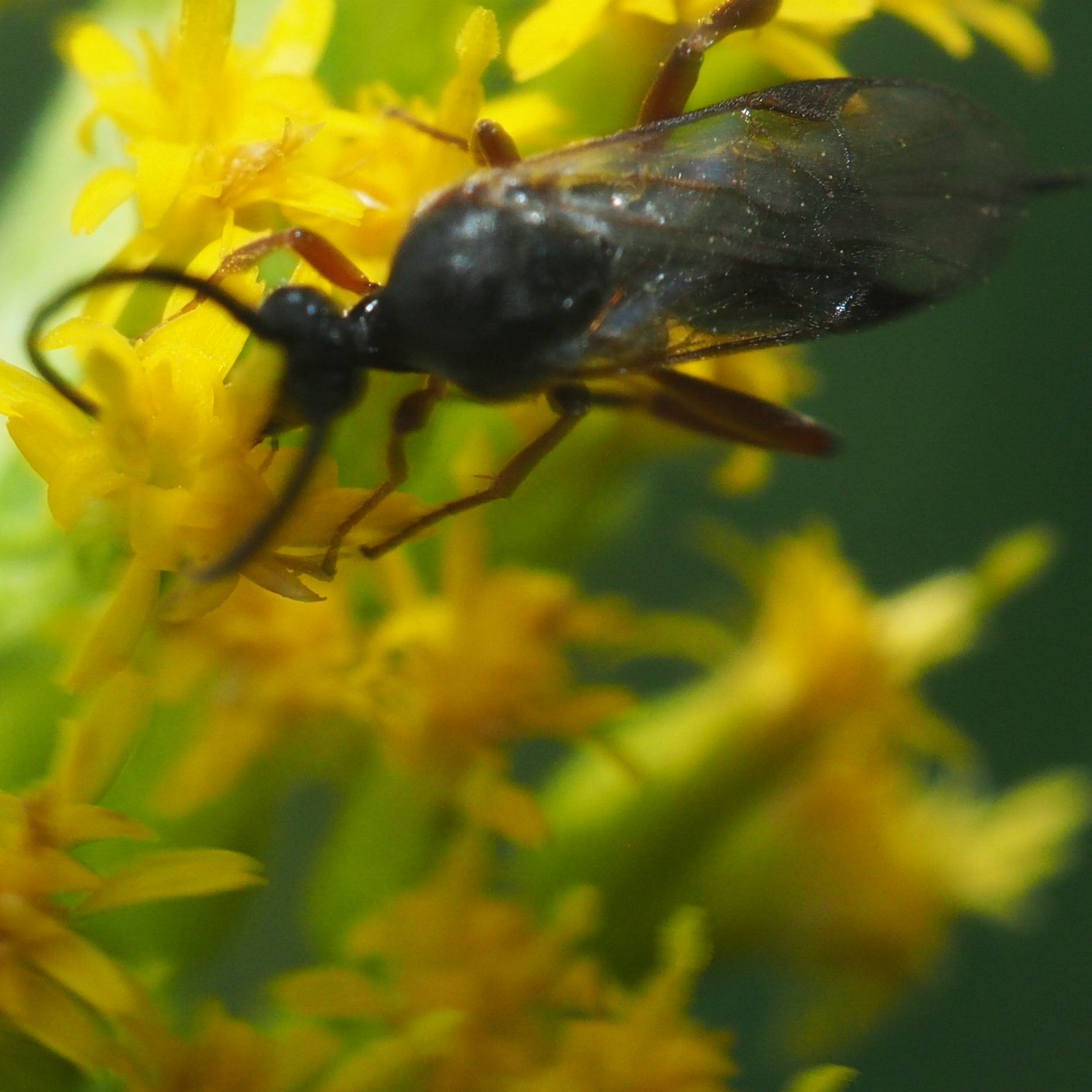

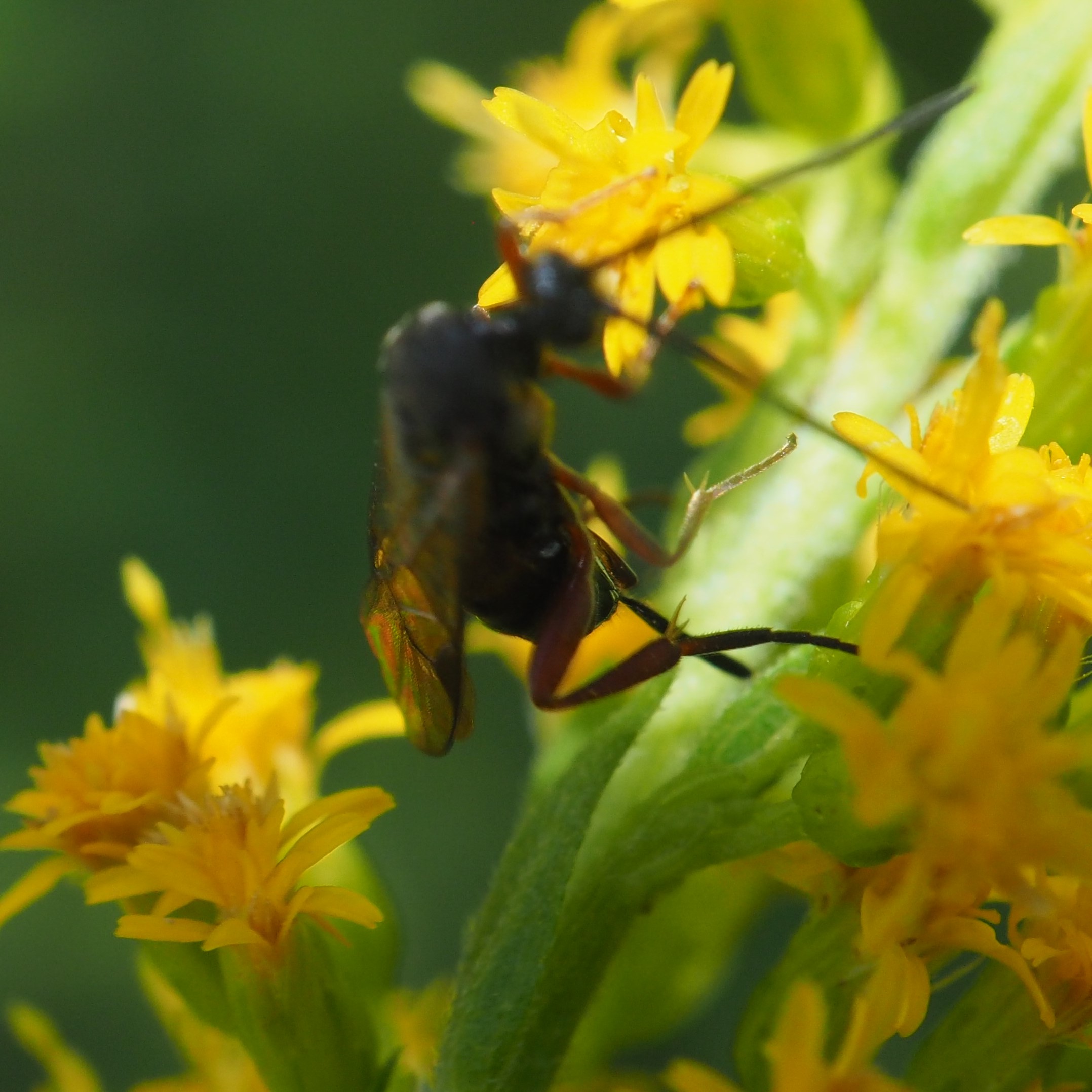
Here are some of the smaller Wasps that I don't recognize.
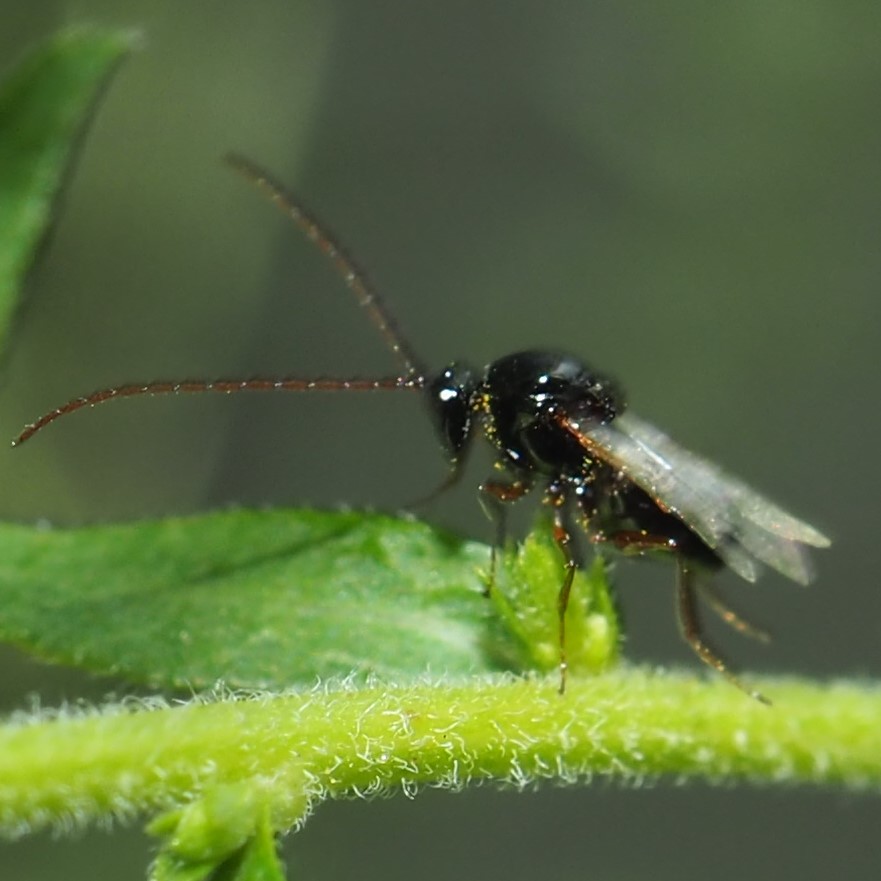
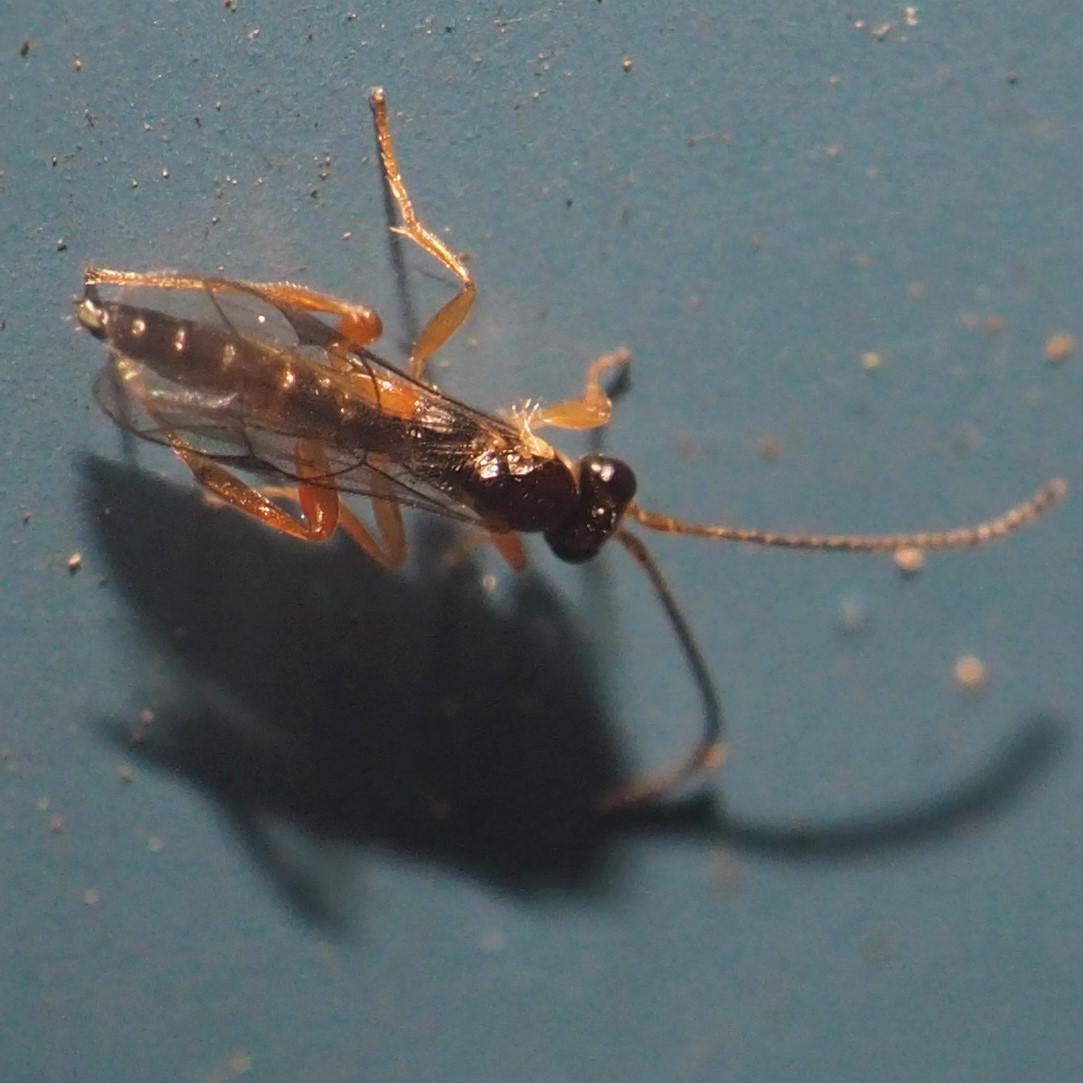

Let's go visit the Pond. Yes, it looks just as green as it did last week. But when I went out to call the fishes to supper and sprinkled a bit of fish flakes on top of the water, here you can see how they come up just under the surface (they like to slurp from underwater) and you can hear the slurping. That was a long sentence but it was a long process too. Here are just a few of the more nearly recognizable pictures. You'll see some of the same fishes in many of them.
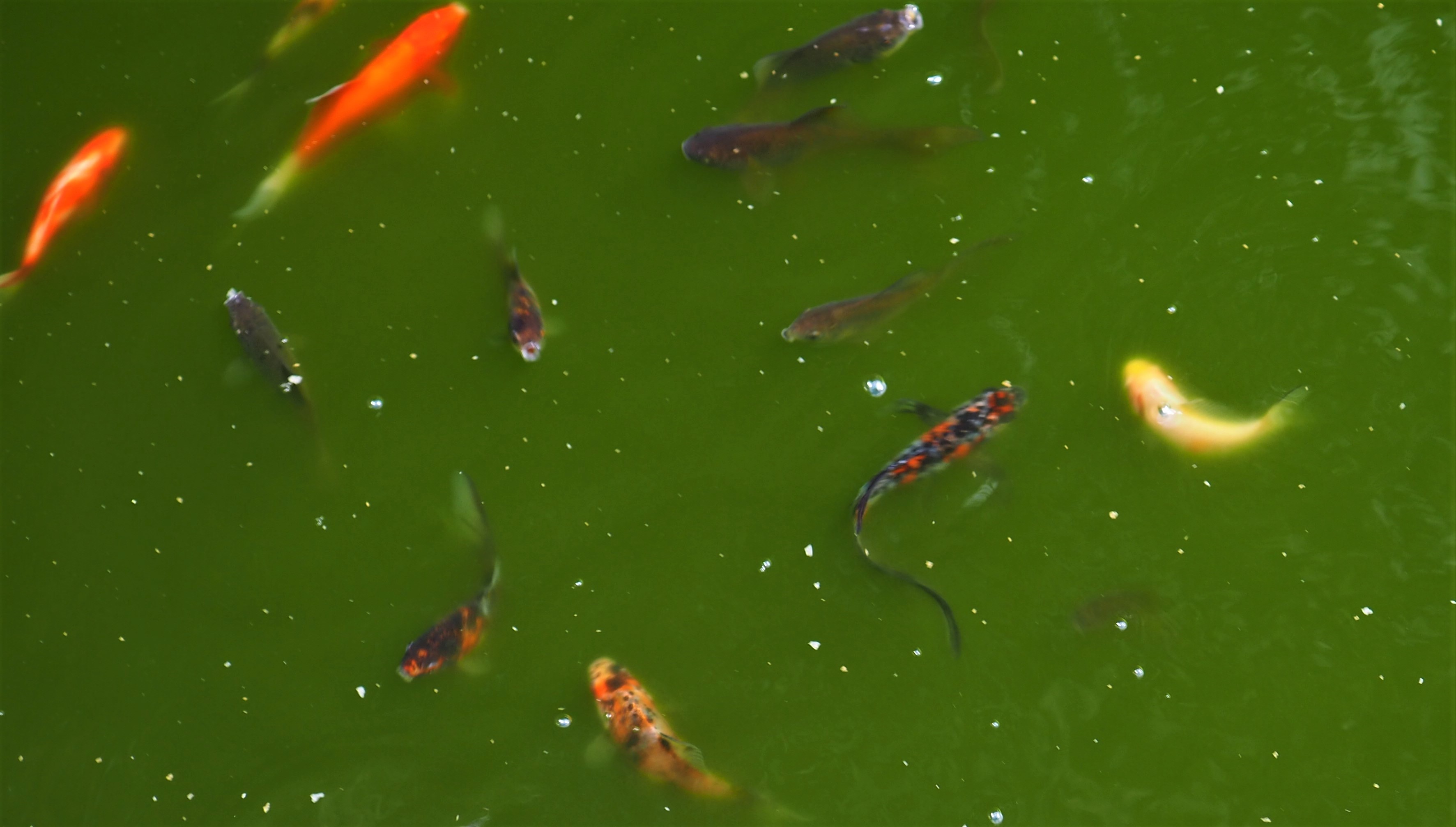
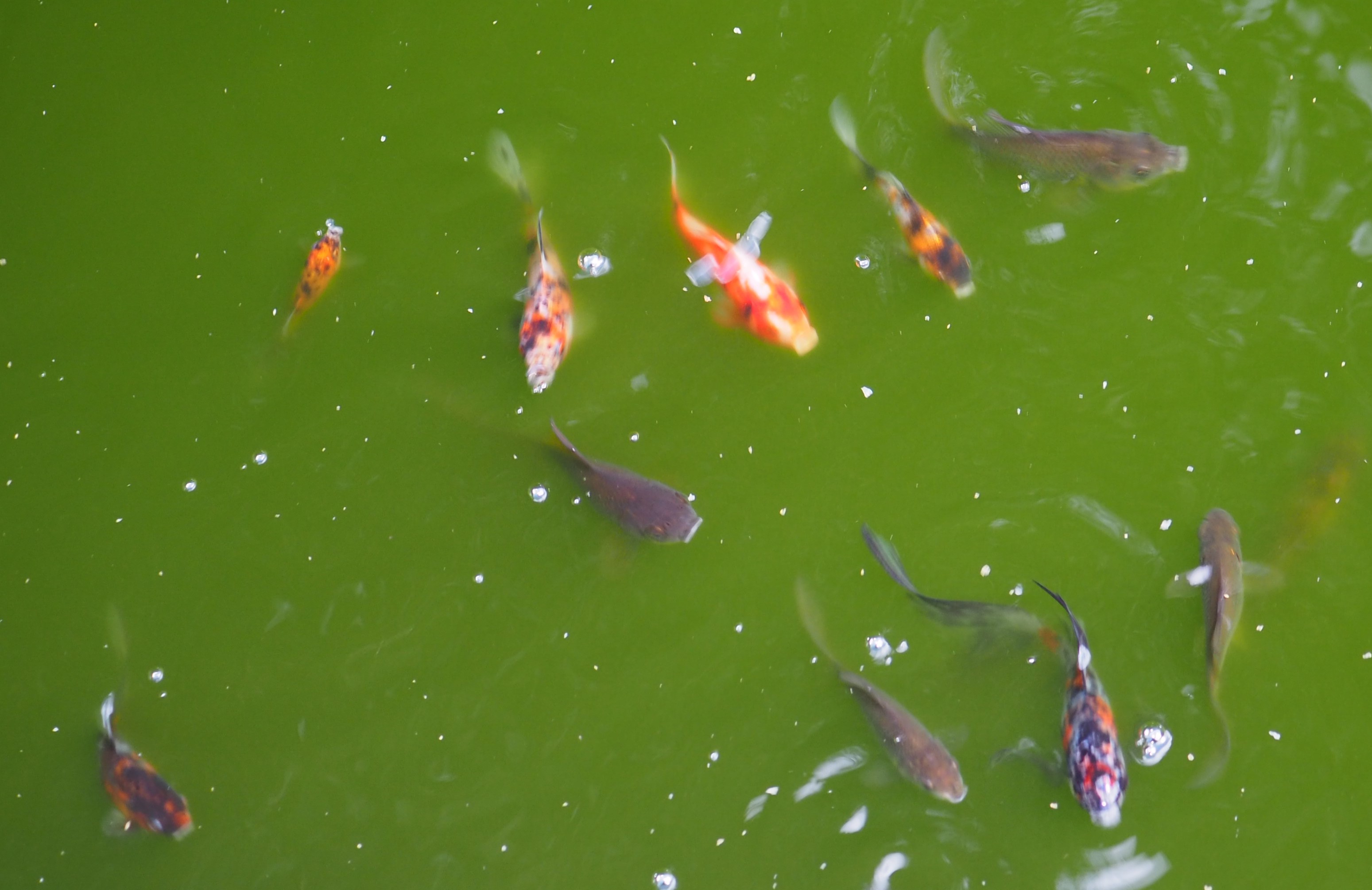
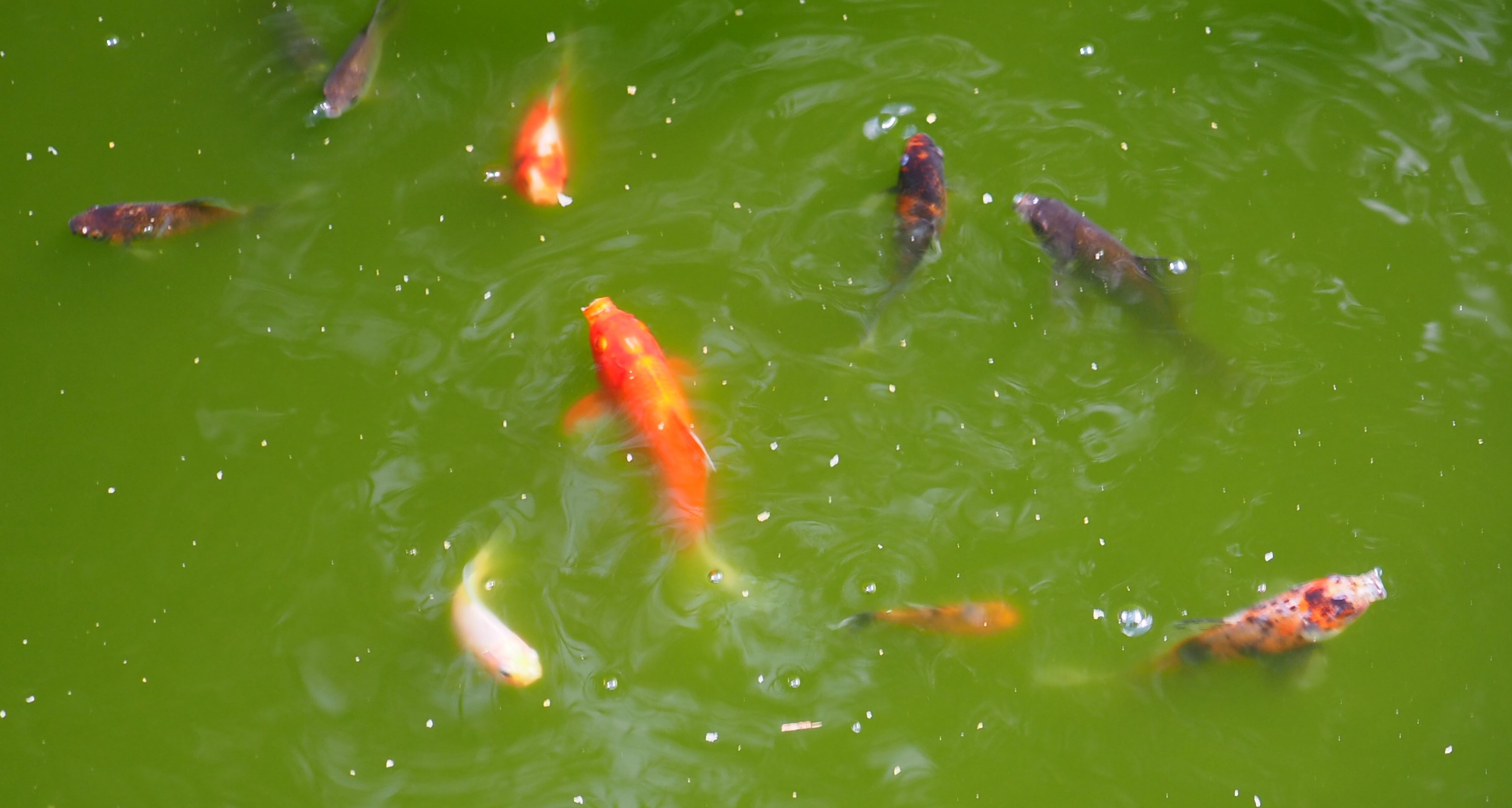
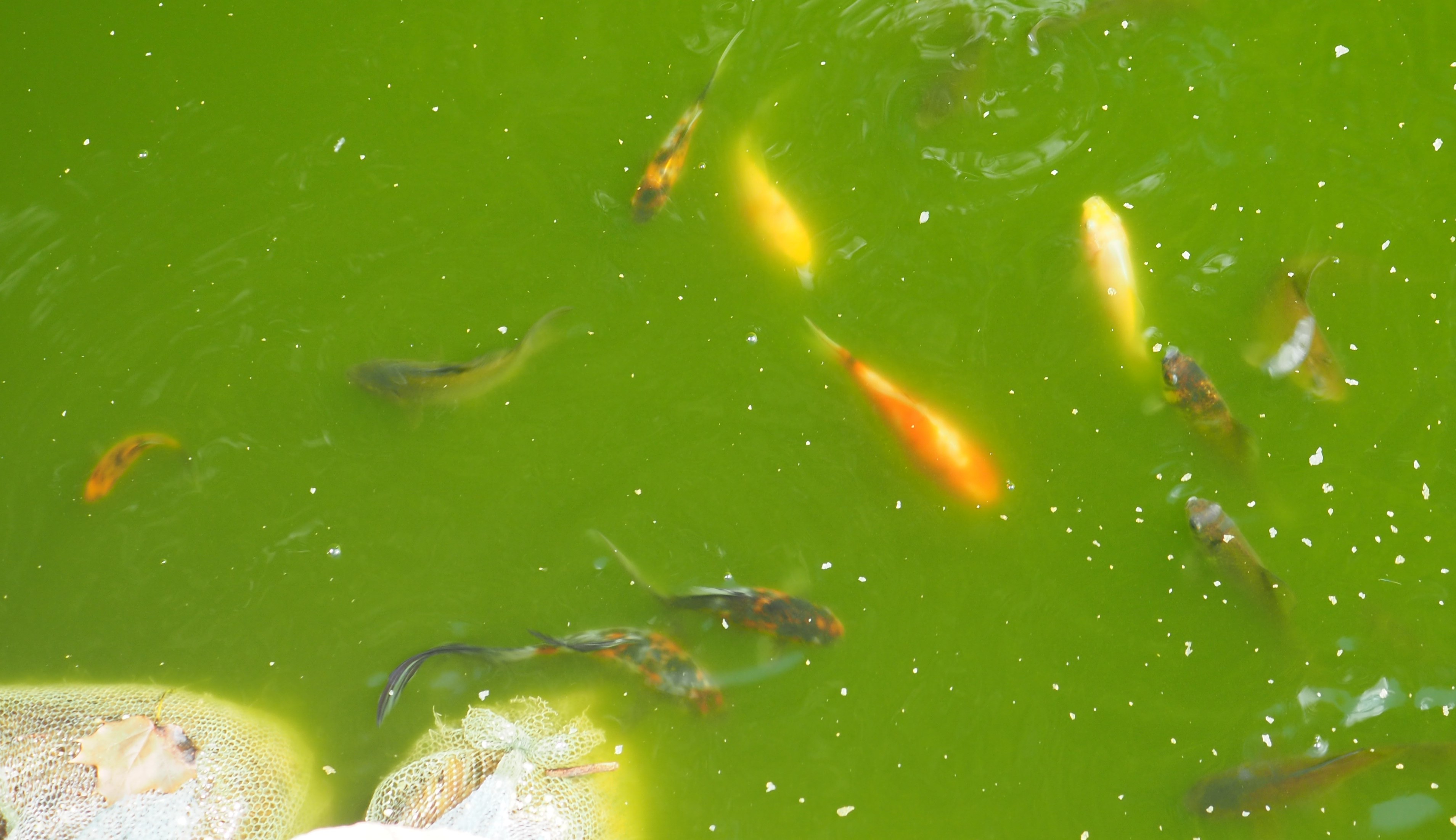
So it has been quite a week, with all the new life that comes as a change happens in the environment. Here I'm talking about the emergence of the Goldenrod and all the forms that appear to gather life from it. But it's true for all kinds of environmental changes. I keep wondering when this heat will start to back off for a while. It has been an experience trying to keep active during it, and maybe we will be stronger then. That's the best case! Look, everyone get as much rest as possible and stay positive. The weather report looks as if we may be 7-8 degrees F cooler by Friday. We'll see! As always,
Love, Martha
Back to August 22, 2021
Forward to September 5, 2021
Back to main menu
copyright Martha O'Kennon 2021

























































































































